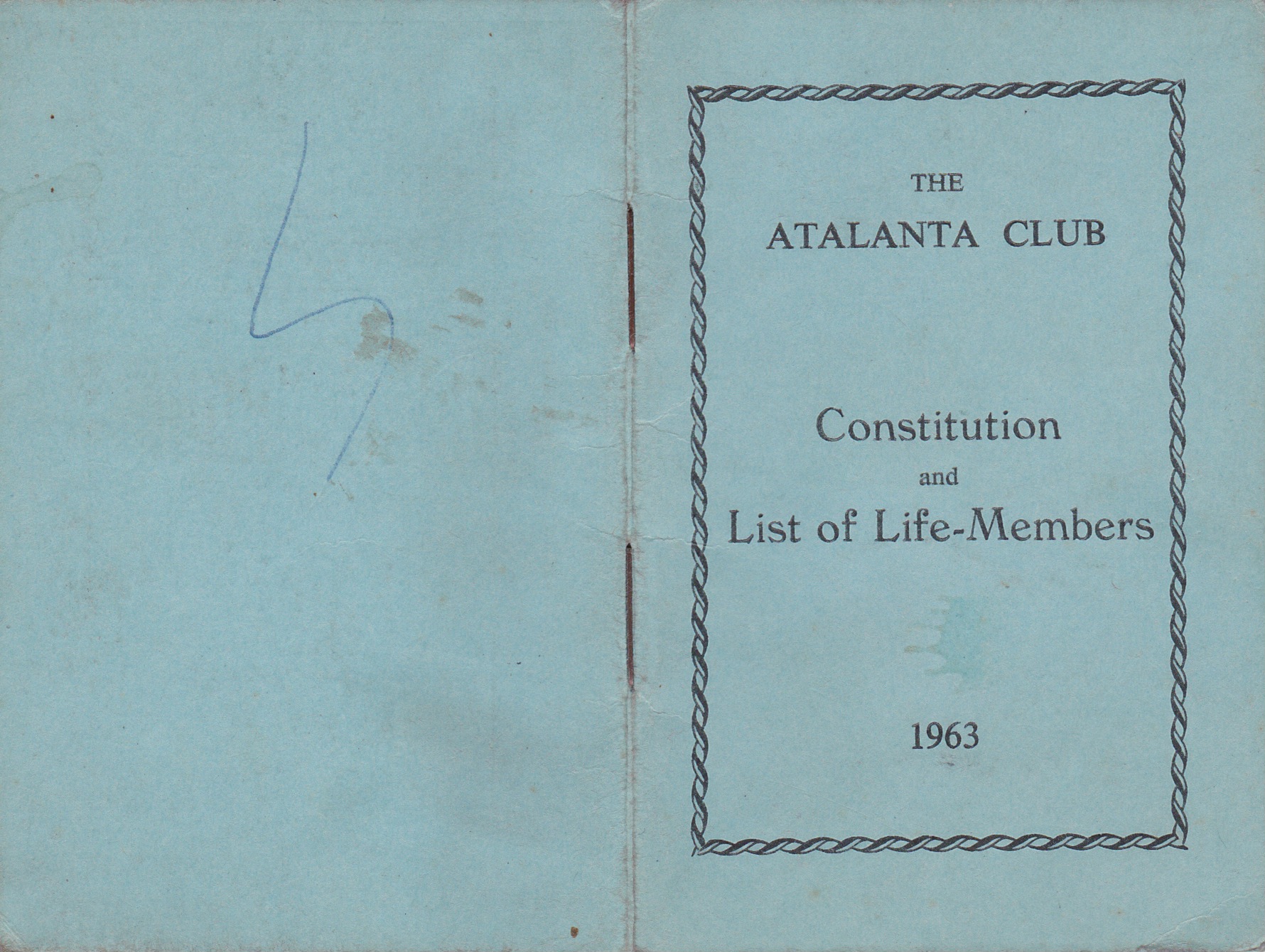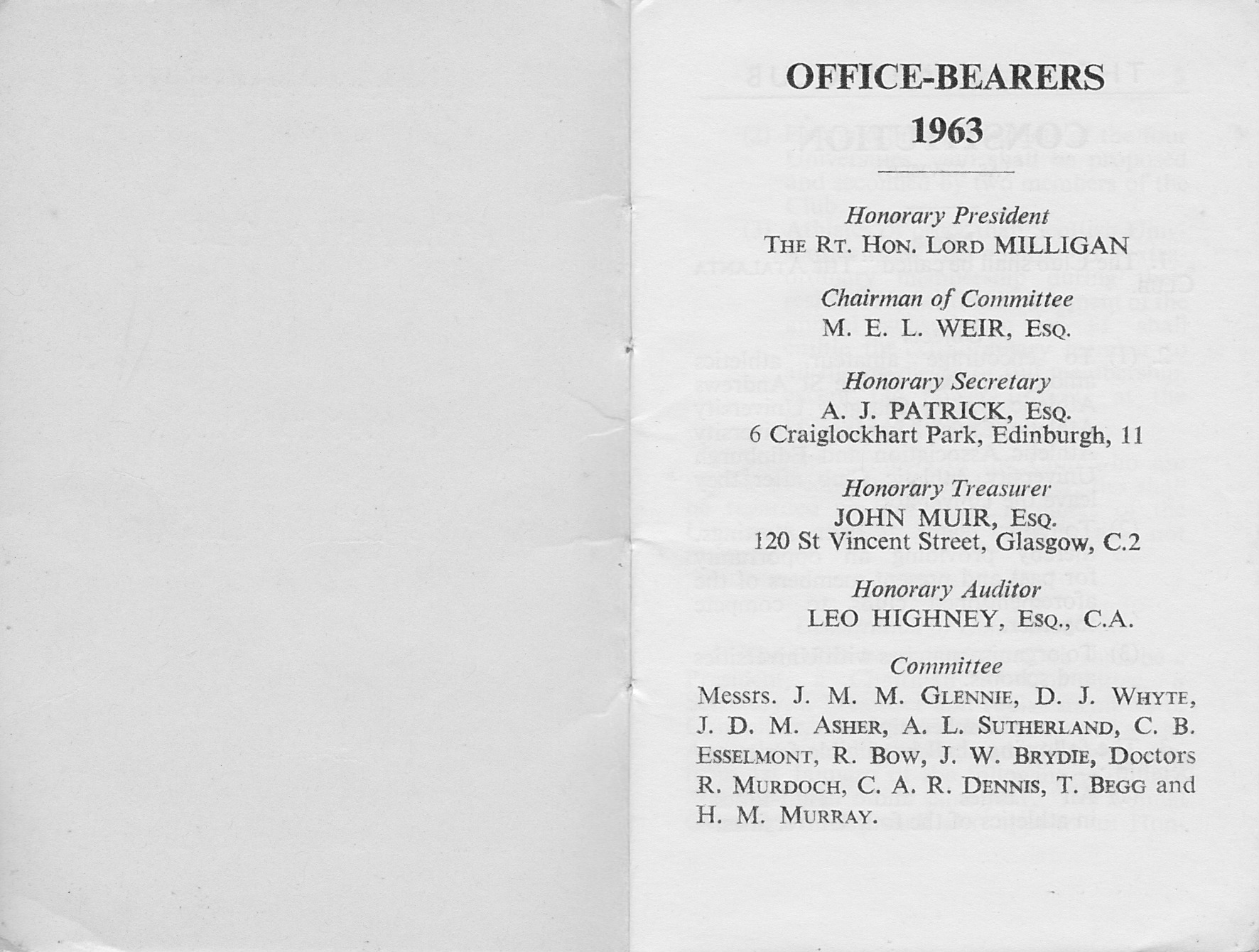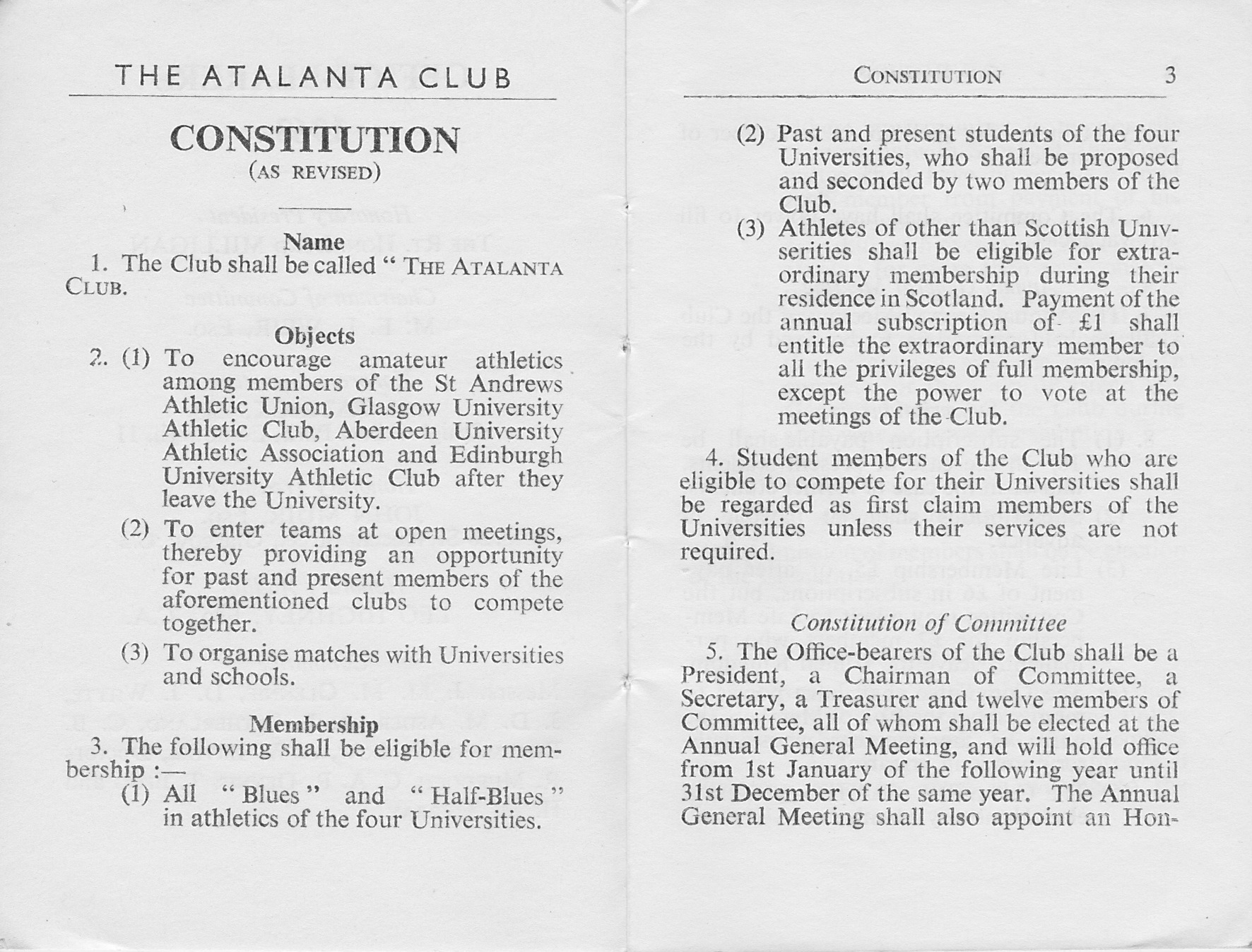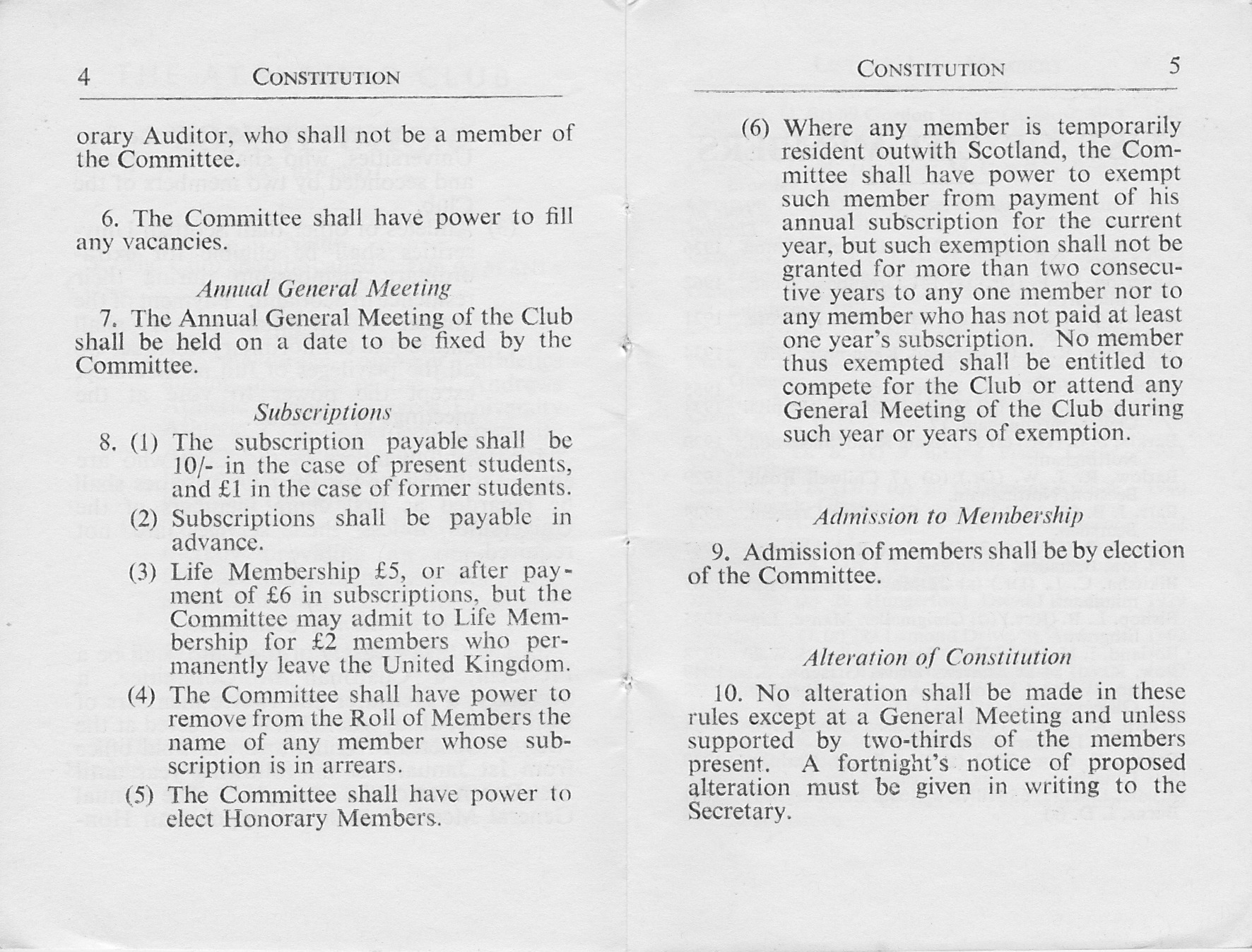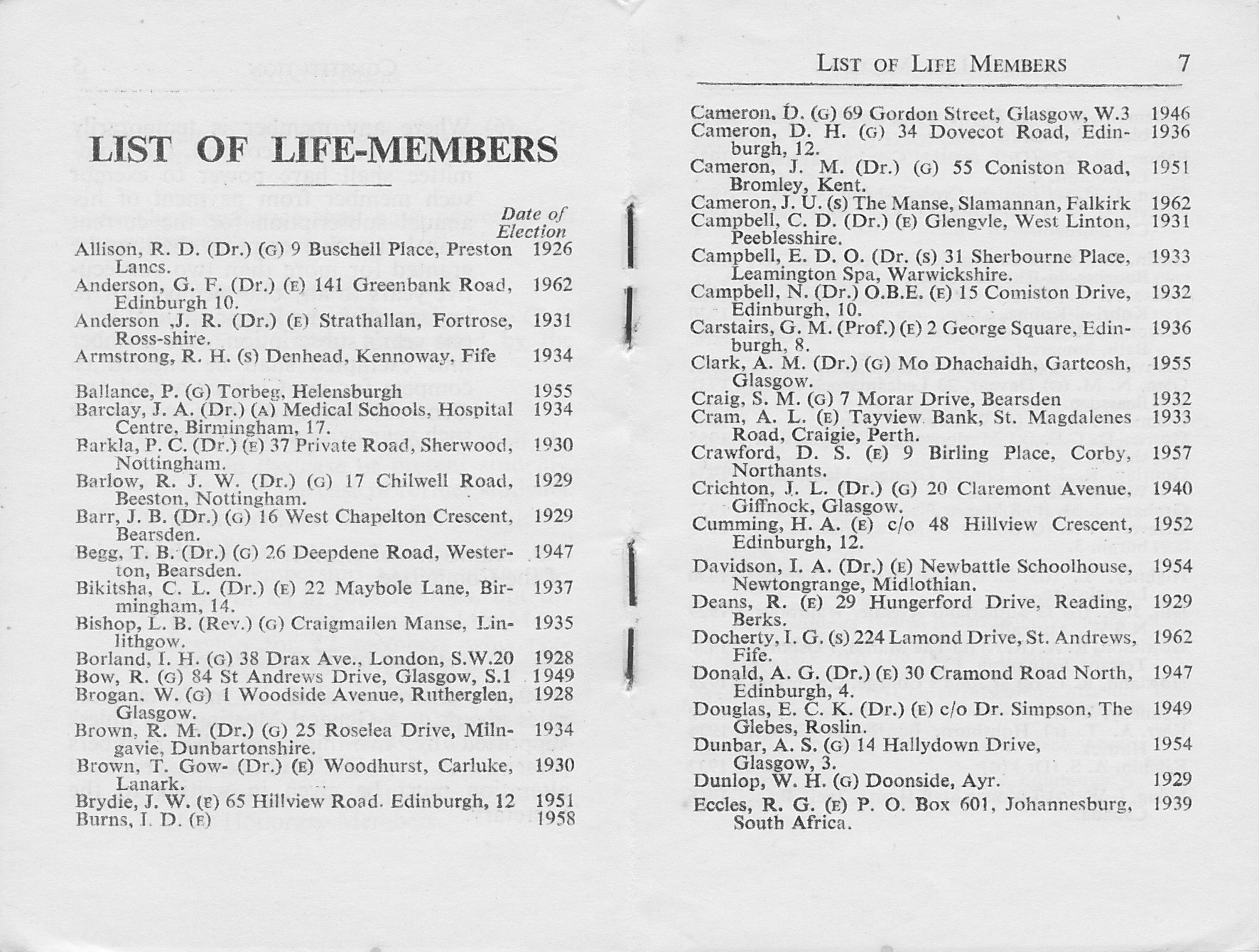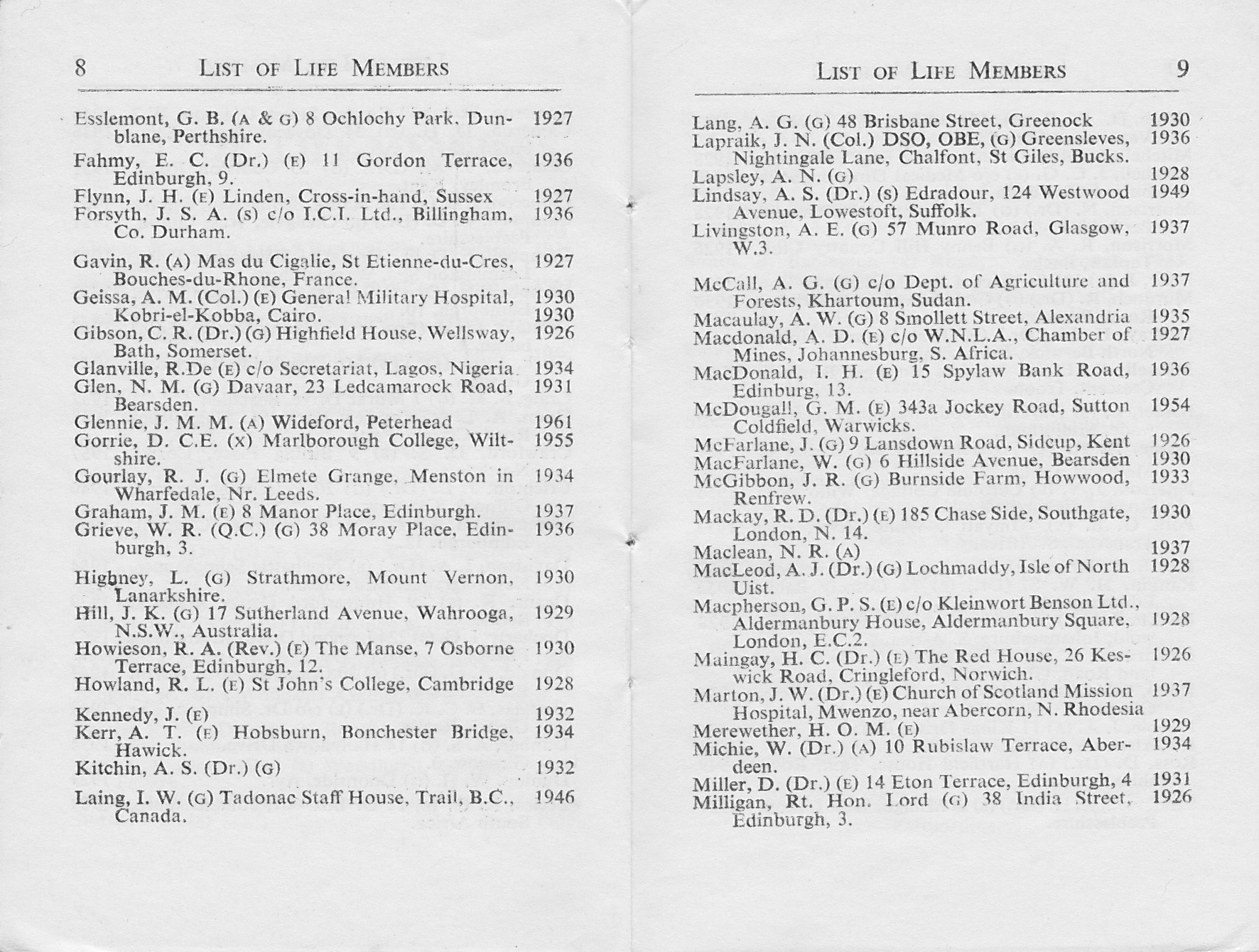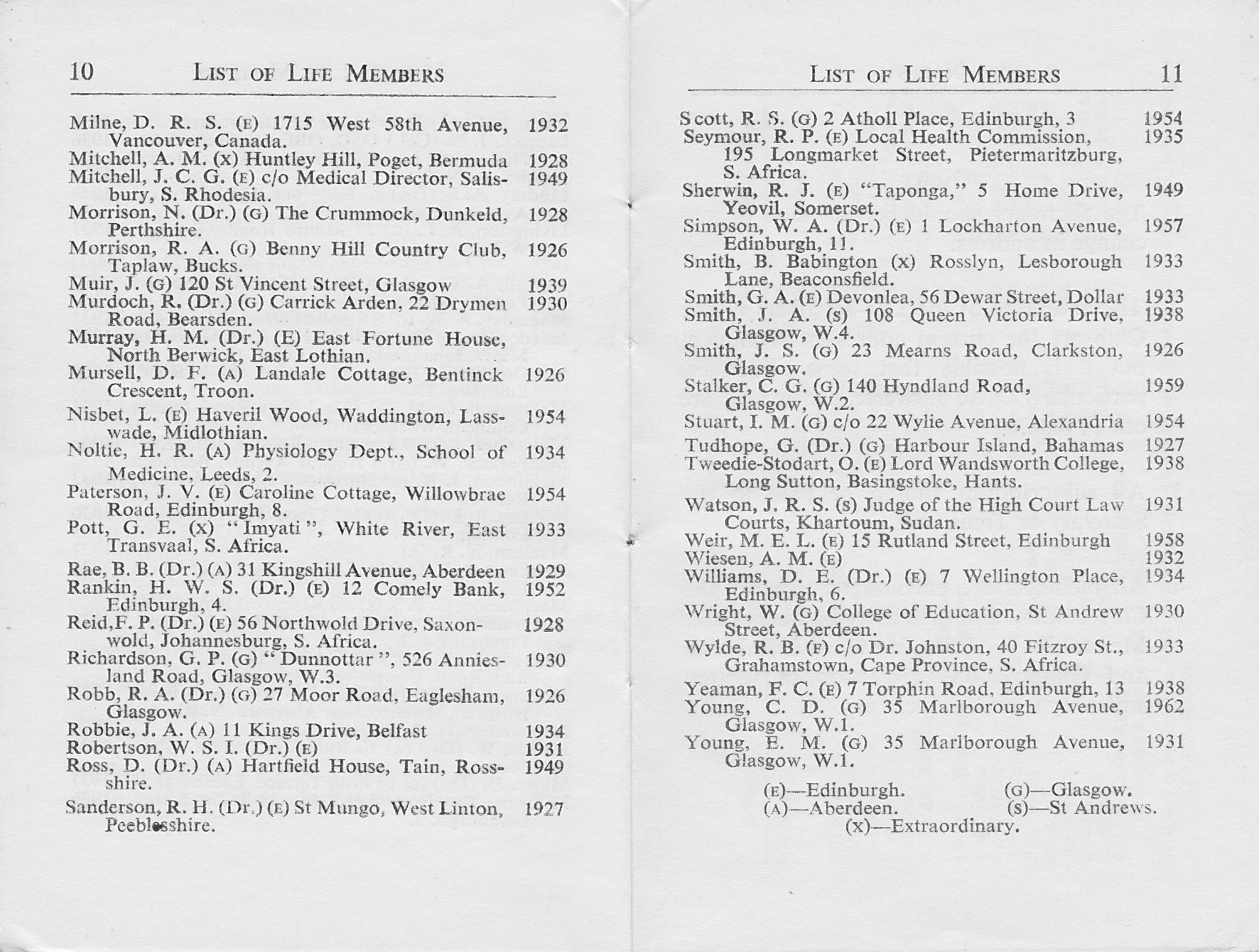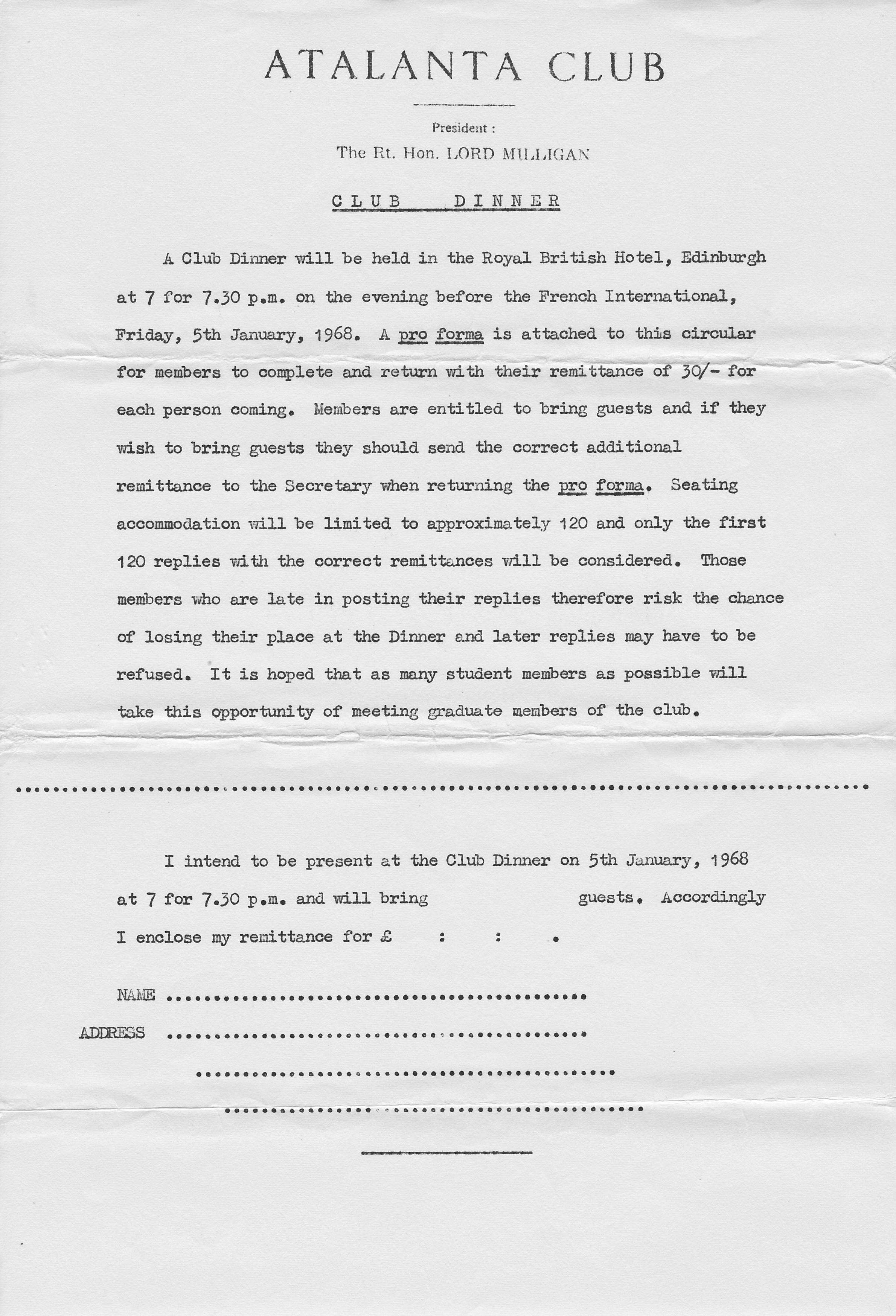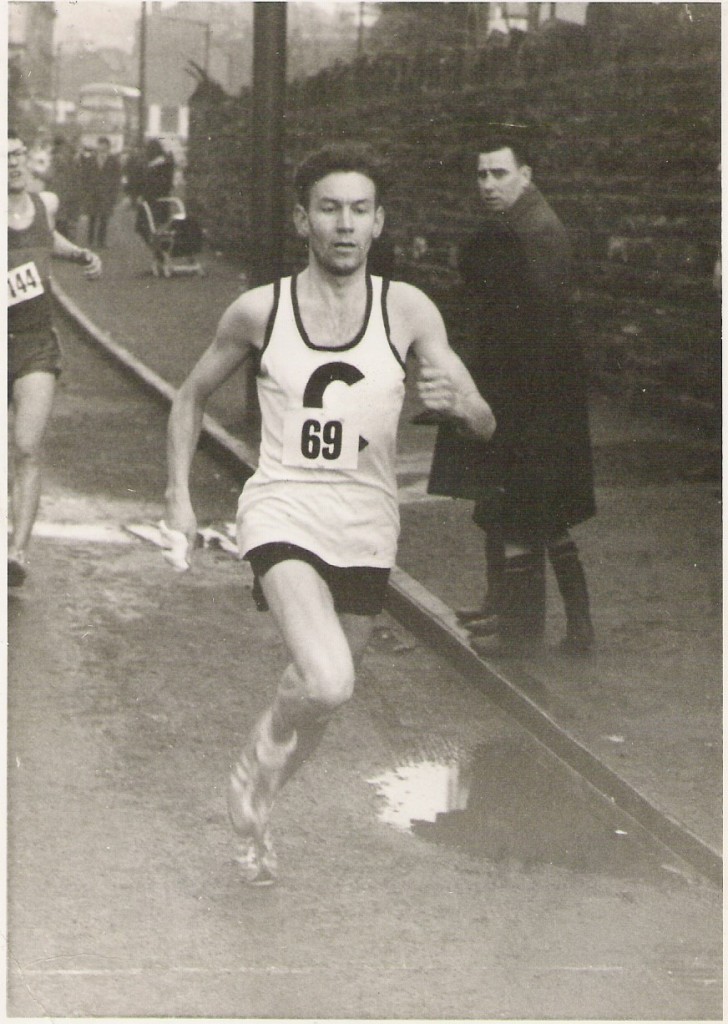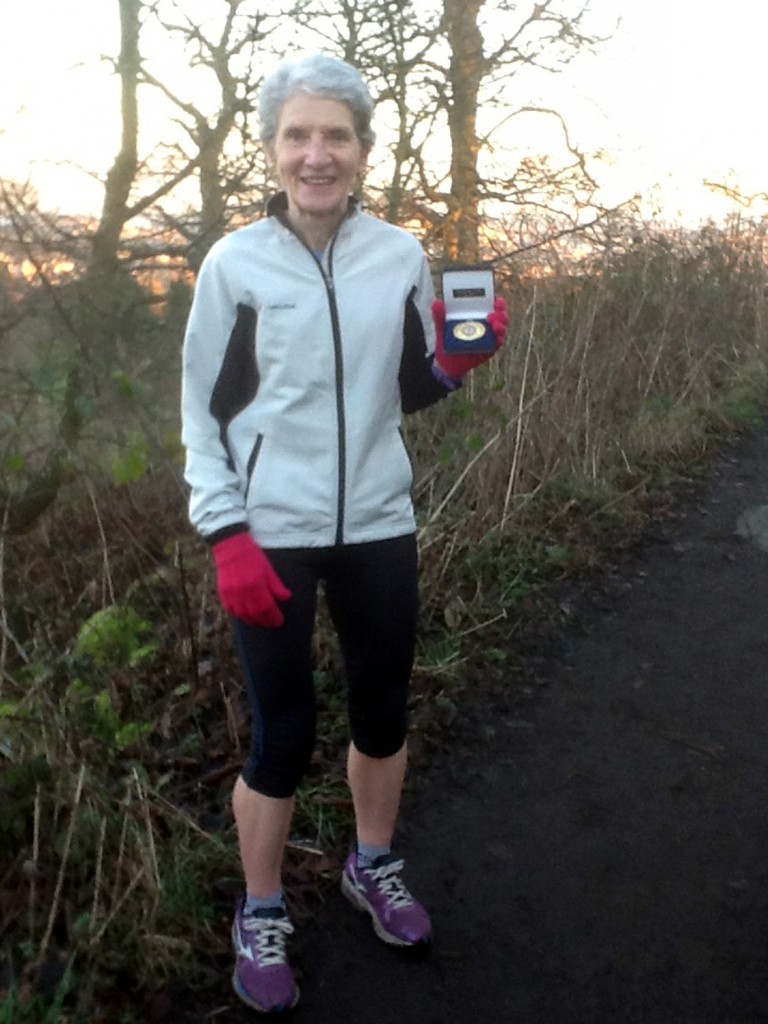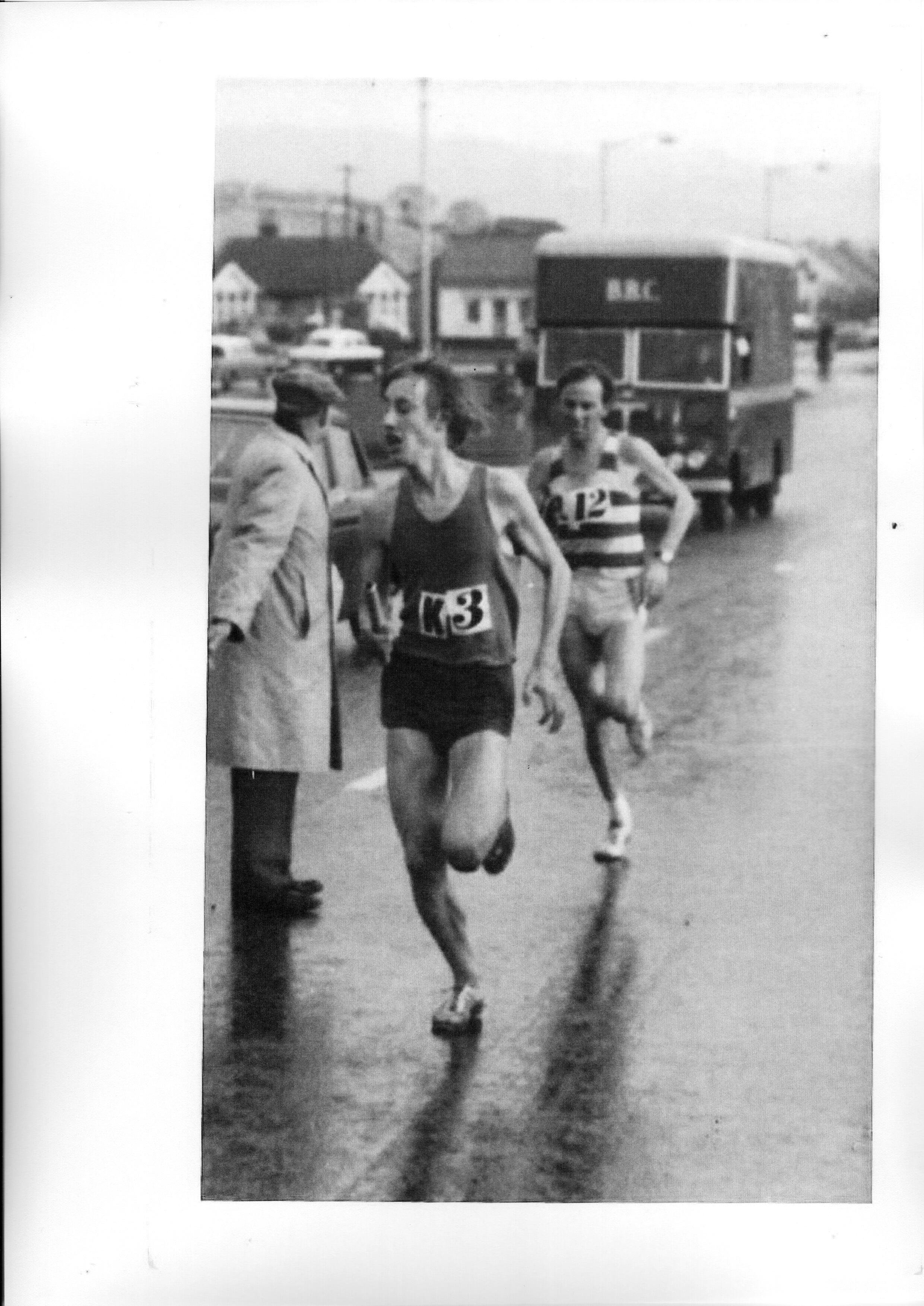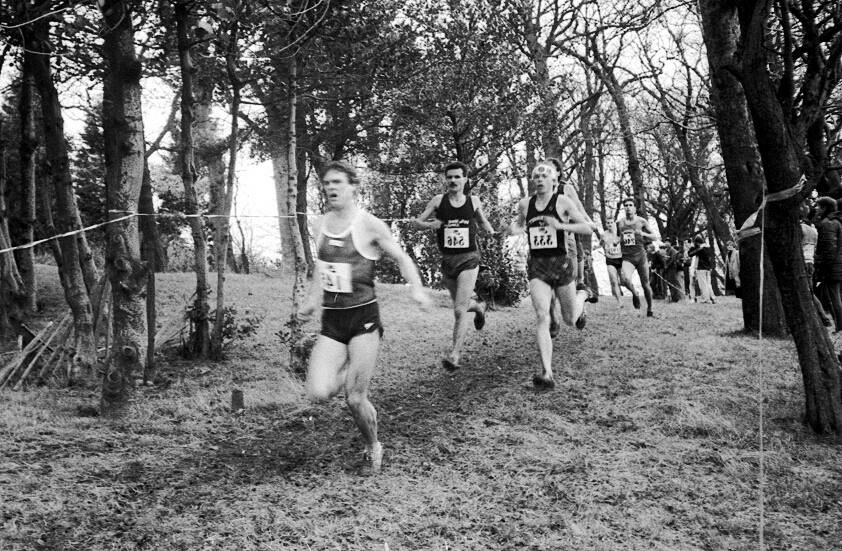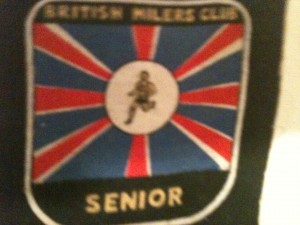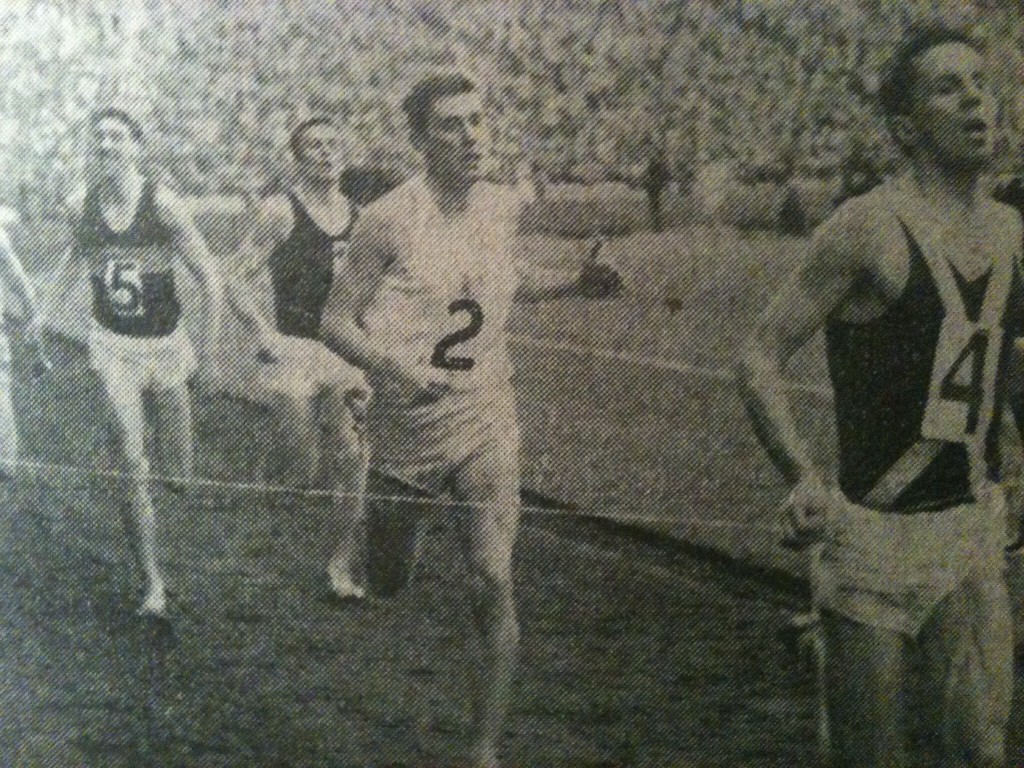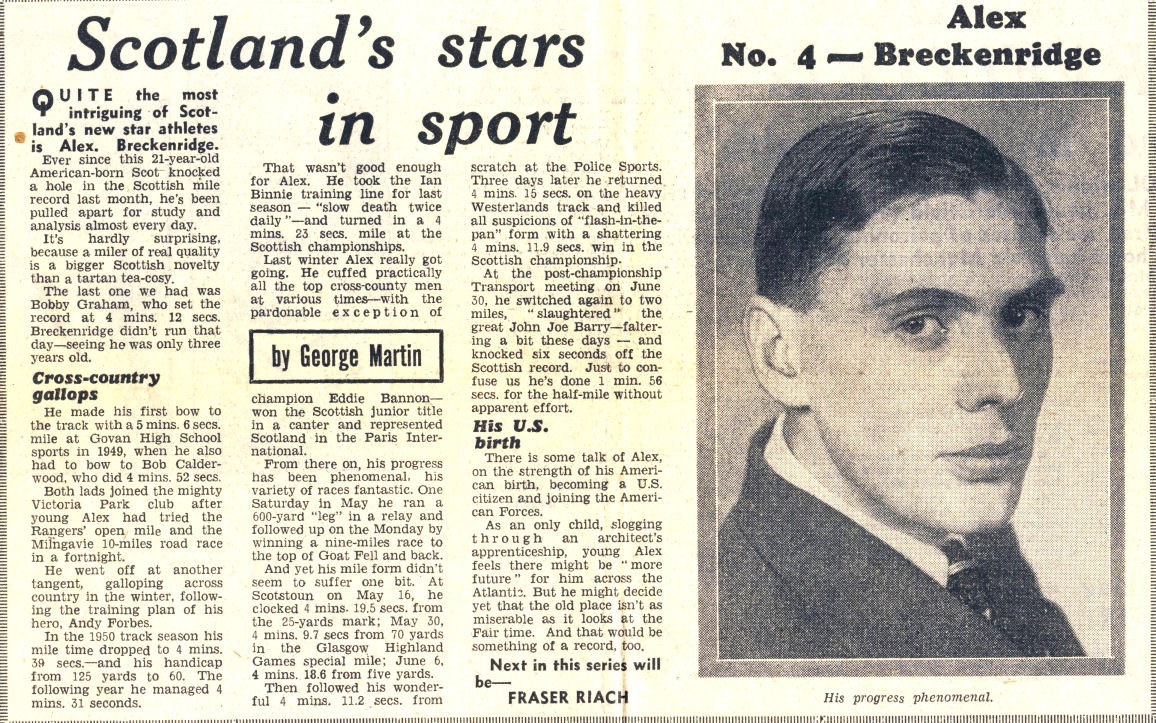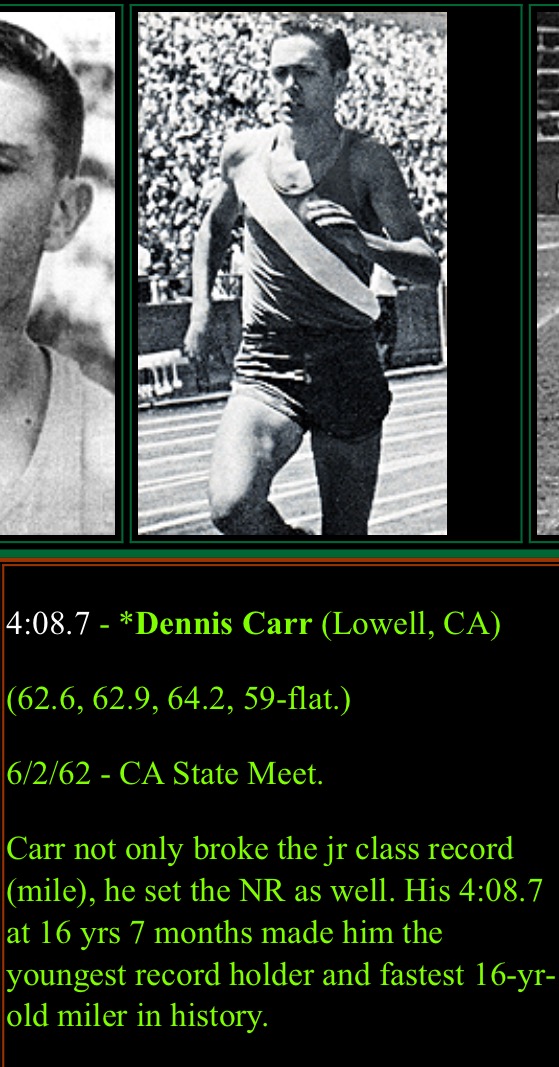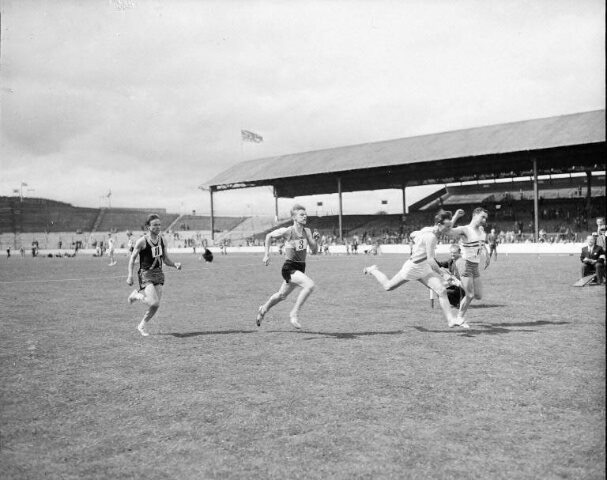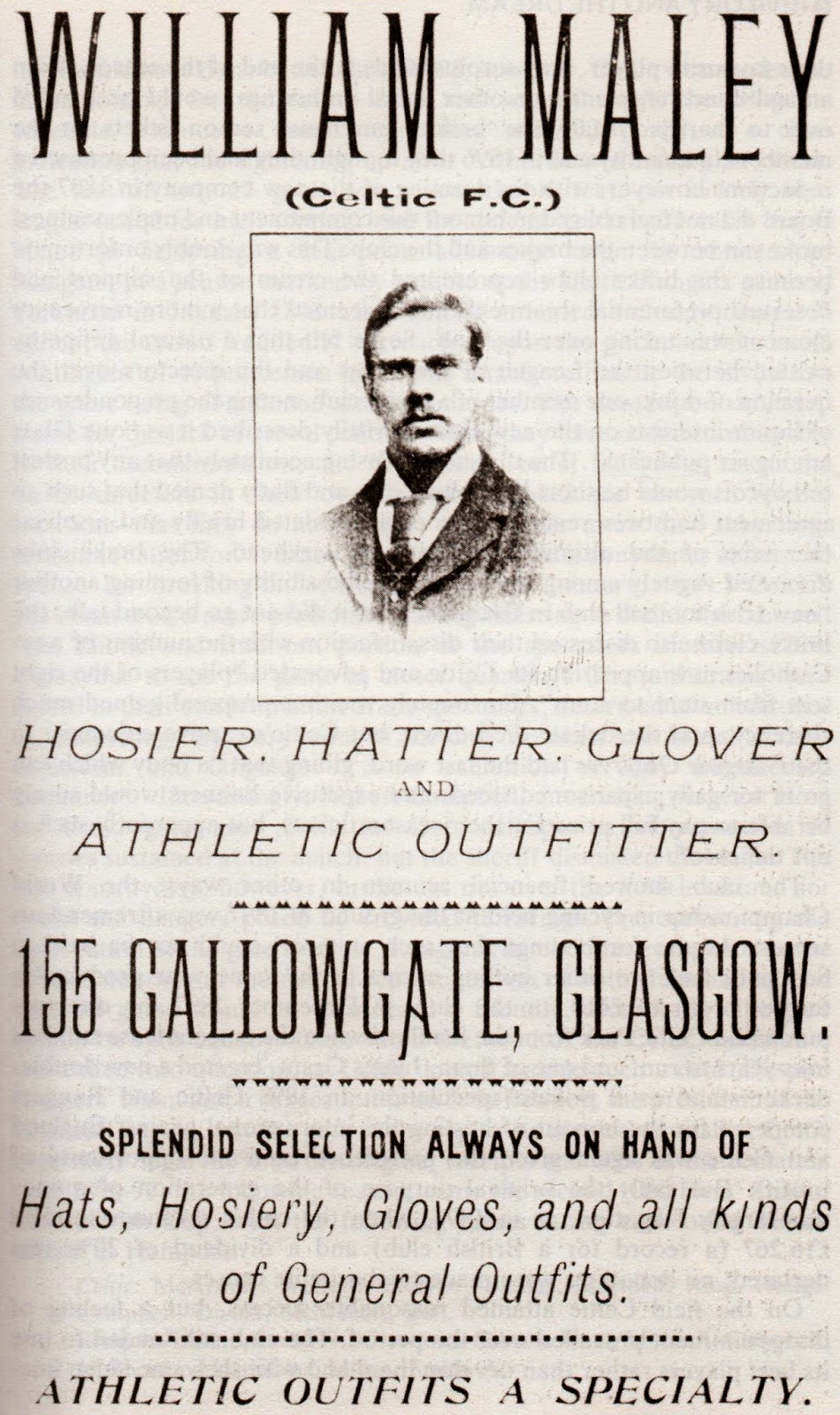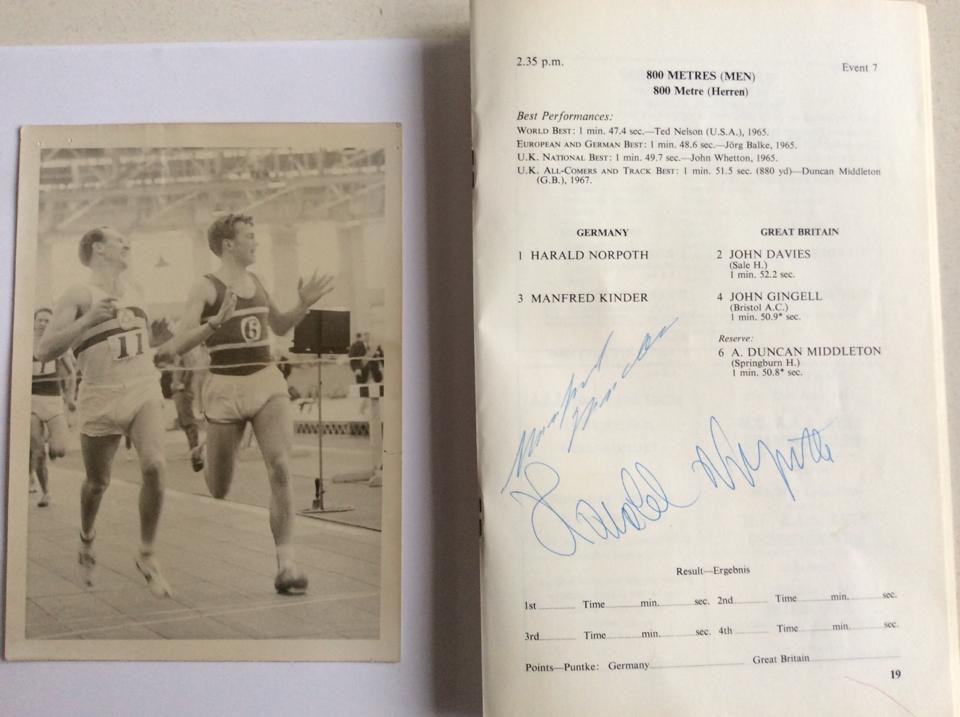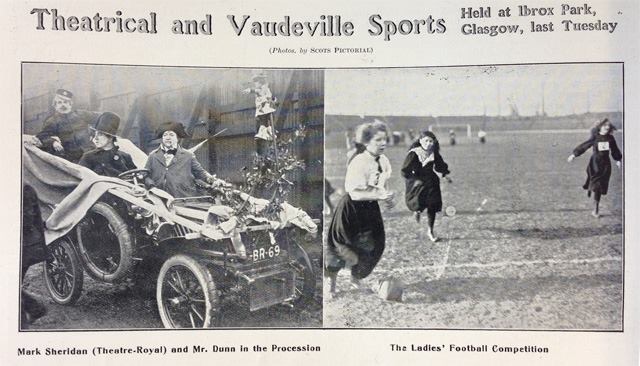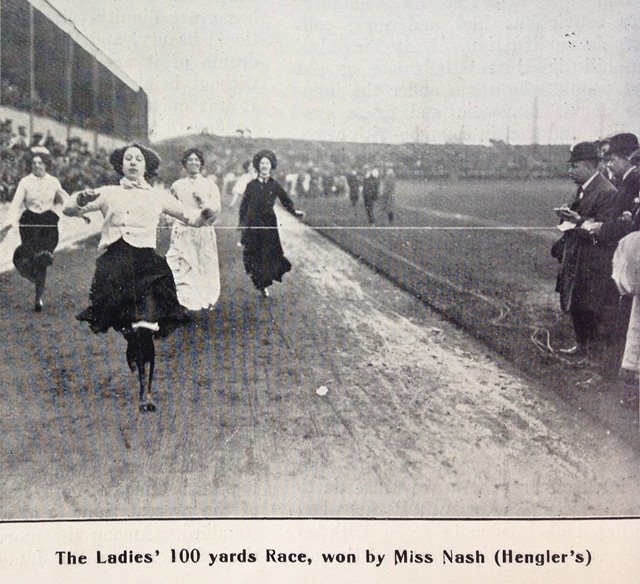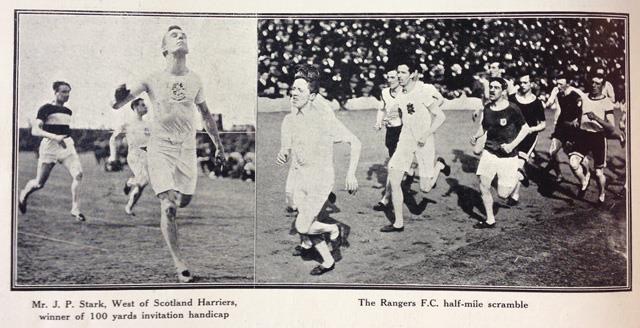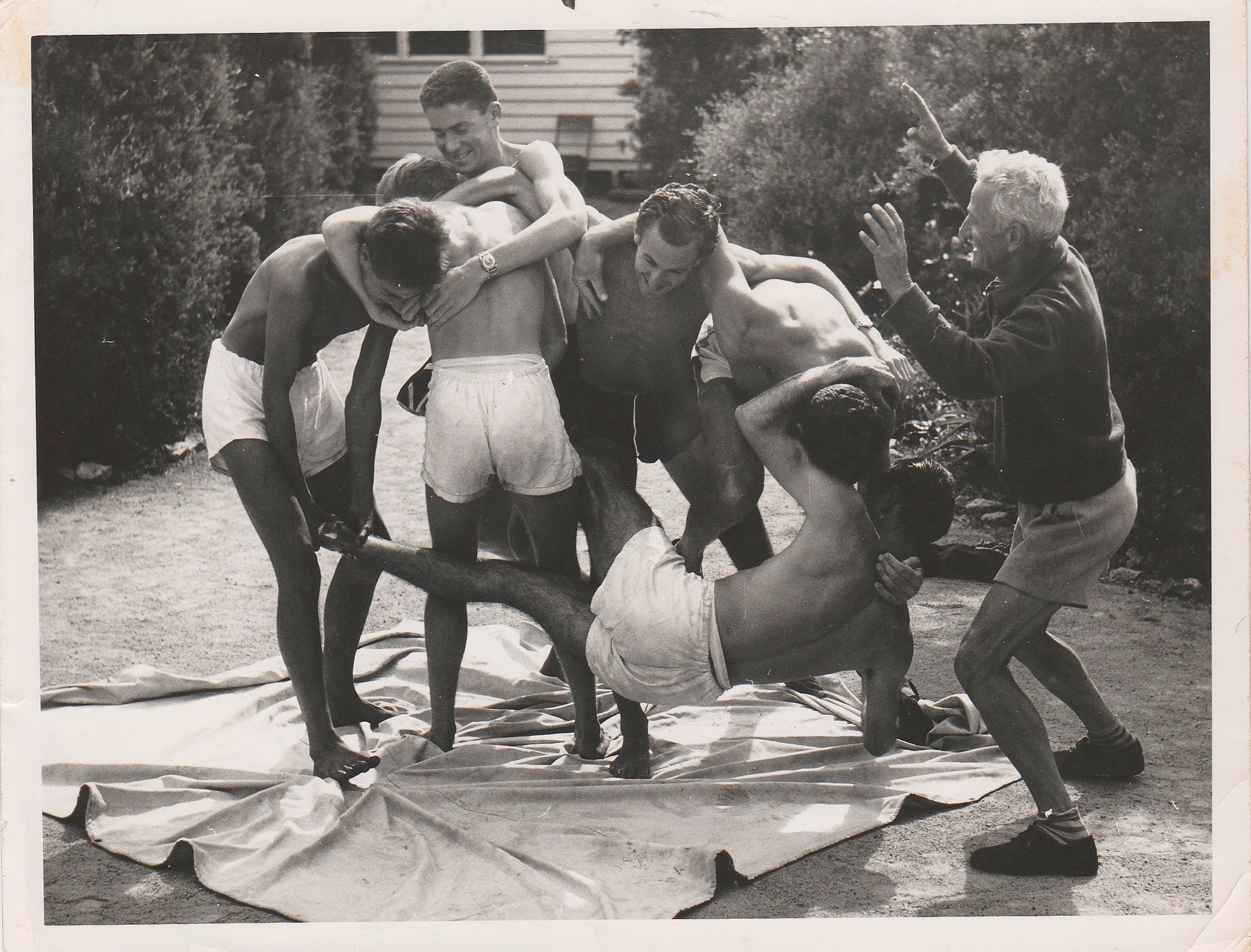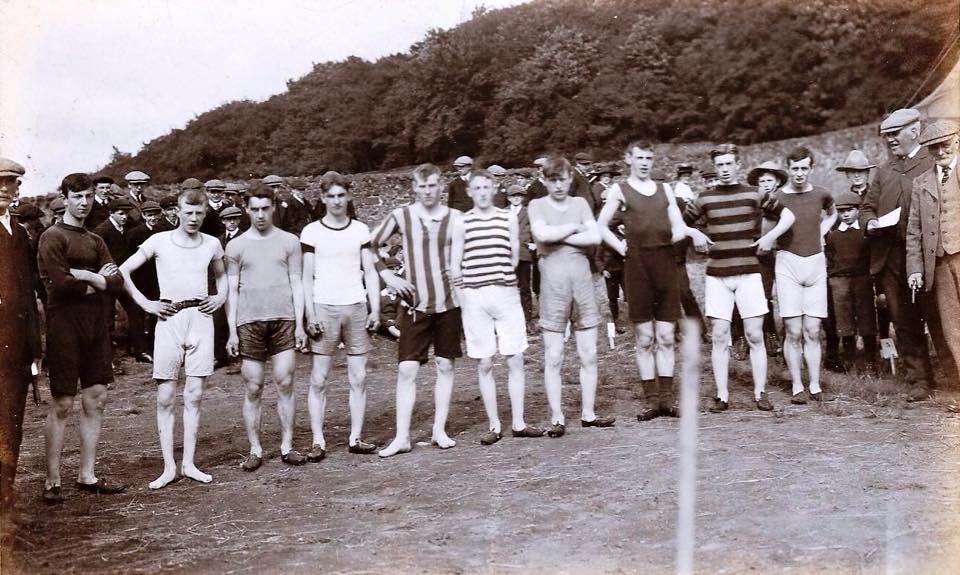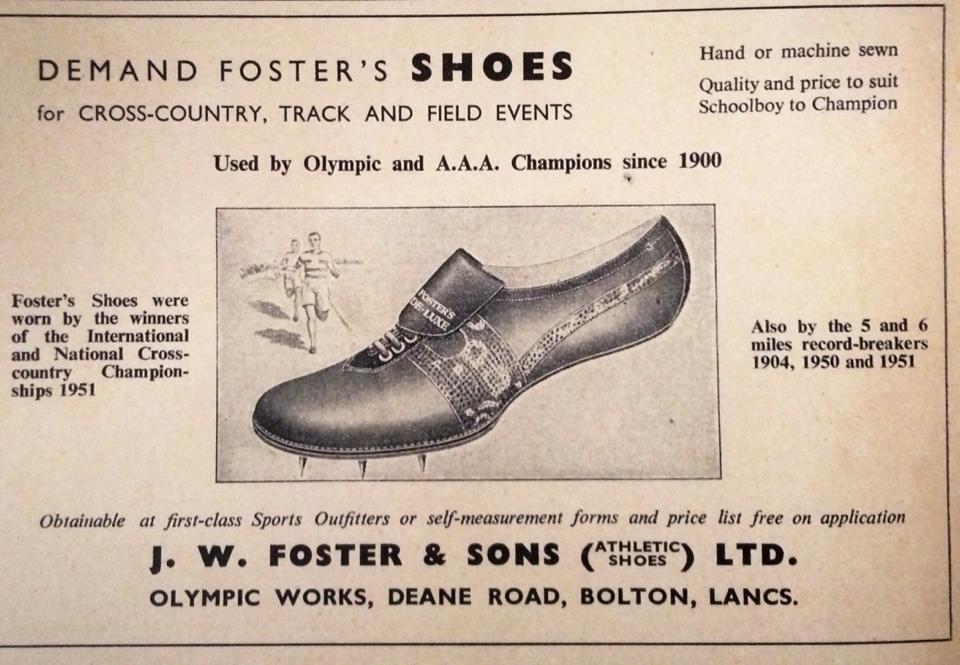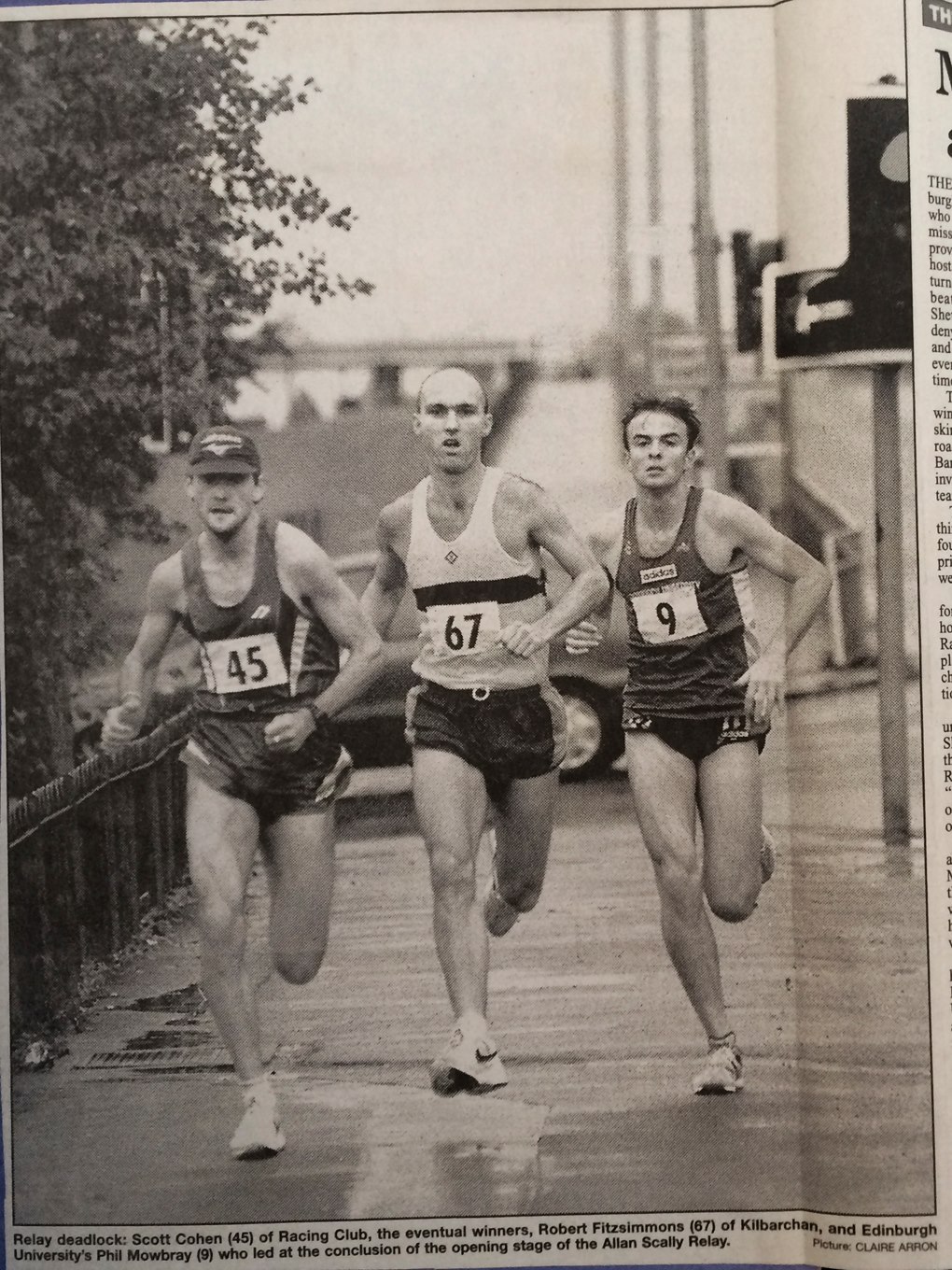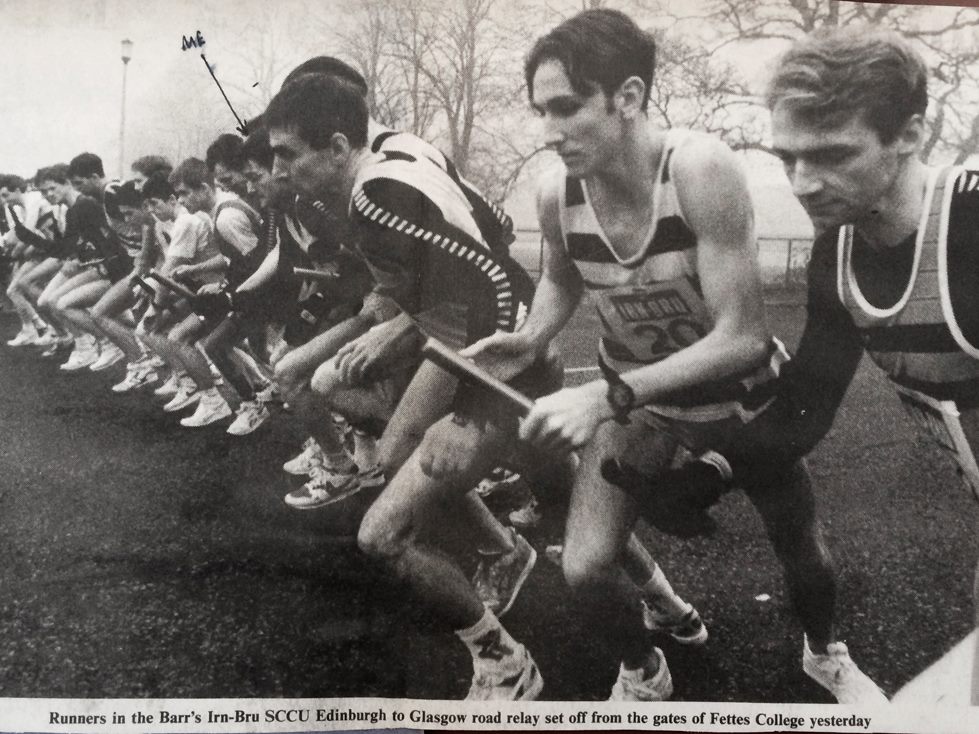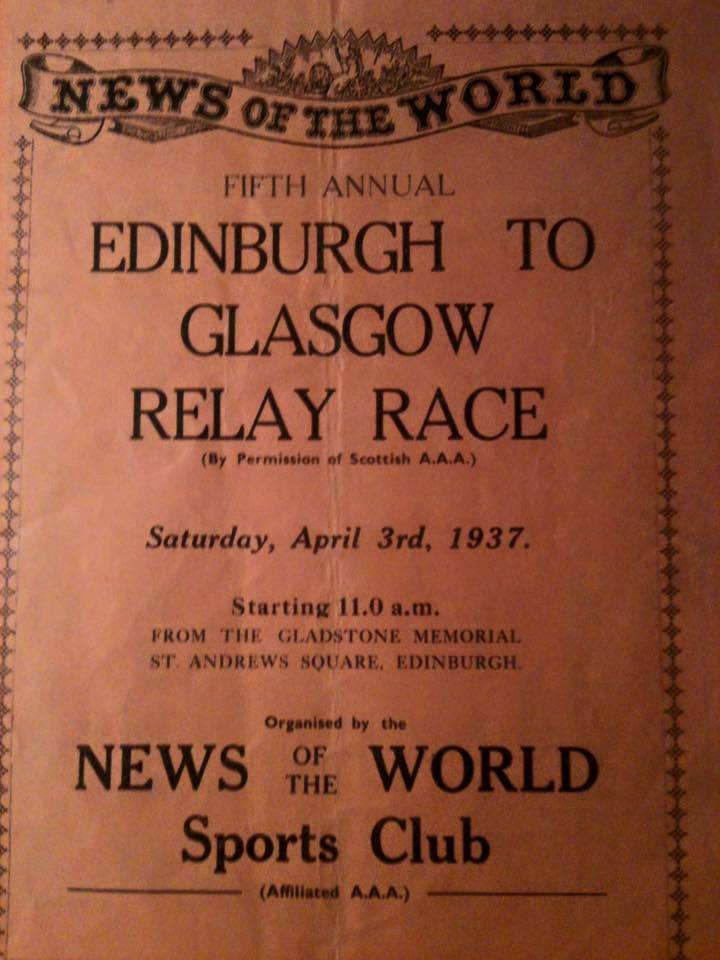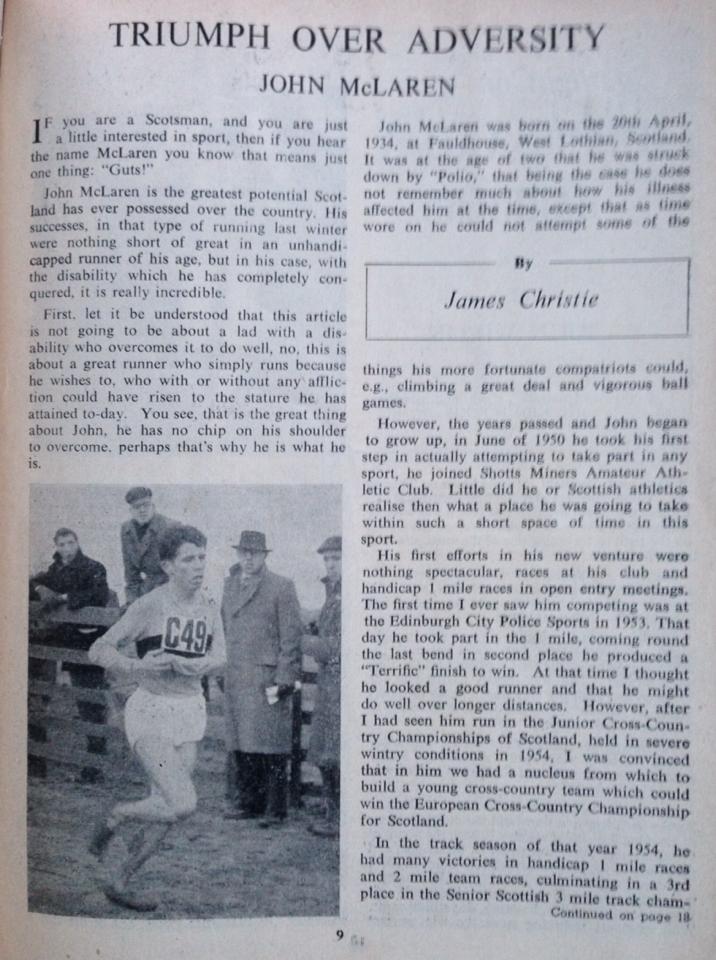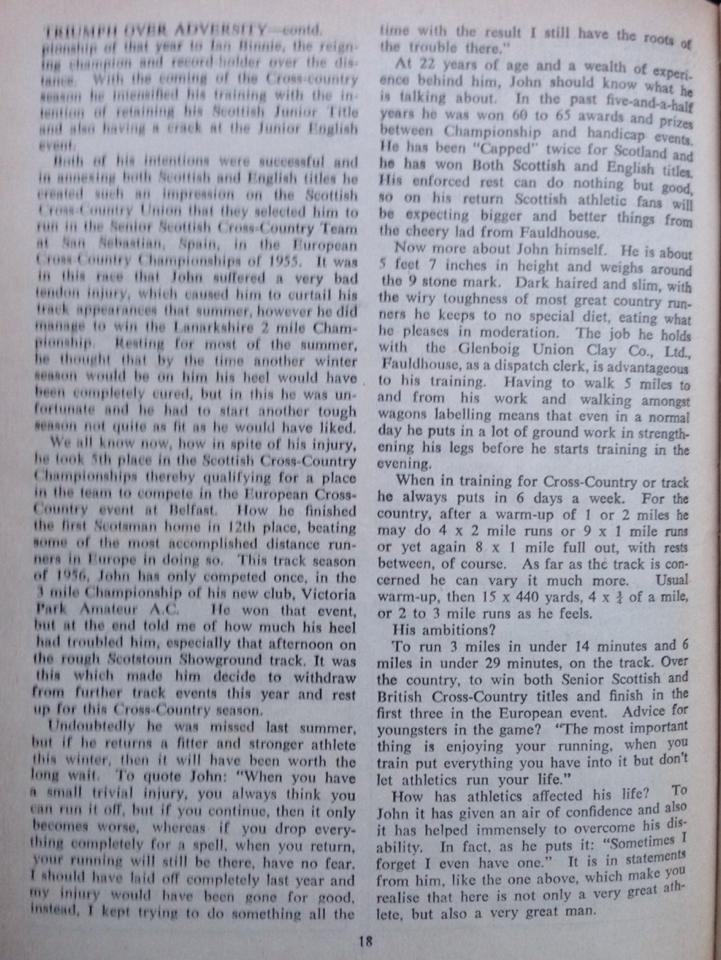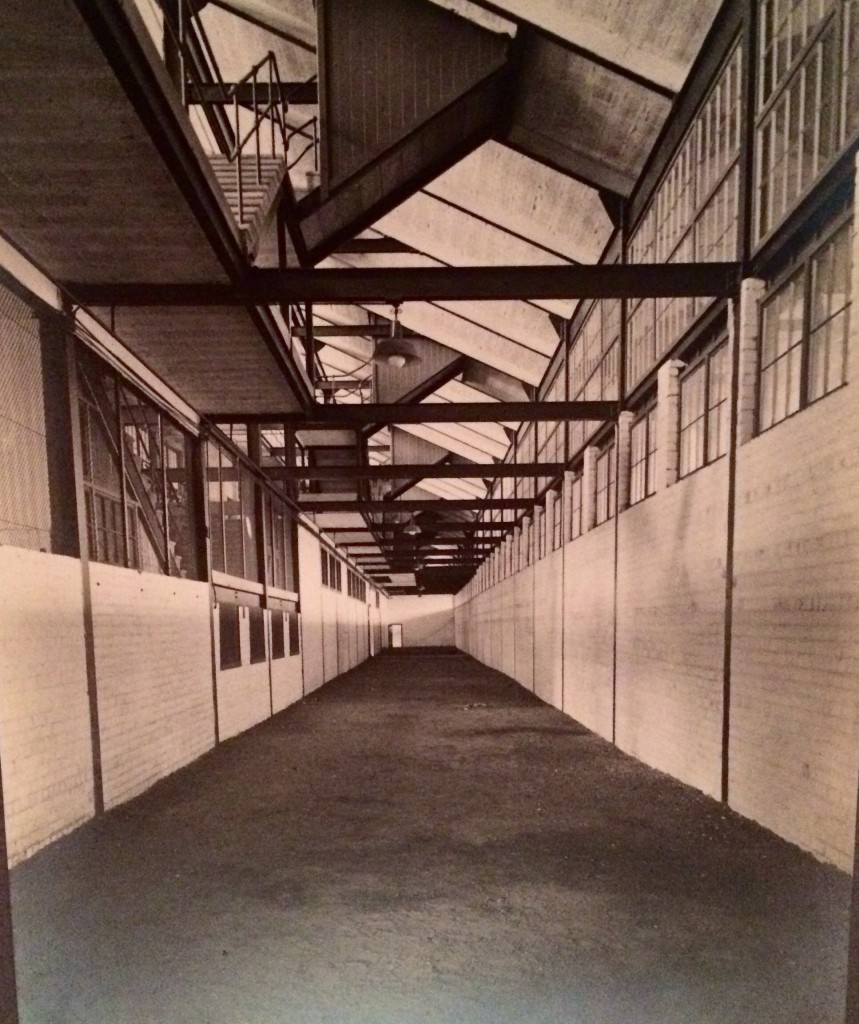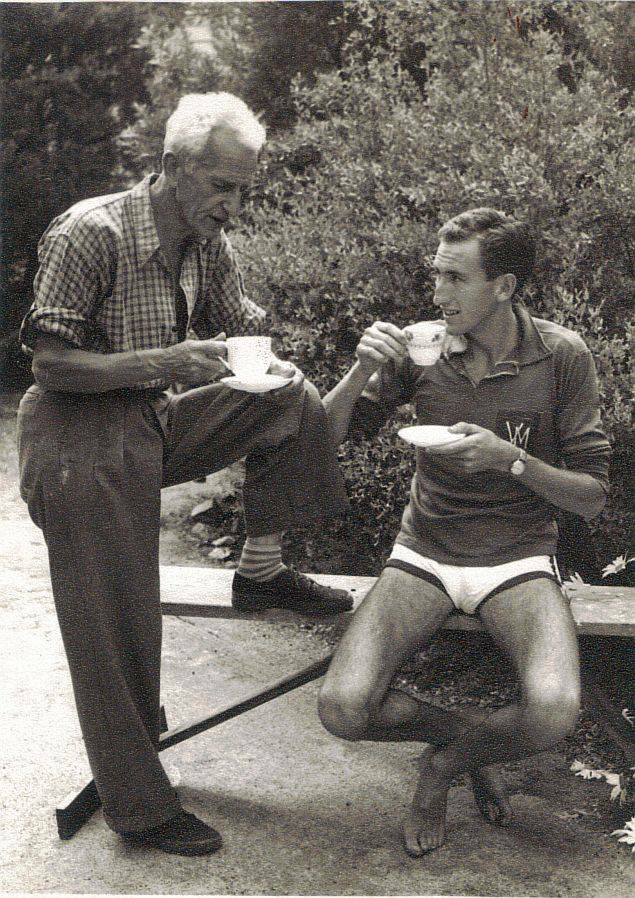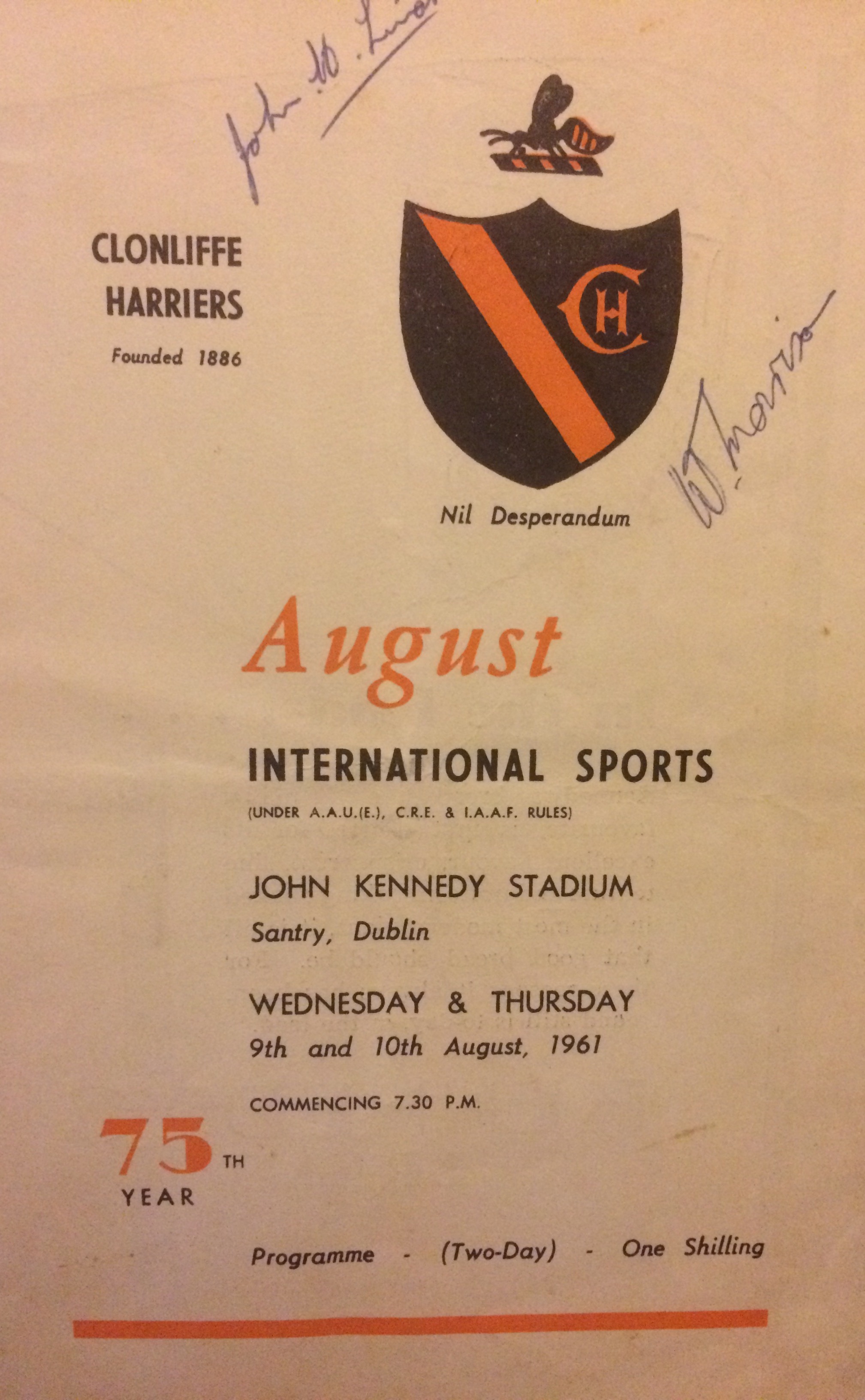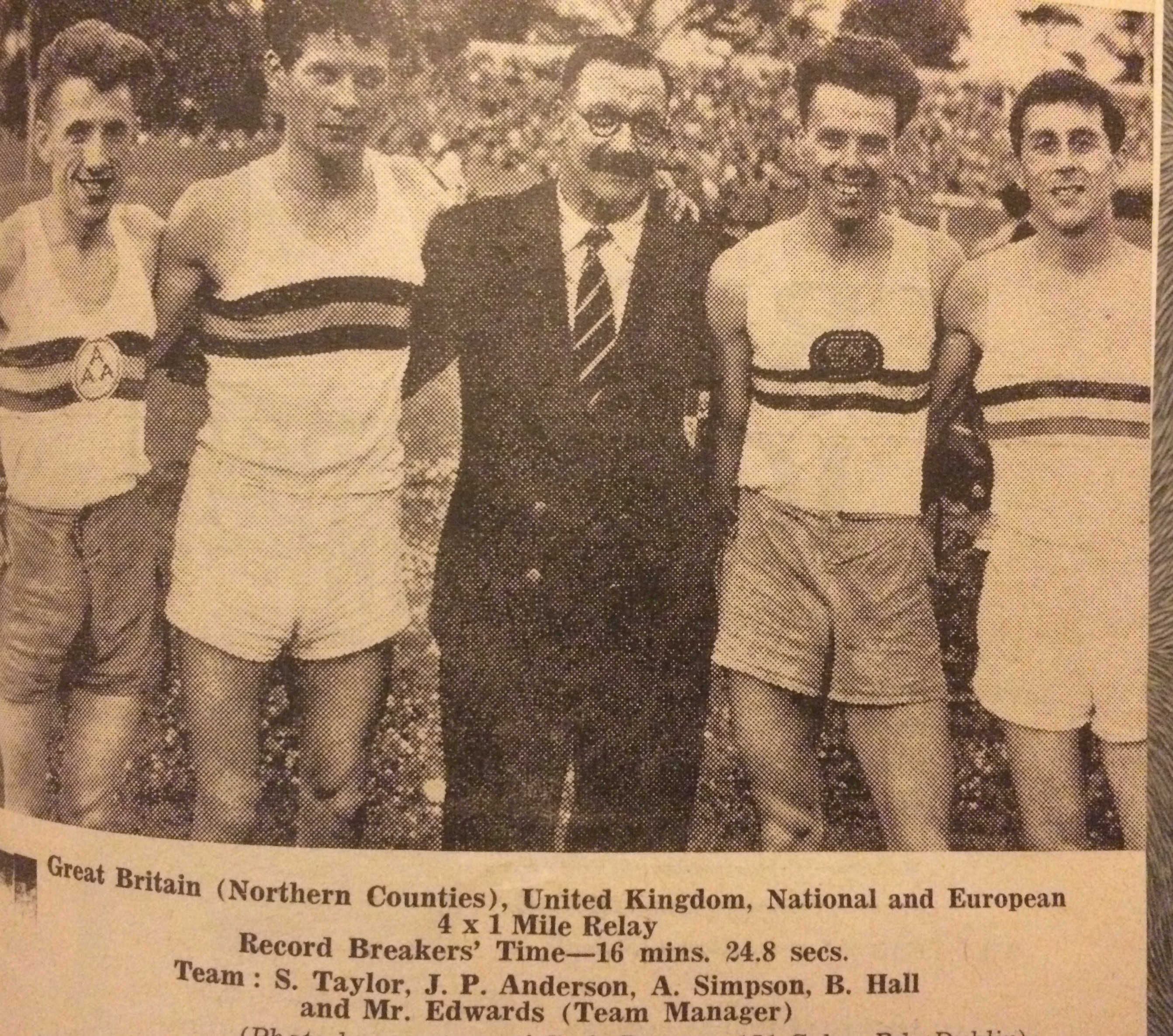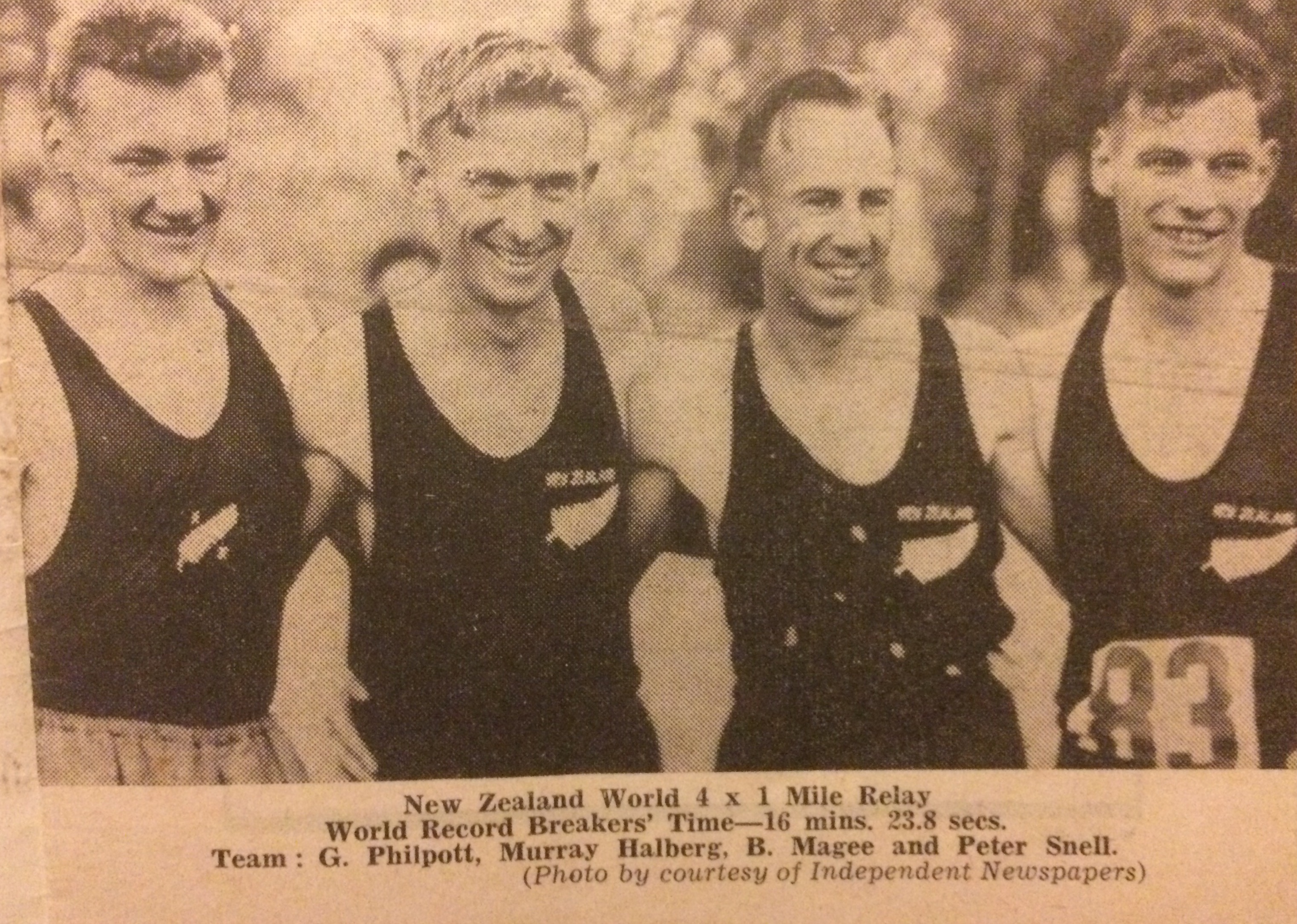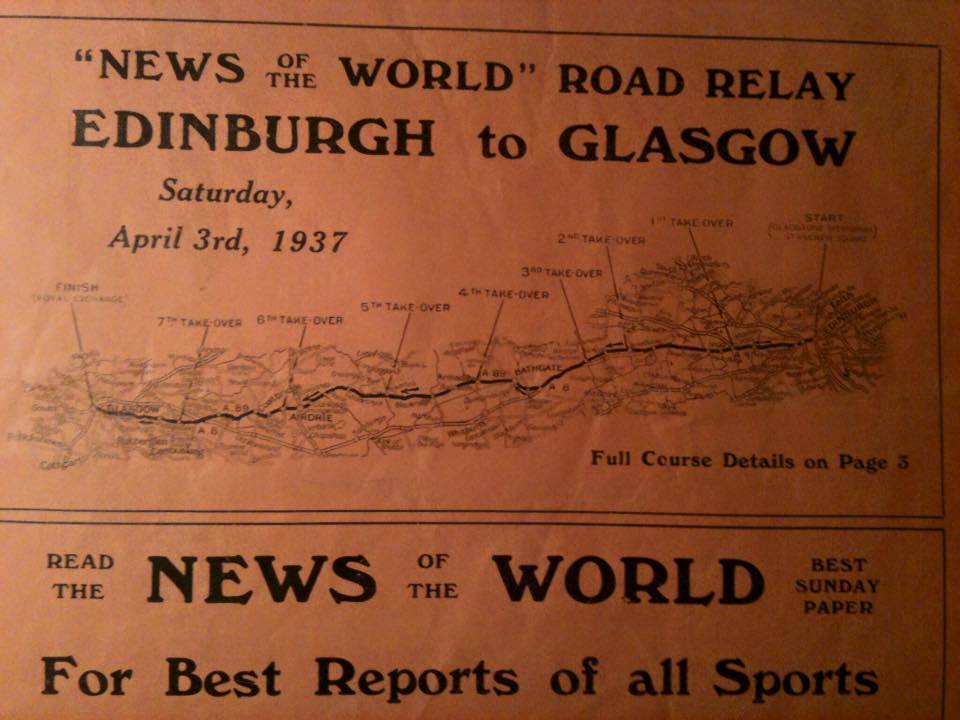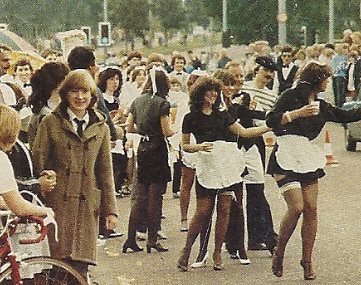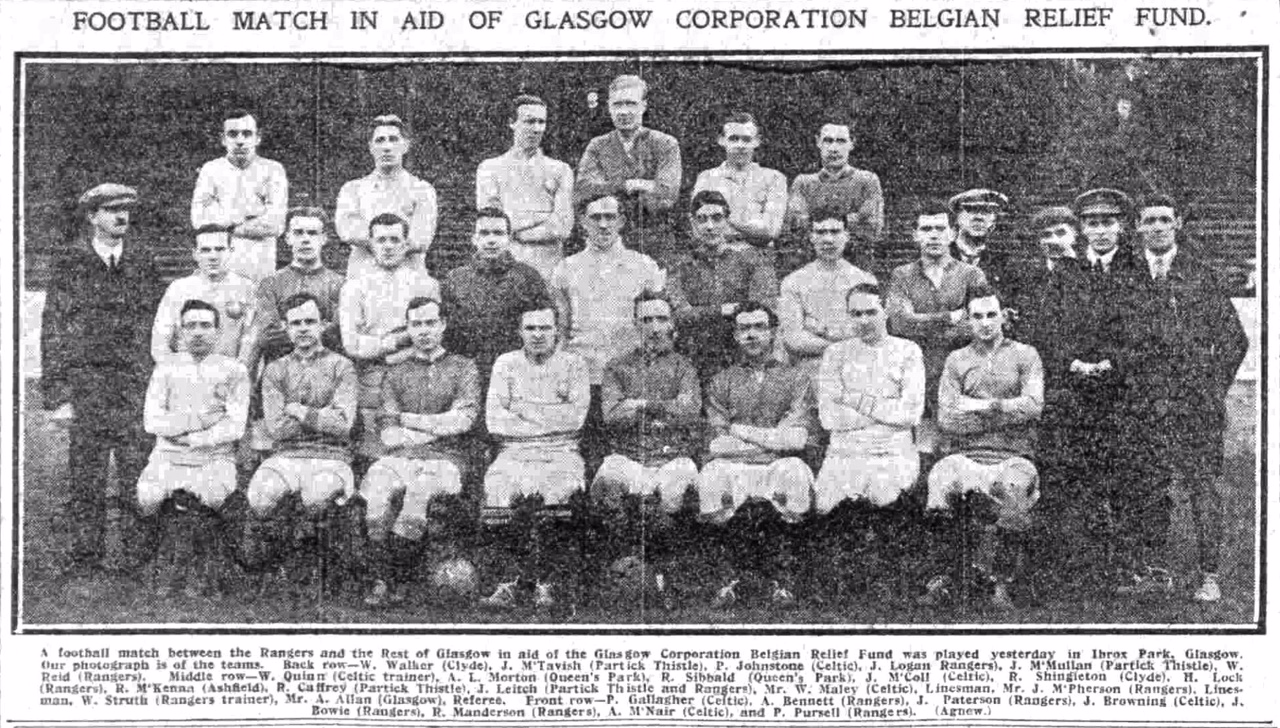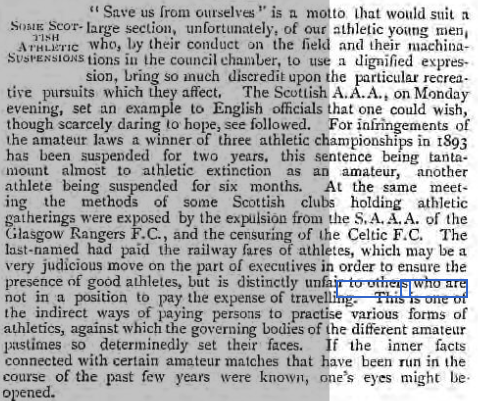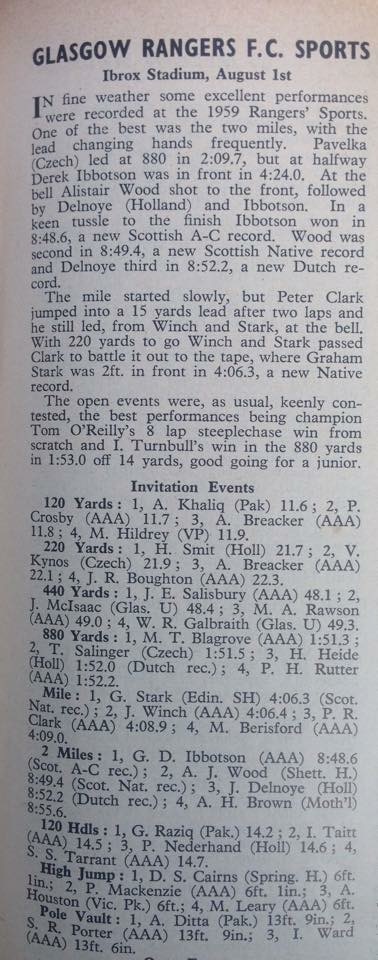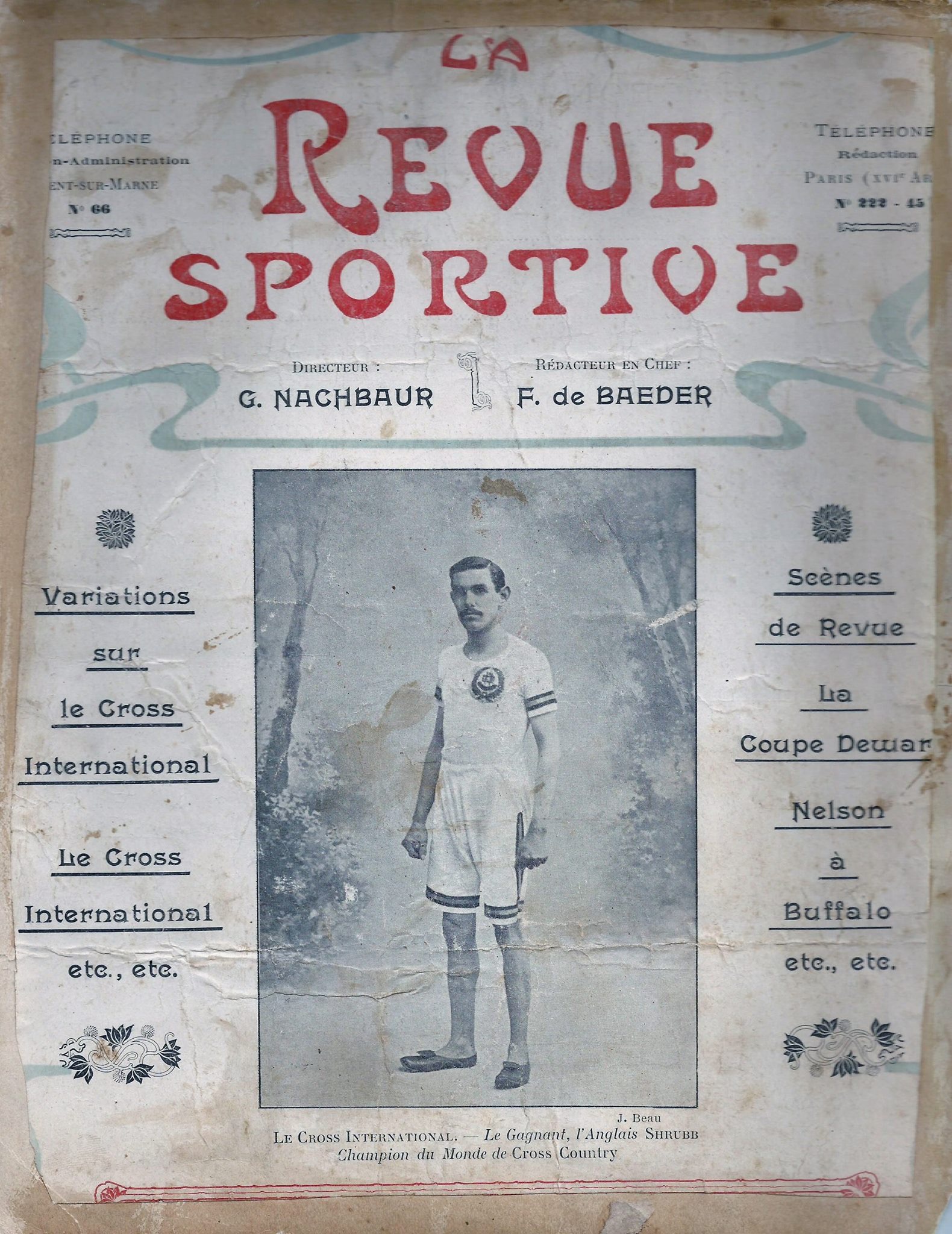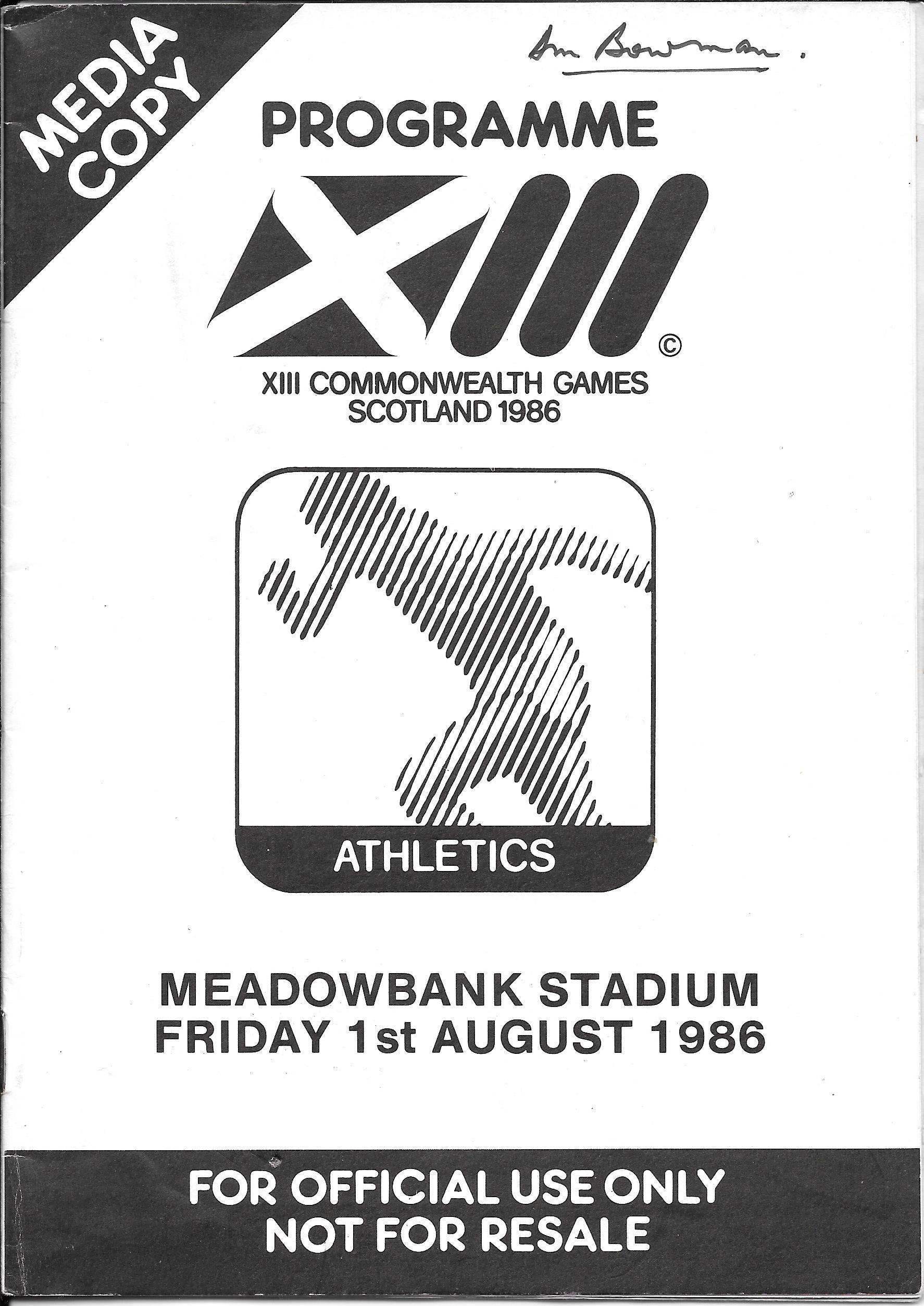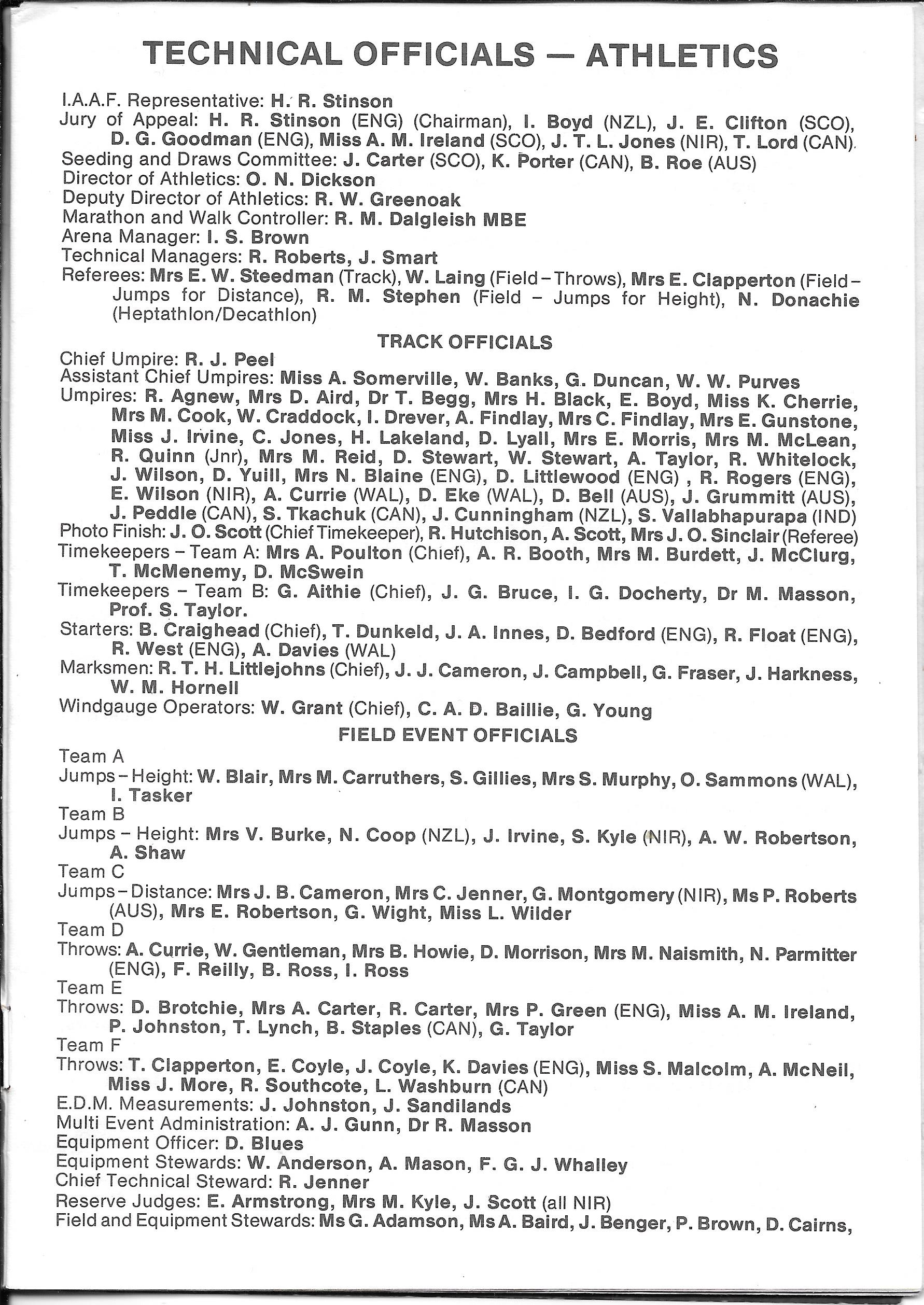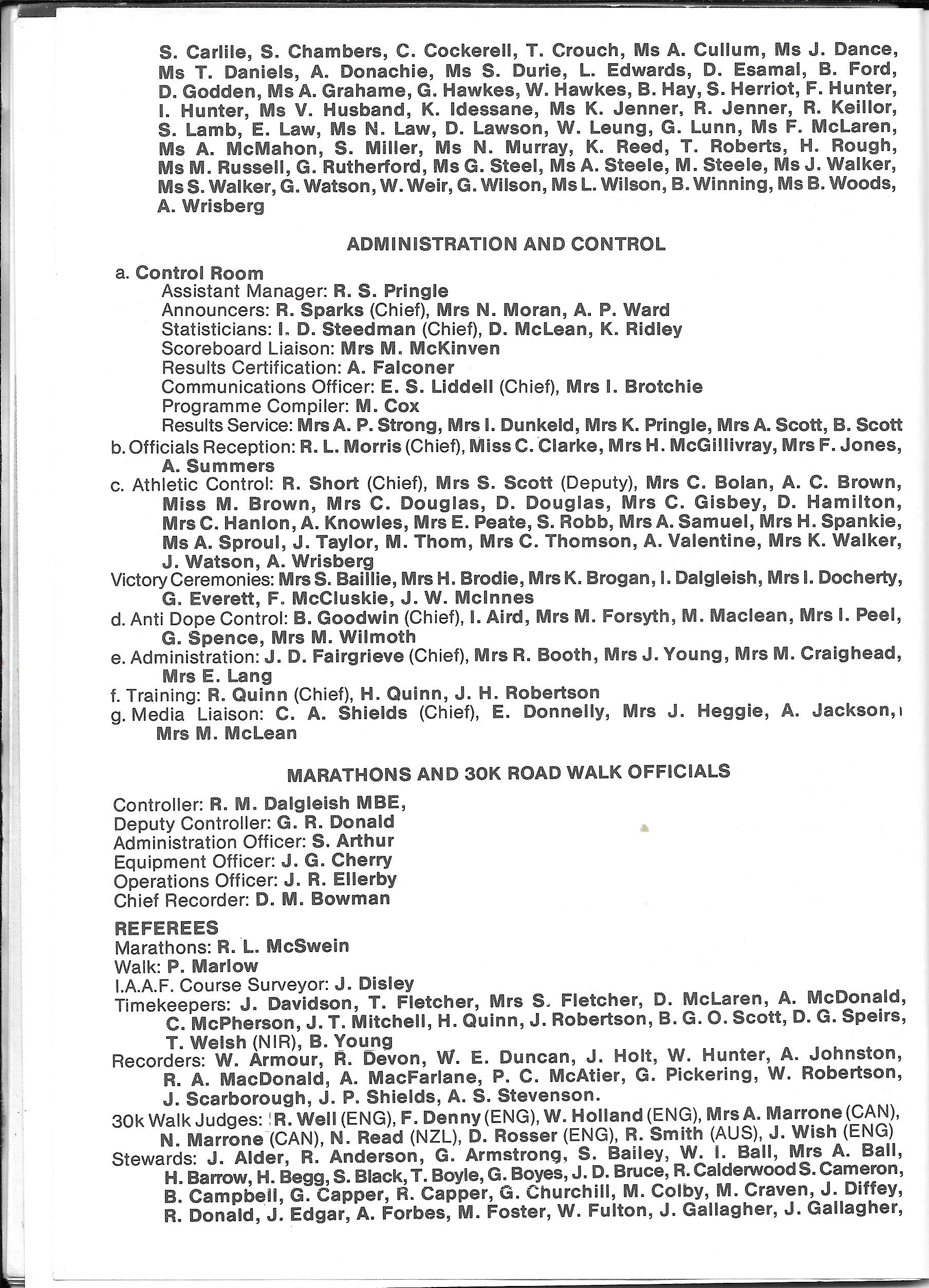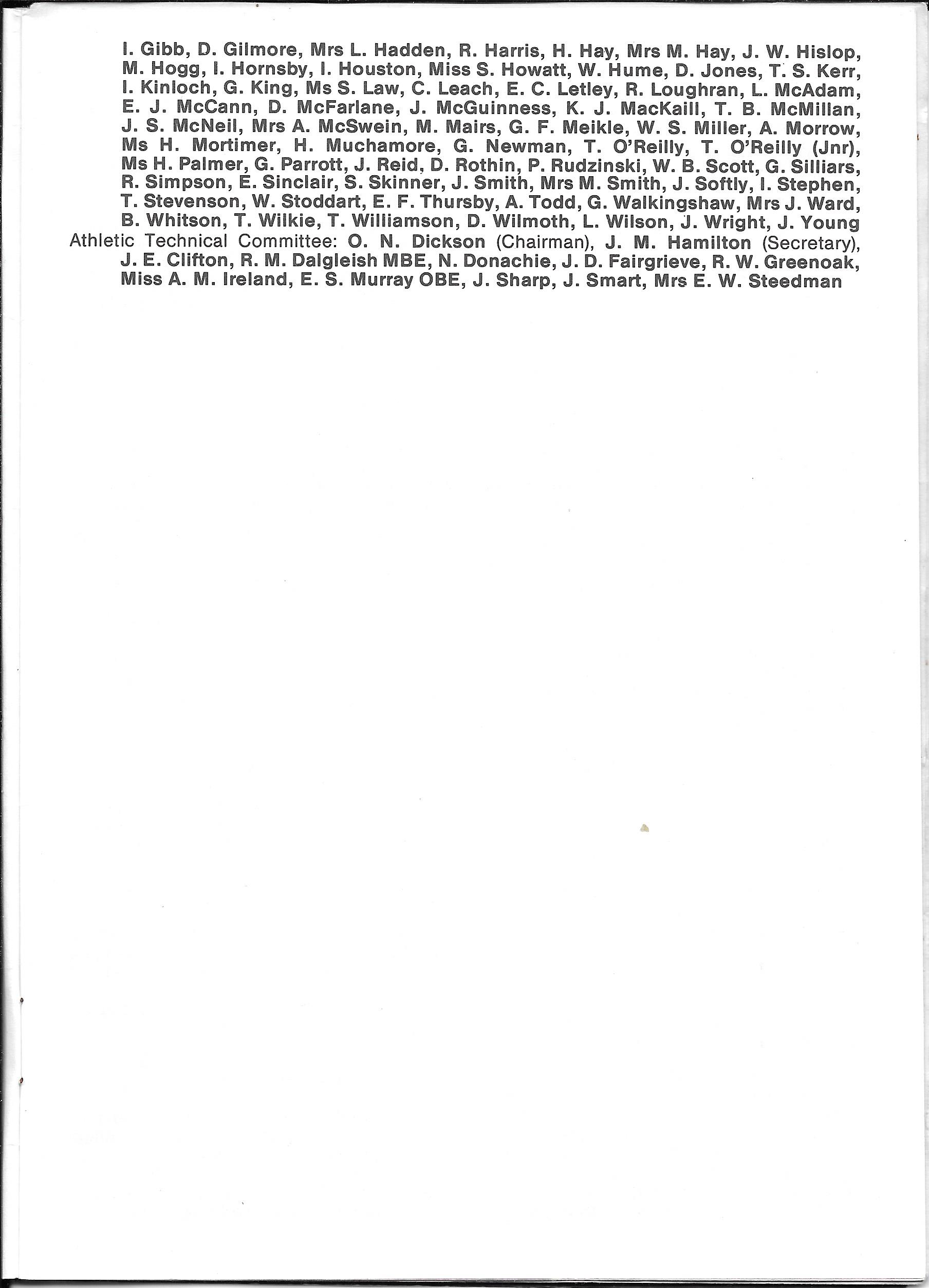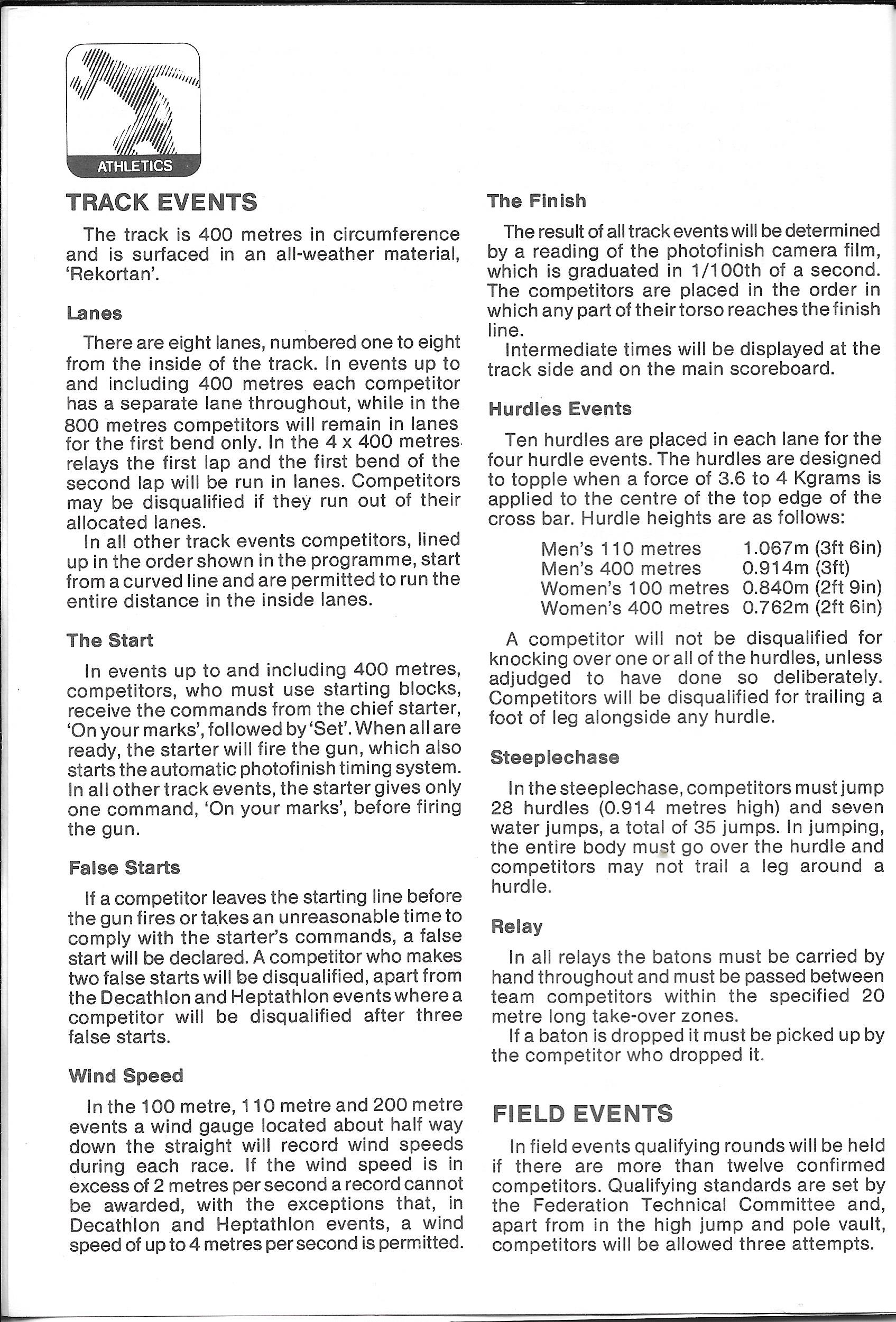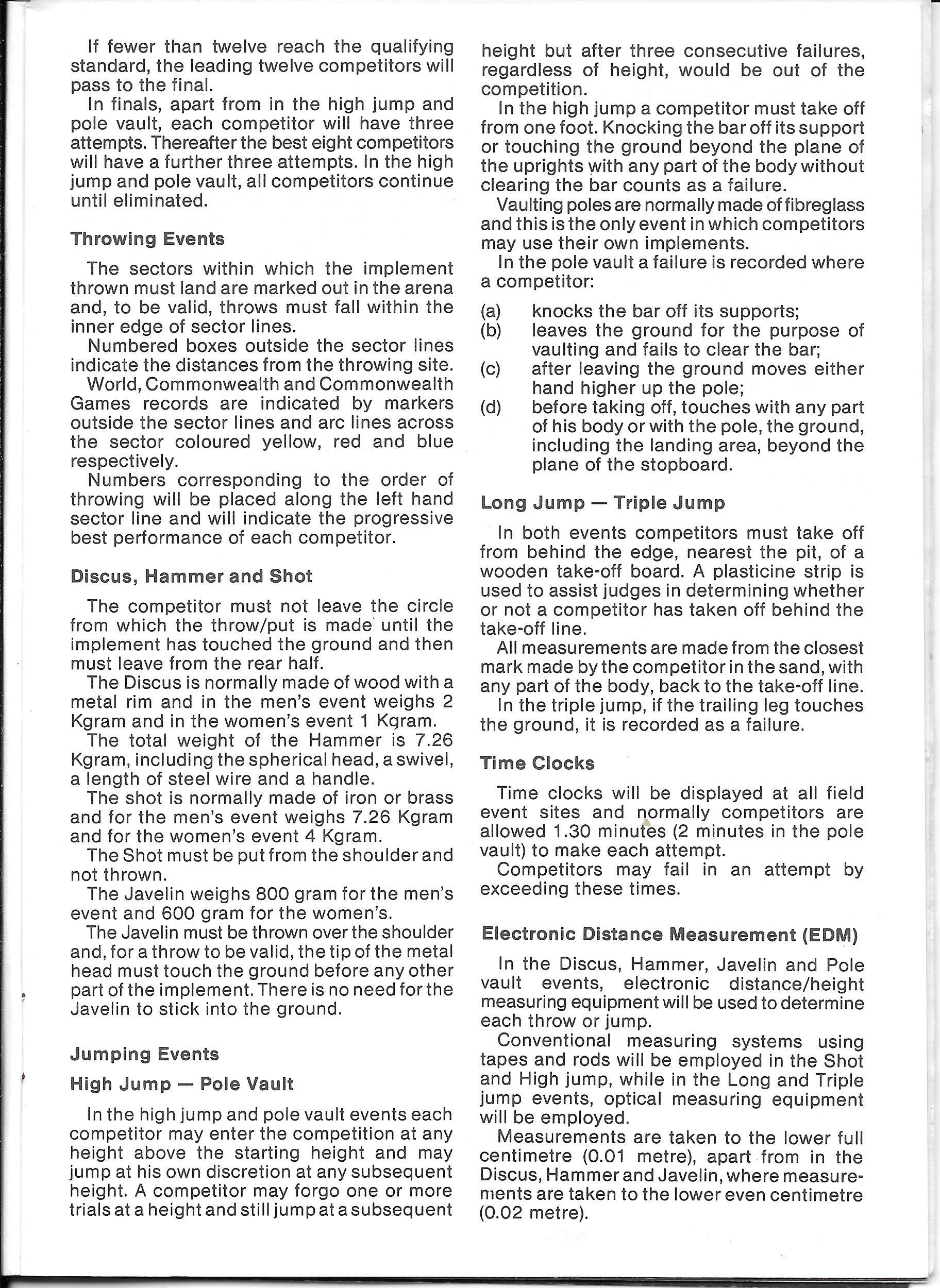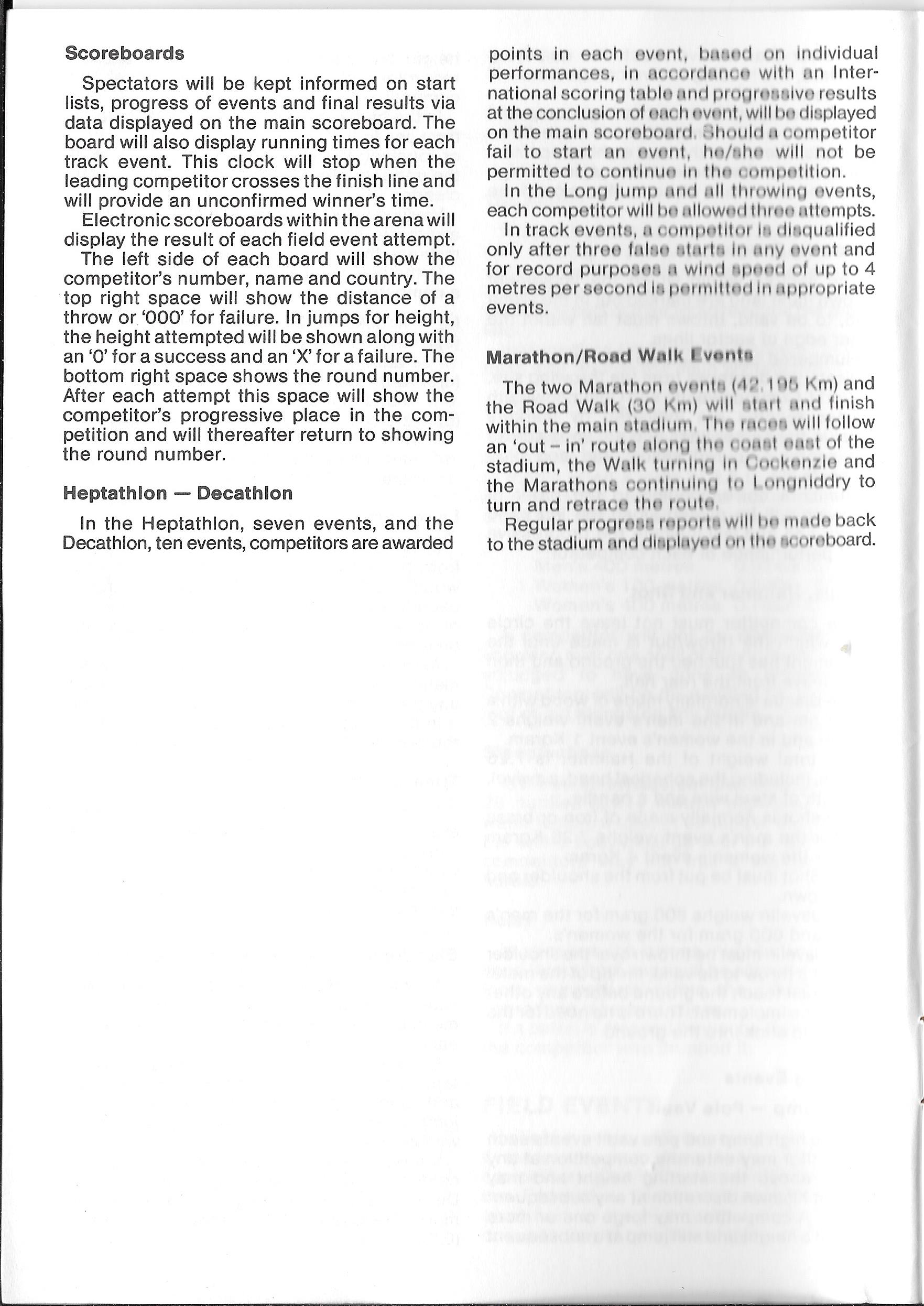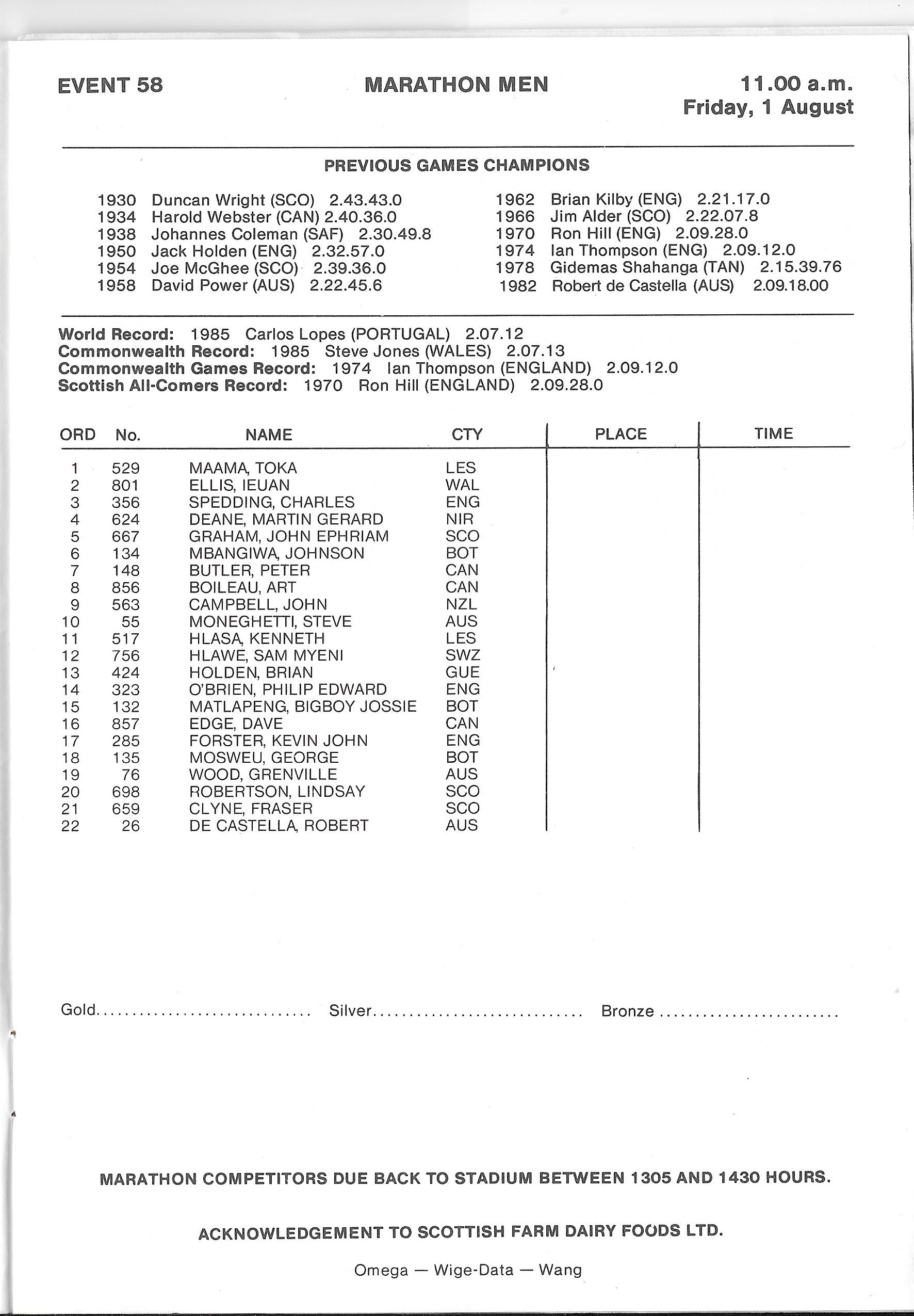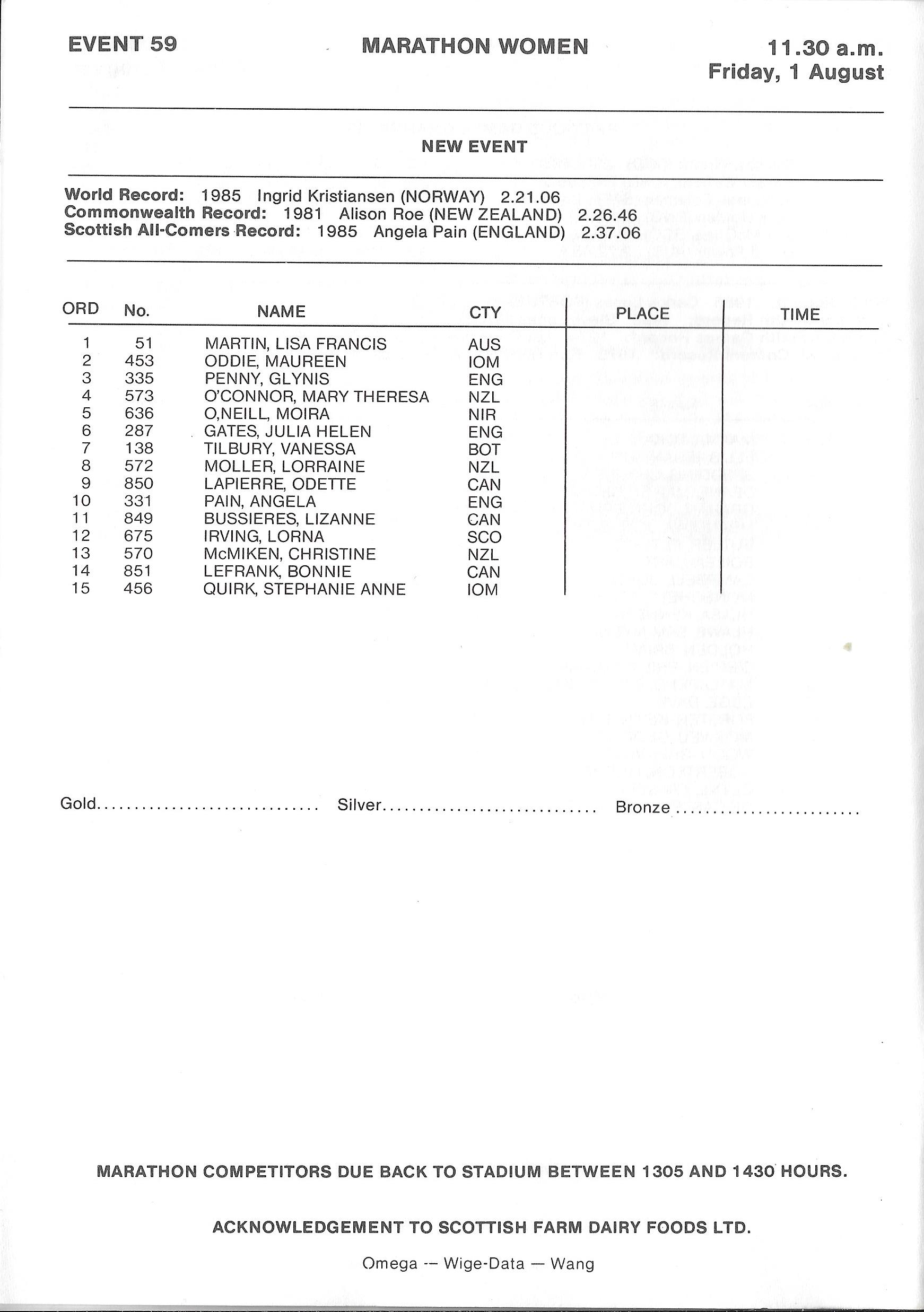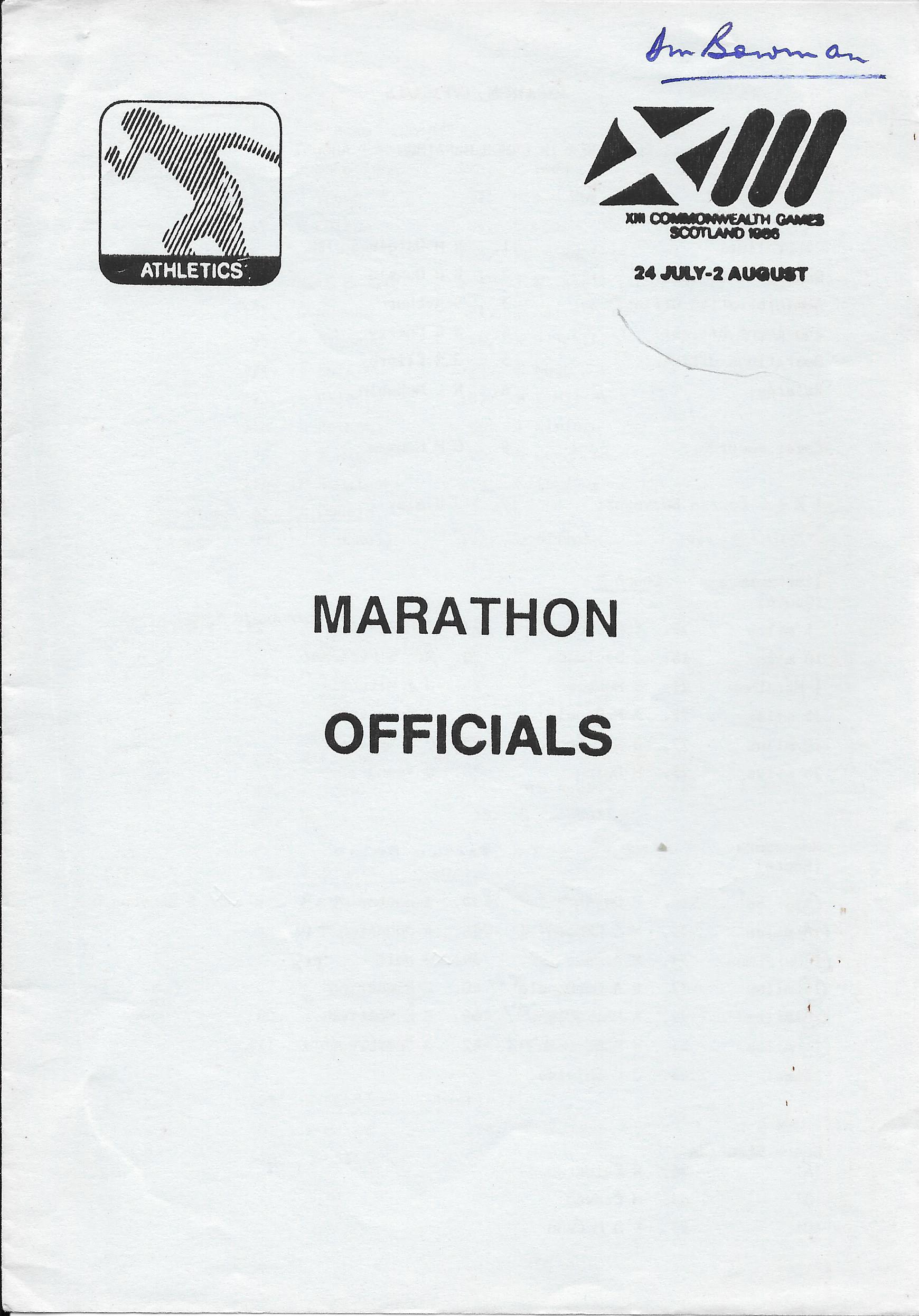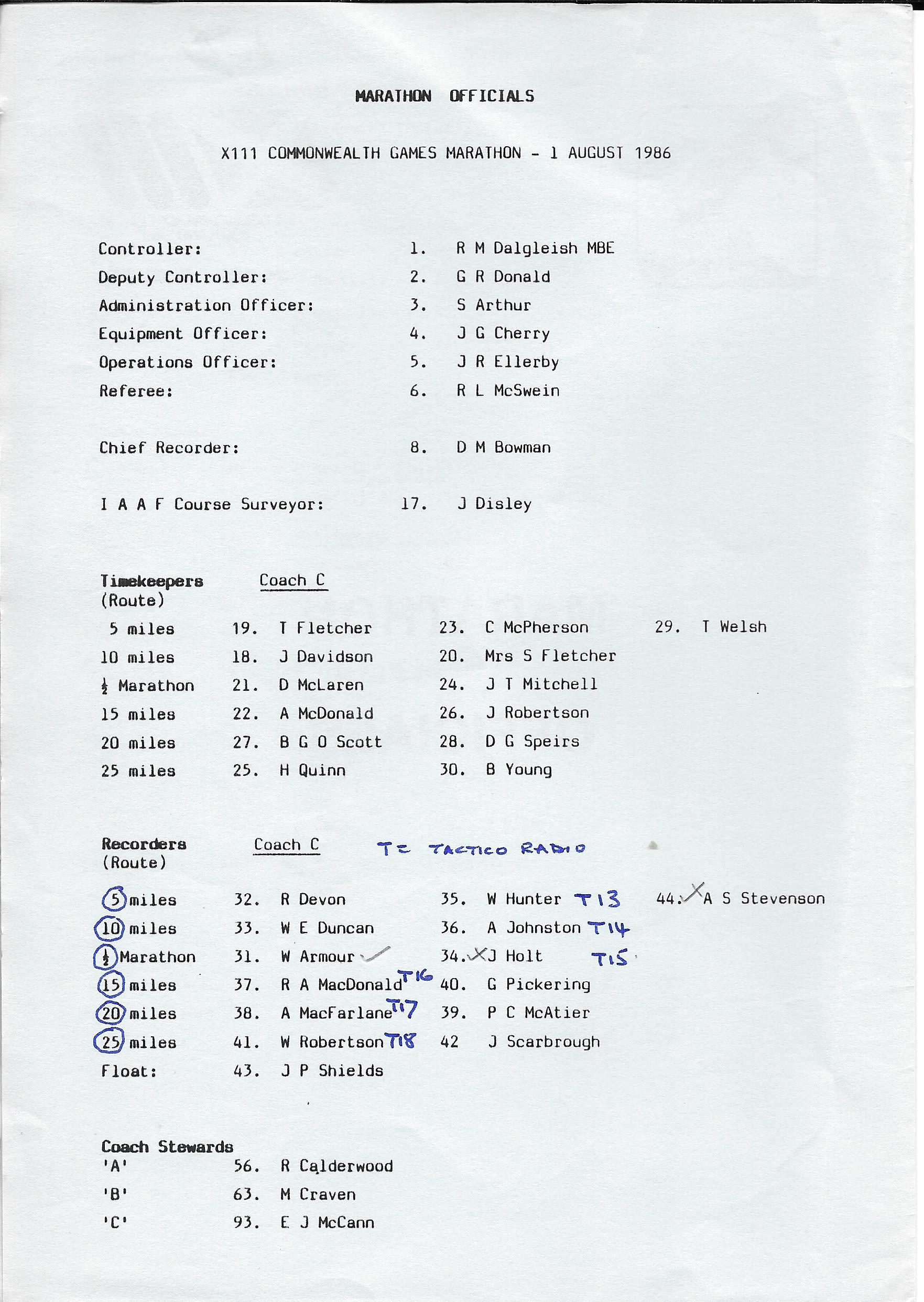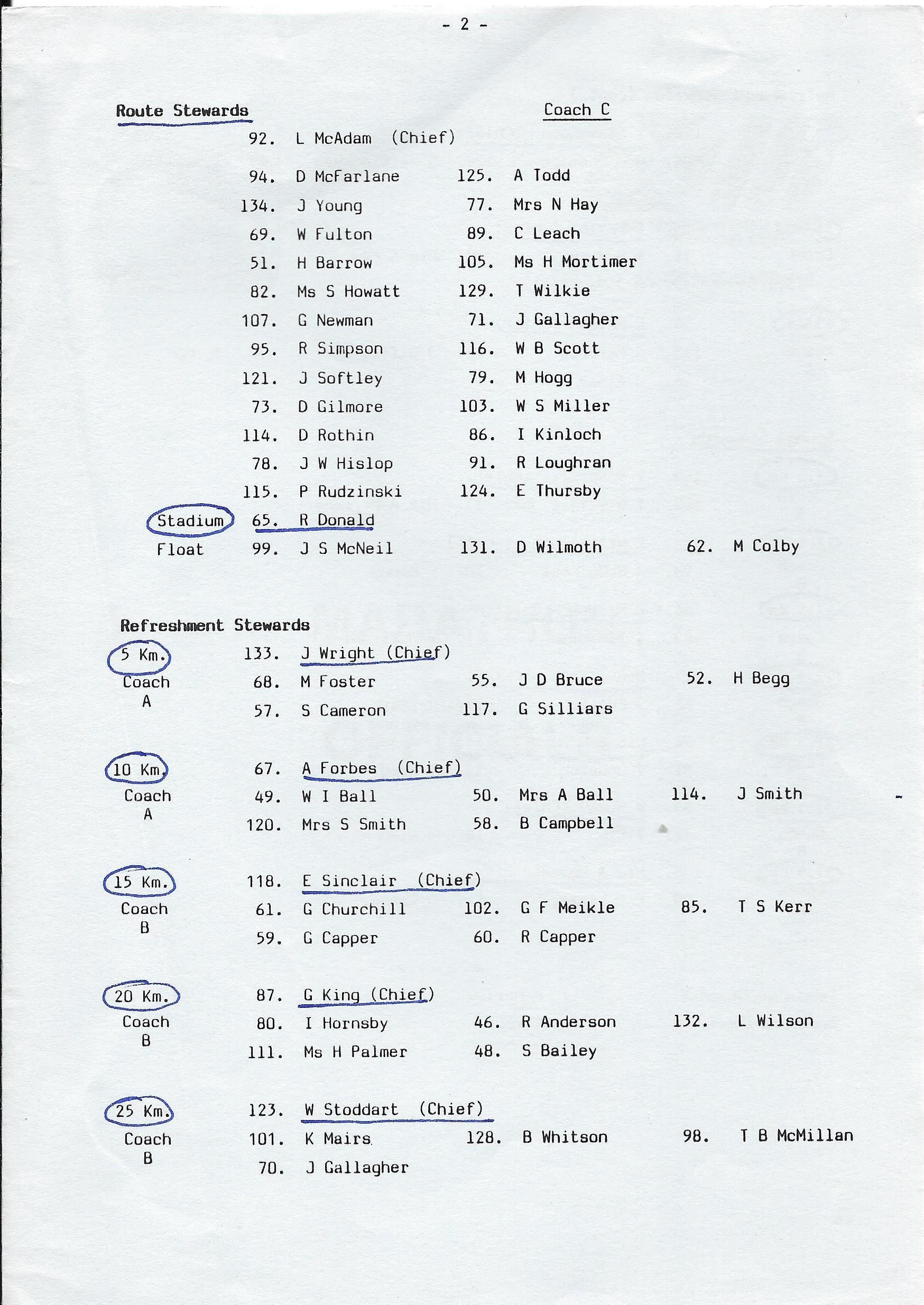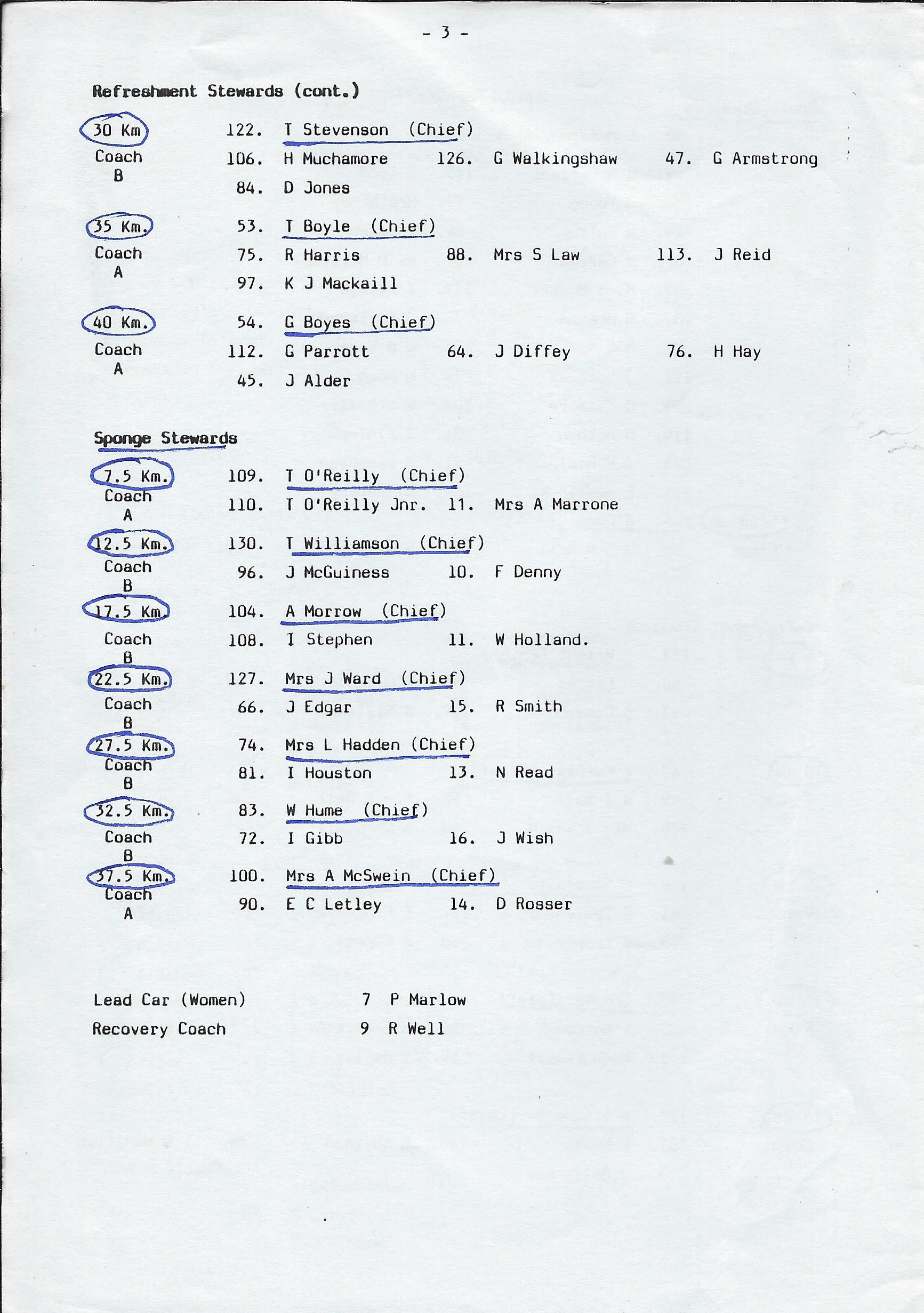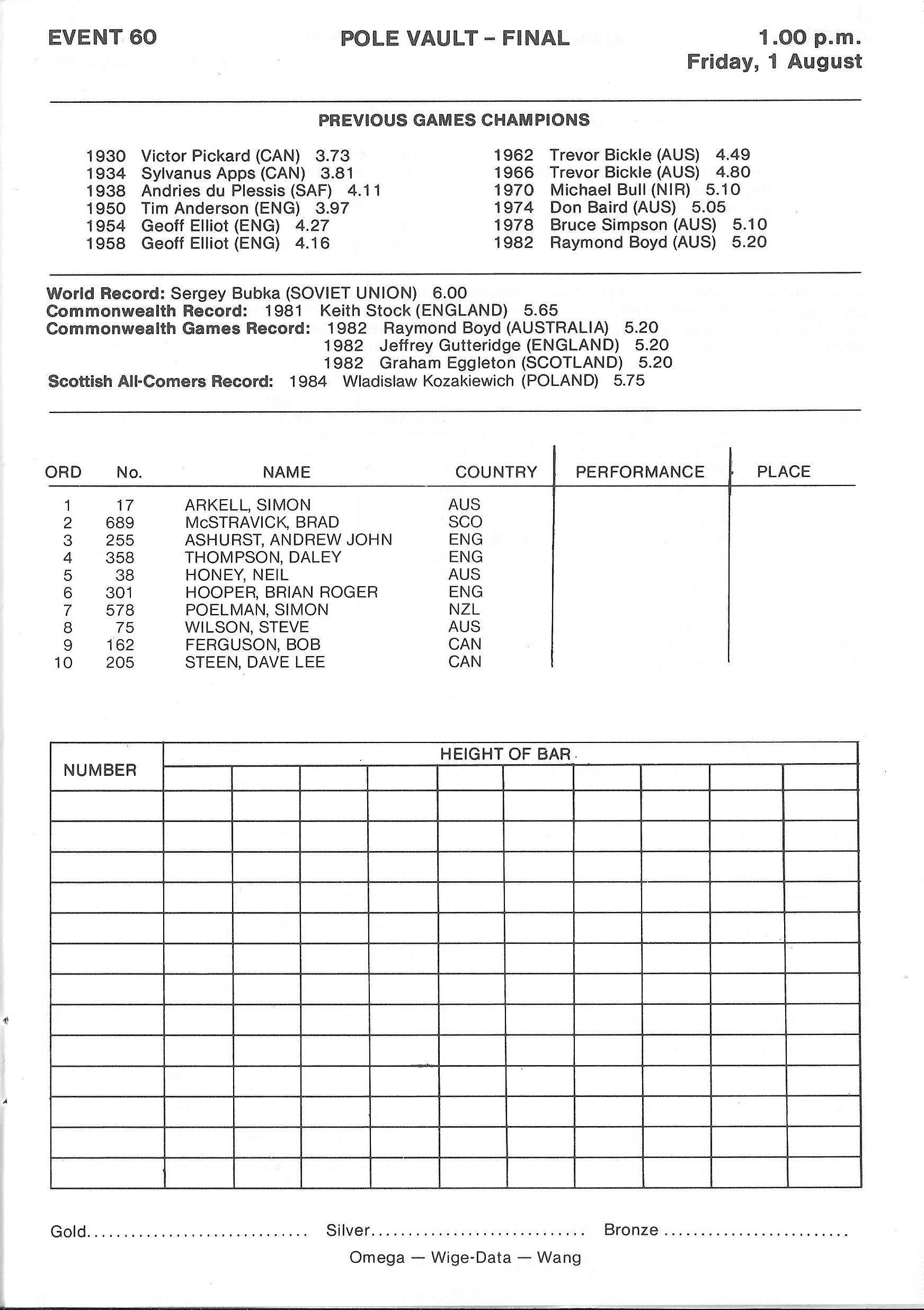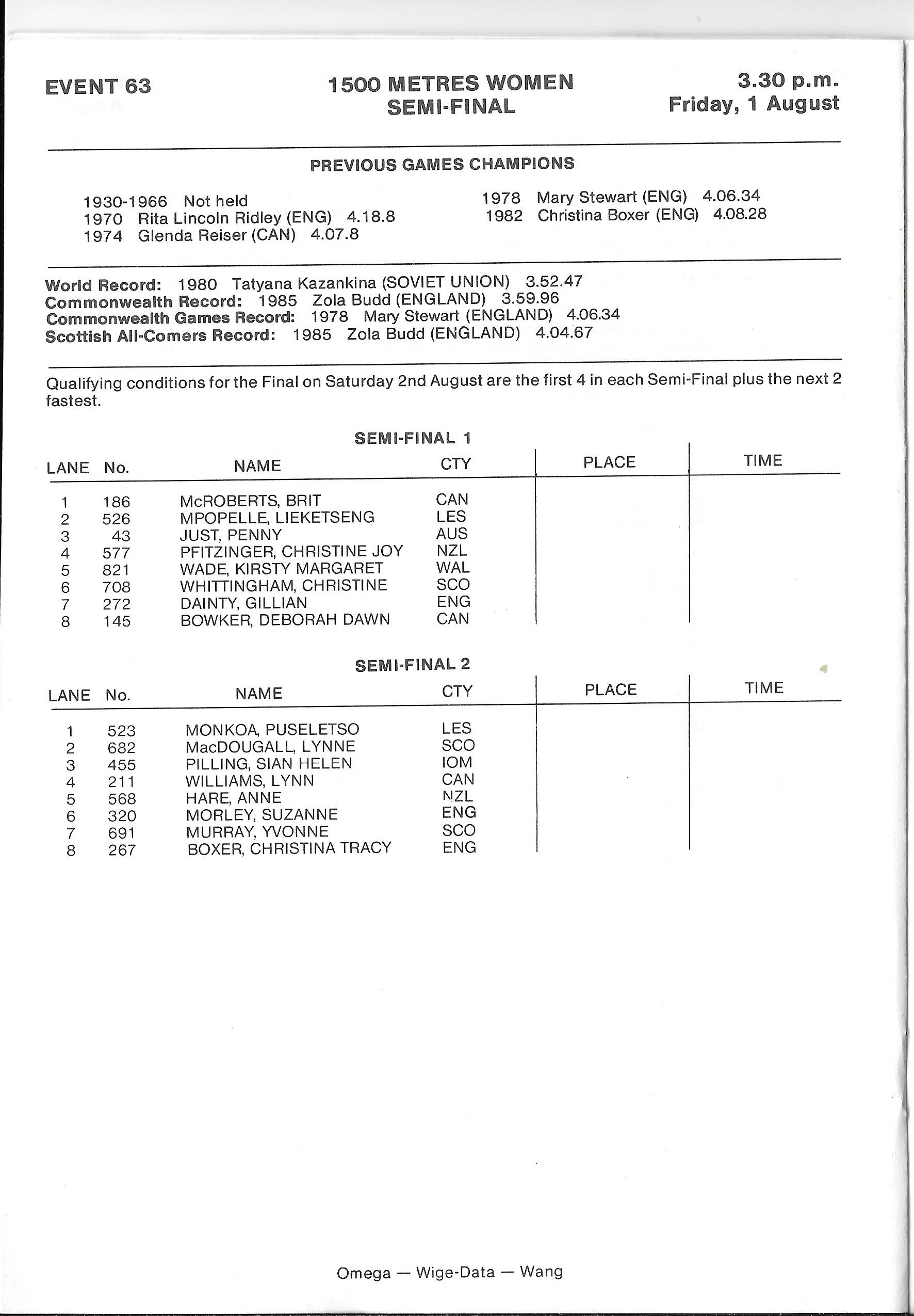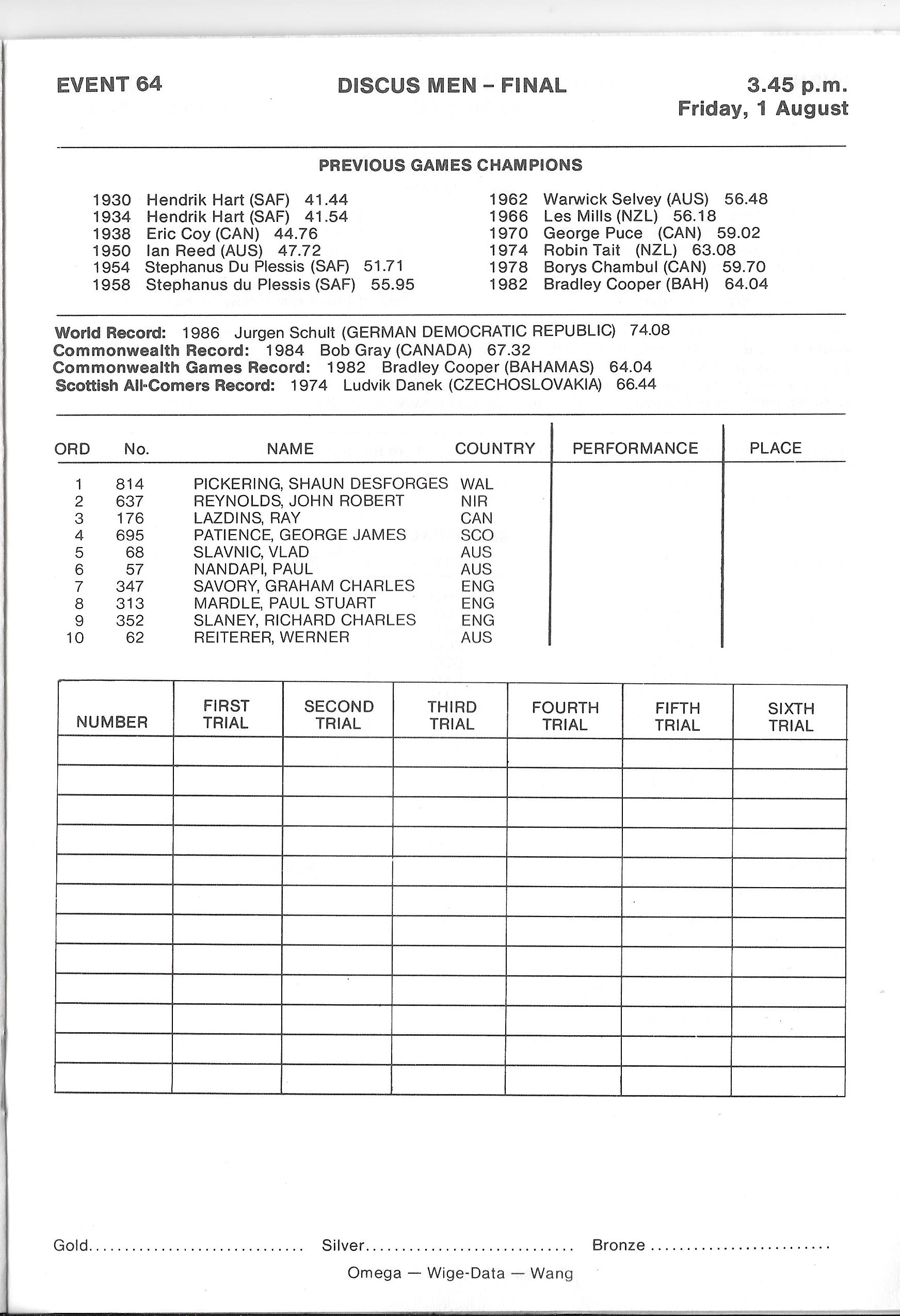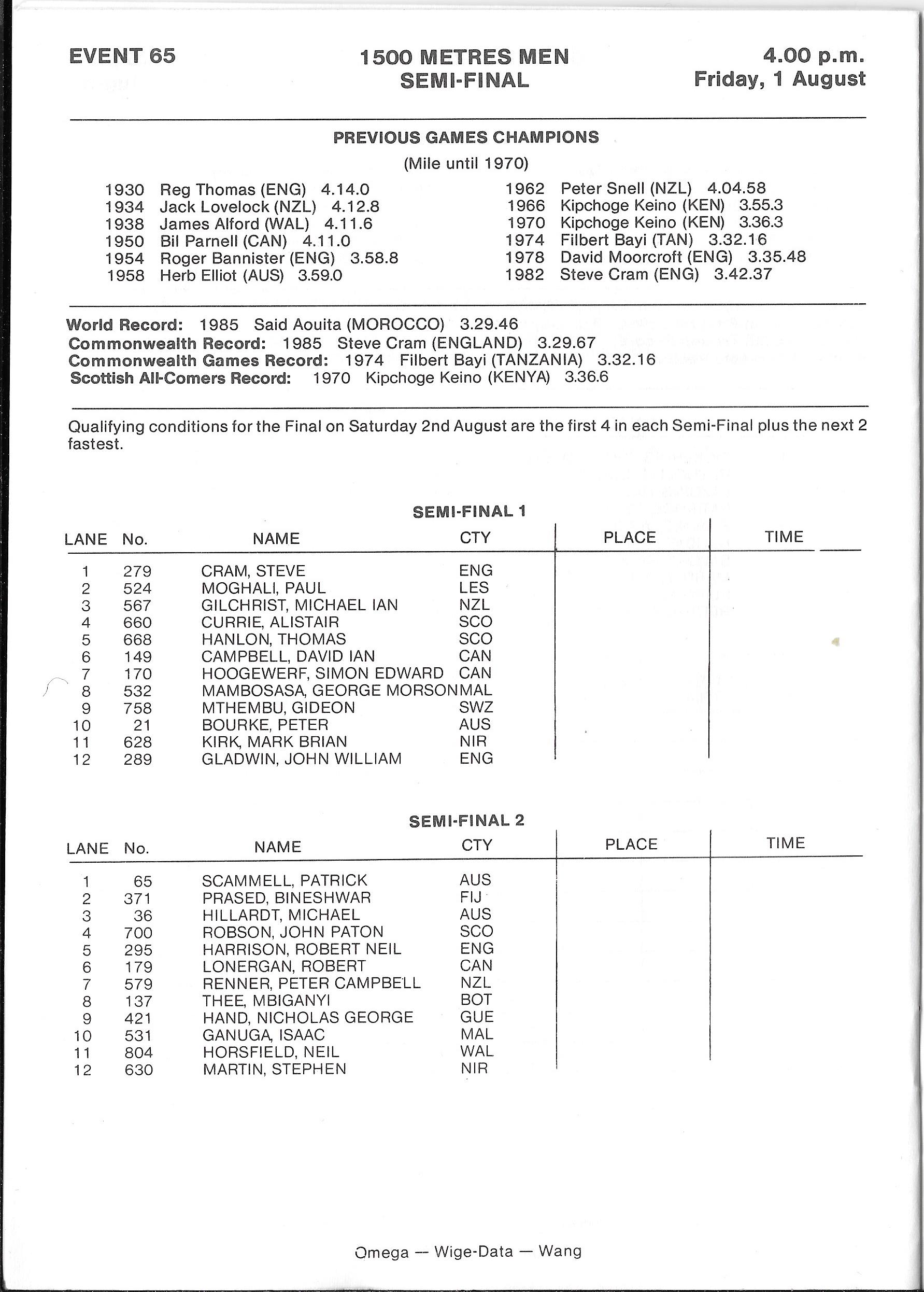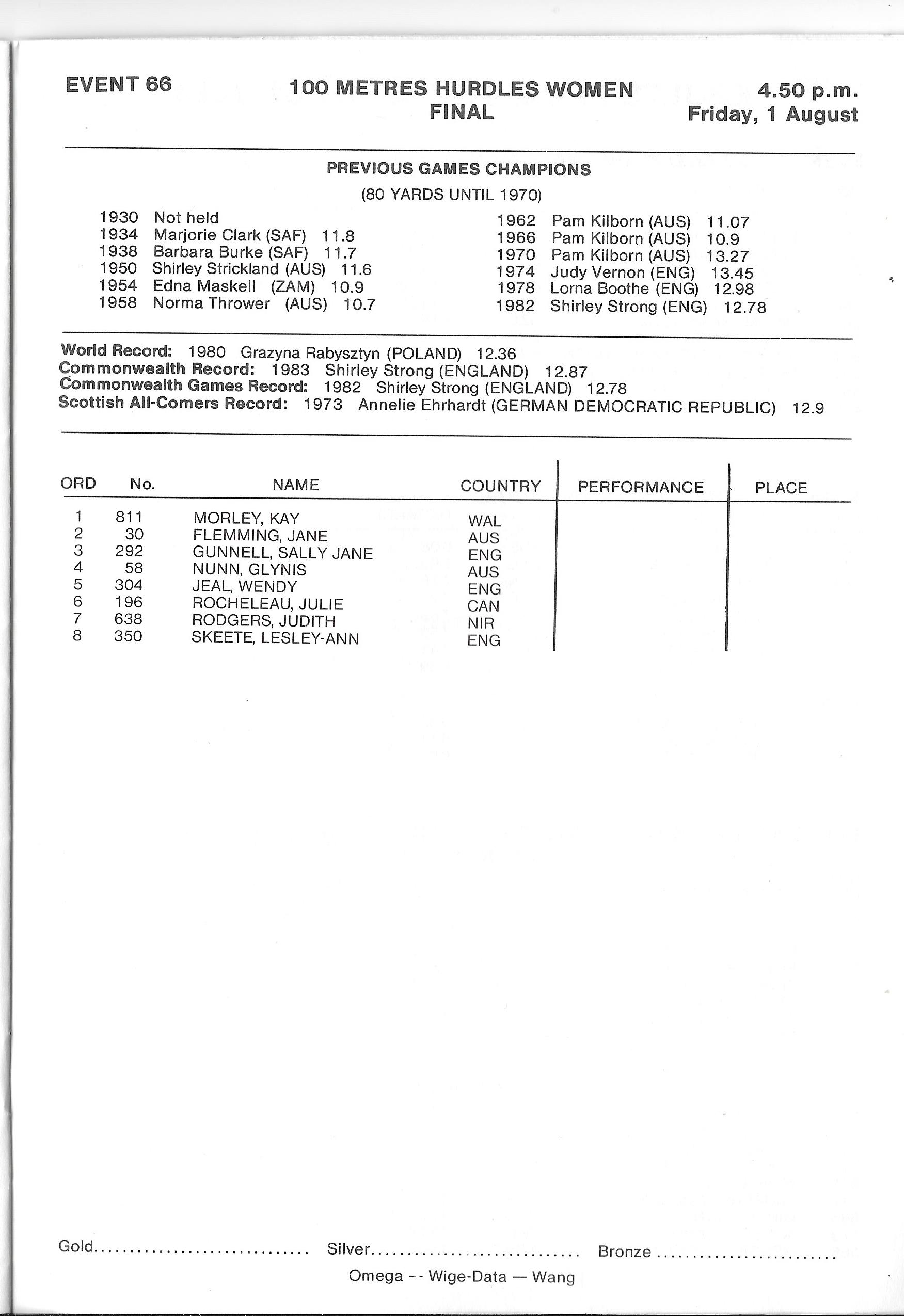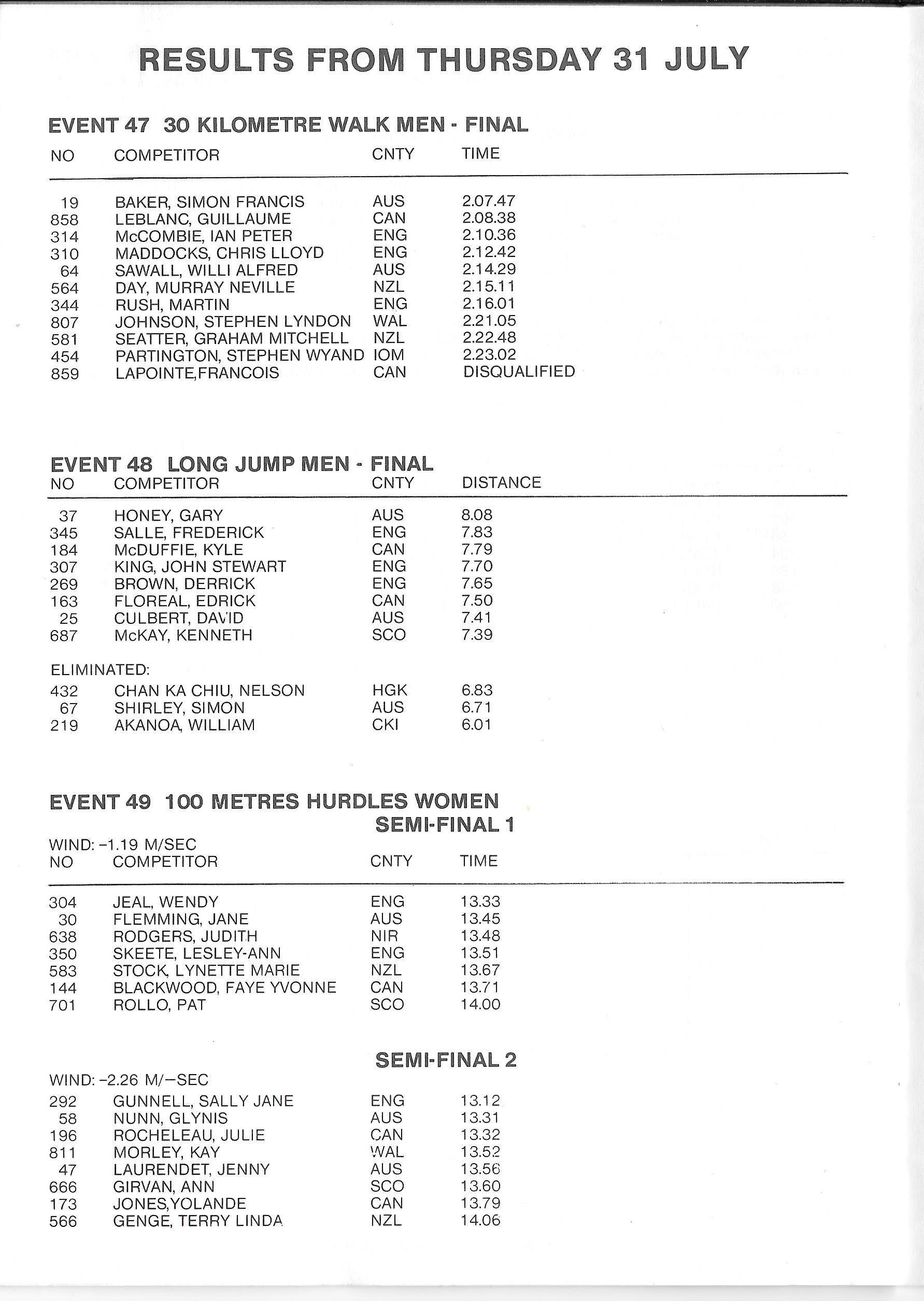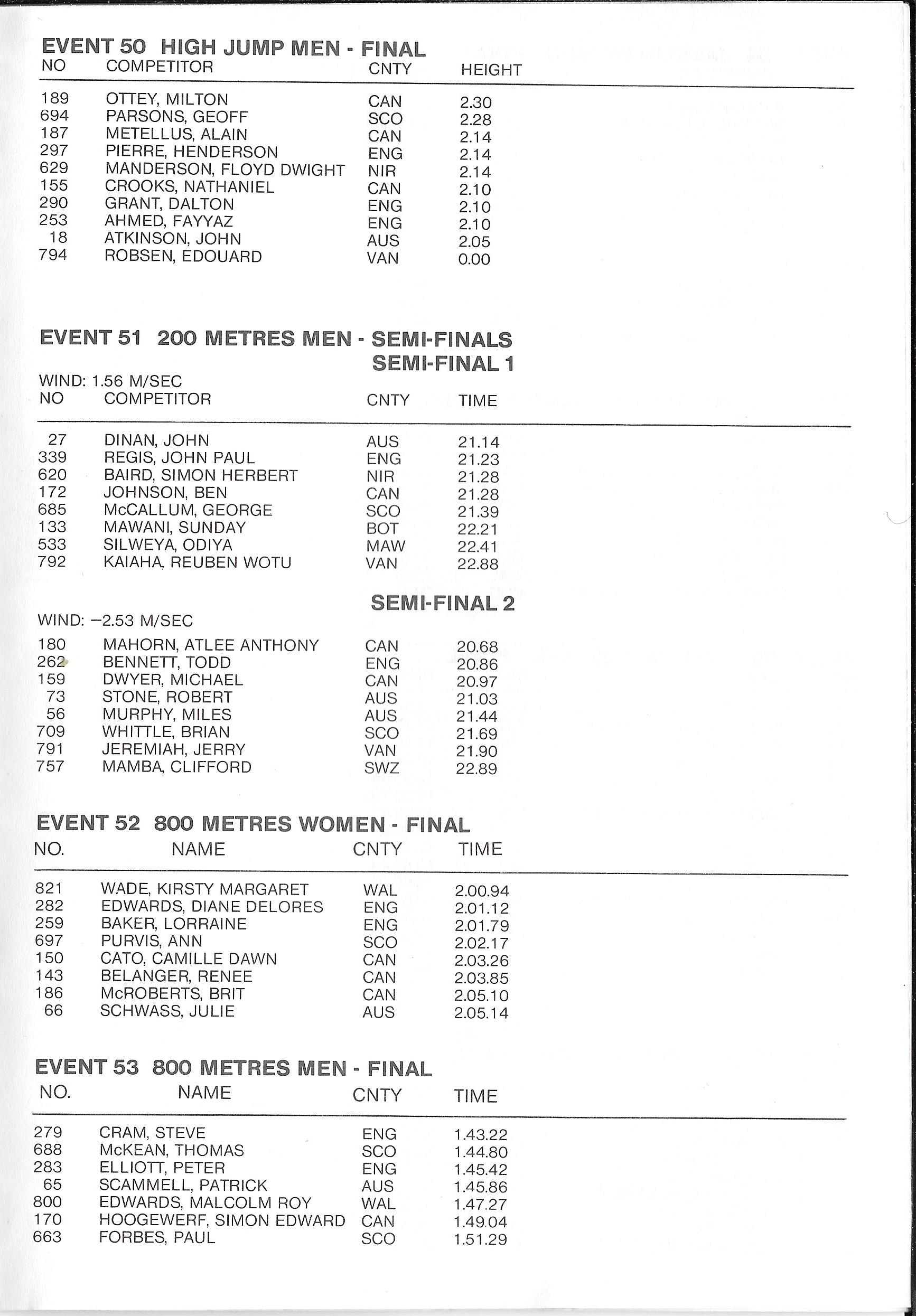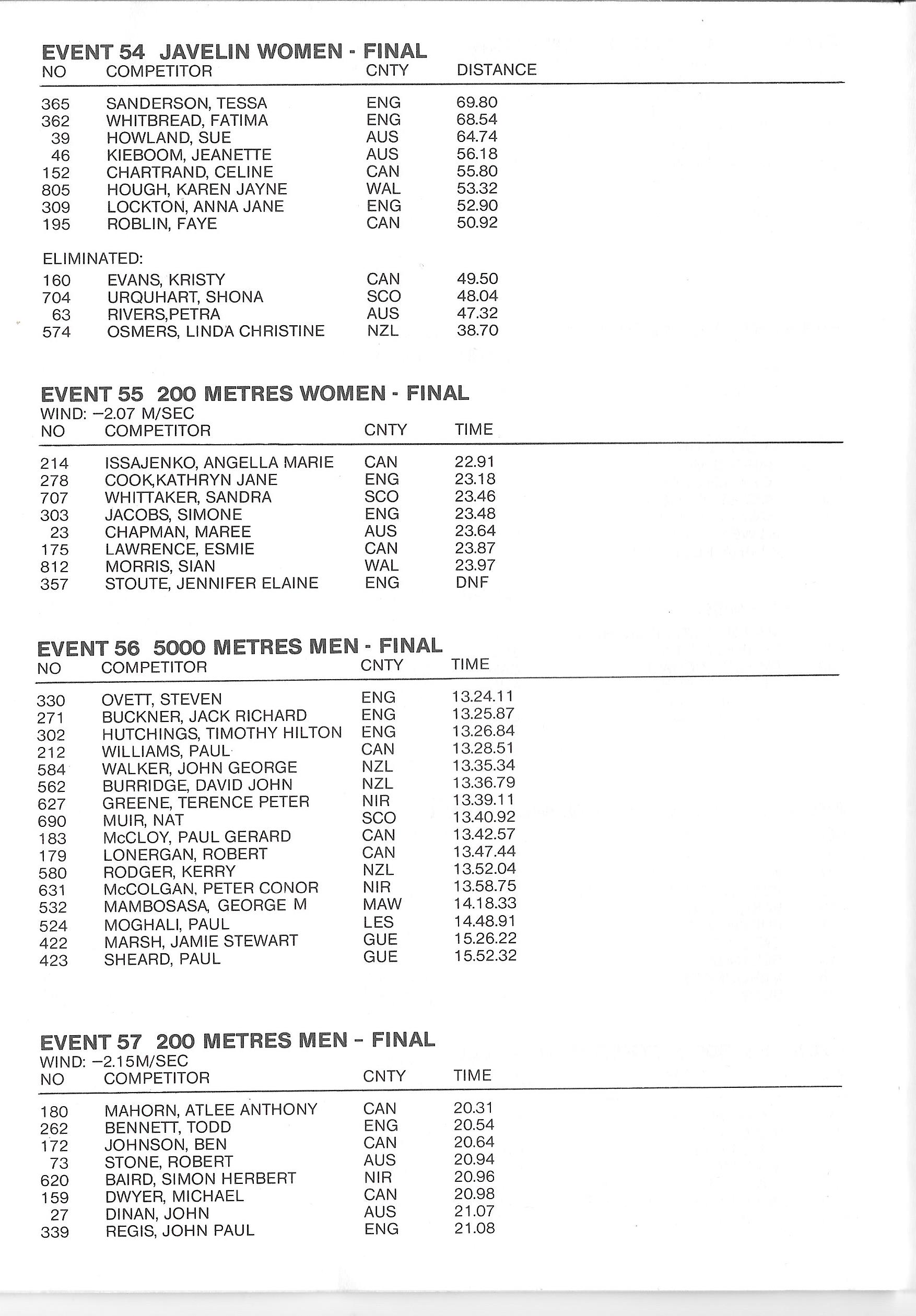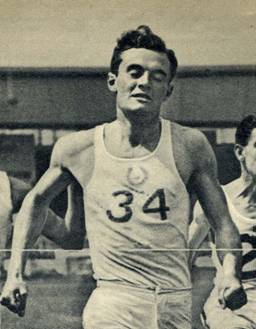Colin Young who ran for Atalanta in the 1960’s was good enough to send a copy of the Member’s Handbook for 1963 plus a copy of the invitation to the annual dinner. They have been copied and are reproduced here for information and as a companion to the page on the Atalanta Club. If you take the time to look through them you will see that they are a valuable Social history document: look at the geographical spread of the members – all over the UK, France, South Africa, Rhodesia, Canada, Nigeria, etc, etc. Note too that they are keeping in contact with founder members such as Hugh Maingay – the club was formed in 1926 and there are quite a few of those members still ‘on the books’. Lots of interesting stuff here. Thanks Colin!
Category: Uncategorized
Chris Upson
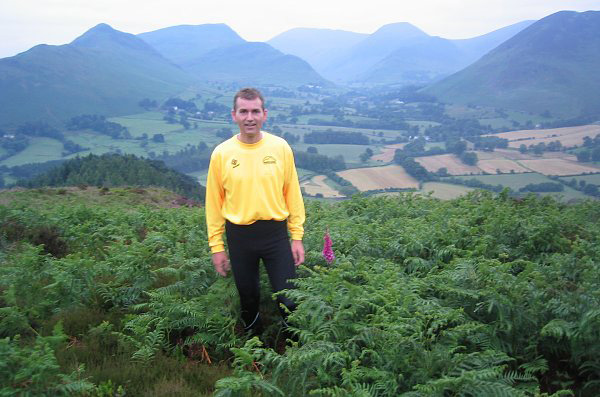
(Chris has of course run for Scotland in the Annual British and Irish Masters Cross Country International; is currently racing better than ever; and has a long, distinguished history as a dedicated hill-runner.)
CLUBs. Ronhill Cambuslang (previously Westerlands 2000-2014).
DATE OF BIRTH. 08/08/1963.
OCCUPATION. Naval Engineering at BAE Systems.
HOW DID YOU GET INVOLVED IN THE SPORT?
Very gradually… From 5 years old I knew I wanted to run on the hills and explore wild places. Teenage years were spent exploring the English Lake District on foot and bike. Mid 1980s I caught the Munro-bagging bug, and have since climbed all the Scottish Munros and Corbetts. In 1989 I had a near fatal climbing accident that broke my ankle and crushed a lumbar vertebra. In 1990 I came back more determined and climbed Mont Blanc, then Elbrus in Russia in 1993. I then spent 10 years rock climbing around Britain, Europe and the United States, before thinking about trying a couple of hill races in 2000 with Glen Rosa and Borrowdale. Since then I’ve completed more than 800 races, plus visiting Nepal 6 times and hiking across the Pyrenees 2 and half times.
Races have ranged from 800 metres at the Emirates, to the 10-stage Everest Sky Race in Nepal.
HAS ANY INDIVIDUAL OR GROUP HAD A MARKED INFLUENCE ON YOUR ATTITUDE OR INDIVIDUAL PERFORMANCE?
Recently, the stalwart veterans at Ronhill Cambuslang and SVHC Masters have inspired me to keep working hard. Uncompromising runners like Paul Thompson, Colin Feechan and John Thomson show that you can still perform at a high level as a V55. I guess that growing up in the 1970s I’m inspired by keeping things simple, and remembering the importance of physical discomfort.
WHAT EXACTLY DO YOU GET OUT OF THE SPORT?
A sense of belonging. A sense of purpose.
WHAT DO YOU CONSIDER TO BE YOUR BEST EVER PERFORMANCE?
Best performance: 1st M50 at Scottish Masters Cross Country at Kilmarnock in January 2015.
YOUR WORST?
I don’t remember any worst performances. I think all performances are part of the learning process.
WHAT UNFULFILLED AMBITIONS DO YOU HAVE?
Sub 2:50 marathon. Possibly a World Masters track medal.
OTHER LEISURE ACTIVITIES?
Playing violin. Playing with my 3-year old son Benjamin.
WHAT DOES RUNNING BRING YOU THAT YOU WOULD NOT HAVE WANTED TO MISS?
That gut-churning sense of excitement before every race.
The sense of relief and peace after the race.
CAN YOU GIVE SOME DETAILS OF YOUR TRAINING?
Quite ad hoc. At present, just lunchtime runs and weekend races.
Occasionally more structure leading up to a marathon.
Career Highlights in hill-running.
Won the FRA Long Distance Award in 2003 for Lakes24, a new route in the Lake District that bagged 24 Marilyns in 24 hours.
Favourite Races.
My favourite race of recent years is Defi de l’Oisans in France. My favourite Scottish races are probably Two Breweries and Pentland Skyline.
Most Memorable Race
Inter Lacs 2003. Restonica Valley, Corsica. 2-Stage event. Very rugged spectacular scenery. Ben Nevis is the most challenging and memorable Scottish race.
Other Interests.
I also occasionally take photos for the Geograph project; and sometimes play my violin with the Glasgow Chamber Orchestra.
Ian Leggett
IAN LEGGETT
(Ian Leggett, pictured above in a 1960s Nigel Barge road race, is one of our most durable SVHC runners. He made his debut for Clydesdale Harriers in 1963 as a senior and quickly became a first team runner. Clydesdale won team gold medals in Dunbartonshire Cross-Country relay championships. Between 1966 and 1969, Ian emigrated to Australia but returned to run Stage Six of the Edinburgh to Glasgow in the latter year. From then up to 1973 he was at his fastest, running particularly well in the Midland (West) District CC (4th) and the National (31st). In the 1969 Scottish Inter-Counties CC he had perhaps his best-ever race, finishing second to international athlete John Linaker. In addition he ran well on the track, won long road races and tackled severe challenges like the Mamore Hill Race and Ben Nevis. Of course he was awarded several Clydesdale Harriers championships, for example the 3 and 6 miles track events, and other club trophies. Ian Leggett raced a great deal more than nearly all athletes nowadays.
As a Veteran/Masters runner, Ian won Scottish middle distance track titles and ran for Scottish Veterans in the annual British and Irish CC International, winning team medals. His long fight to win a Scottish Masters CC title seemed to be making progress in 1986 when he was second M45 behind the aforementioned John Linaker. It was the same one-two (M50 this time) in 1990. Ian picked up two more silver medals (M60); and a silver and bronze in M65. At last, in 2011, Ian Leggett won a very well deserved gold medal in the M70 category, and followed that with, guess what, a silver the following year.
As the article below makes clear, he is not only a role model for ageing SVHC members, but also quite a character!)
YOU DON’T NEED TO BE MAD TO BE A RUNNER
BUT IT CERTAINLY HELPS
By Ian Leggett
I don’t usually reply to questionnaires as they usually result in cold calls about PPI or more questionnaires but in this case I felt I was safe enough.
My Name is Ian Leggett, appropriately enough for a runner born and raised in Maryhill, Glasgow, where my allegiance to the famous Partick Thistle (JAGS) was formed.
Married to Cathy for 52 years and blessed with 7 sons and 3 daughters (before we purchased a television set).
CLUBS currently Lothian Running club, prior clubs Livingston, Clydesdale, Whyalla Harriers South Australia.
AGE 76
OCCUPATIONS Ex Postman and admin worker.
HOW DID I GET INVOLVED IN THE SPORT? During National Service played football and was drafted into athletic involvement – anything to dodge drilling and cookhouse duties.
HAS ANY INDIVIDUAL OR GROUP INFLUENCED YOU? My first connection with athletics came as a result of following the Jags around the Glasgow Sports at Ibrox. In those days 5 a side football tournaments were highly contested summer events, but the highlight of that day was an Aberdeen runner by the name of Alastair Wood in the 3 mile race – left the other runners in the field for dead and made a lasting impression on me. He went on to win marathons but probably his finest achievement came in winning the famous London to Brighton race in 1972 and breaking the record.
Another was Brian McAusland and the Clydesdale Harriers team of the 70s.
We had great team camaraderie and absolutely fantastic changing facilities down in the basement of Clydebank Baths, with heated pipes and showers, where many a Bothy ballad rung out on a cold winter night after a training session.
Martin Hyman and the Livingston club of the 80s was another group which kept my momentum going in the sport,
WHAT HAVE YOU GOT OUT OF THE SPORT? Lots of friends, healthy wellbeing and, through Masters events, travelling to many places around the world I would probably have missed i.e. Finland, Denmark, France, Italy, Slovenia, Australia – and even England.
WHAT DO YOU CONSIDER YOUR BEST EVER PERFORMANCE? The last race I ran.
YOUR WORST? Undoubtedly, as a novice runner, running the second leg of the Edinburgh to Glasgow relay. I was completely unprepared for this type of contest. The second leg usually featured the cream of the best runners and I ended up shell-shocked at the end of the leg and almost called it a day there and then.
WHAT UNFULLFILLED AMBITION S DO YOU HAVE? To run overseas in a Scotland vest, instead of having to run as Team GB.
OTHER LEISURE ACTIVITIES? My 13 grand children help me fill up my time outside the sport.
TRAINING DETAILS? No secret! Arthur Lydiard processed the ultimate training schedules. It’s just adjusting your lifestyle to suit whatever your personal ambitions are.
Group therapy suited me best, with the old version of pack runs, adjusting to the season of either track, country or roads – we were all very versatile in those days. There weren’t as many races on the calendar as there are today.
When there was a free weekend without a race, there was a culture of going visiting other clubs to have a run and buffet afterwards. I remember one trip in particular as Clydesdale visited Greenock Wellpark but we had a lot of call-offs on the day. The buffet was enormous, with more than enough Scotch Pies, and we were obliged to eat more than our fair share so as not to offend our hosts.
I never thought I would be sick of the sight of a Scotch Pie in my life but that day was pretty close.
ADVICE TO ANYONE IN THE SPORT? Respect your body, because injury is the hardest obstacle to overcome.
AW RA BEST, IAN LEGGETT
QUIRKY RACES
One was a race organised by the notorious Barlinnie Prison in Glasgow to raise funds for HIV testing units within the prison.
We arrived at the main gate and were ushered into our changing room which was, the warden who escorted us took great pleasure in pointing out, where the last hanging had taken place.
The race itself consisted of 5 laps inside the prison. The head warden, who was a 6 foot 6inches Texan, started the race with a klaxon (no gun).
A few personalities, including Terry Butcher, a couple of Celtic second-string players, a well-known Glasgow boxer and some privileged prisoners, helped to make up the 50 starters. The privileged prisoners were conspicuous by their orange plimsolls, white tops and black shorts. At the start we were surprised by a few of the orange plimsolls flying off around the first corner. Then, at the second corner they were leaning against the wall, having a fag. As the rest of us raced round we were greeted by the rattling of tin mugs against the bars of the windows – it was like a Japanese prisoner of war movie.
After the race we were given a slap-up meal with the prisoners and enjoyed their company.
It was an enlightening experience but I gave a sigh of relief as the big double doors slammed shut with me safely outside.
Another race for the archives was in Broxburn, organised by BELL’S distillery, not so much the race itself but the finishing drinks were thimbles of whisky and the prizes consisted of bottles of the amber nectar. Can’t say if it was beneficial to after-race recovery but certainly an enjoyable warm down! By today’s drink -drive regulations we would have been very close to the limit.
Similarly the Broughton Brewery race at the New Year where the first prize was a crate of the local ale, second was half a crate and 3rd was 6 of the best; and a bottle to each finisher warmed the cockles of each heart.
My club was fortunate enough to finish 3rd in a prominent Glasgow road relay and the prize was 4 trouser presses. Not long afterwards, at the annual club Christmas handicap race, nicely wrapped up, were 4 very distinctive trouser presses.
If any readers would like to share details of any race that they found quirky, just send the information to Colin on the back of a twenty pound note!
(Brian’s friend and former Clydesdale Harrier team-mate Brian McAusland added the following. “On a two-hour plus Saturday afternoon run down through Dumbarton and the Vale of Leven and back home via The Boule – going out through Dumbarton he switched on his transistor radio (for the Thistle result later on), and there was Victor Sylvester’s music, so he grabbed me round the waist and ballroom-danced me for fifty or sixty yards up the High Street. Wasn’t even legal at the time!
At a Scottish Marathon Club dinner in Glasgow the first course was served, the staff scattered around the room waiting to clear the tables. When they got the nod from the heid bummer, they swung into action immaculately. Leggett grabbed the table numbers from our table and the one beside it, held them up and called out ‘Seven point six!’ a la ice dancing, gymnastics etc.”)
Betty Gilchrist
BETTY GILCHRIST
[Betty (W70) achieved clear victories in both the 2014 British and Irish Masters Cross Country International at Nottingham; and the 2015 Scottish Masters CC at Kilmarnock.]
CLUB: Ferranti AAC (a friendly and supportive club).
DATE OF BIRTH: 20 -9-44.
OCCUPATION: Retired.
HOW DID YOU GET INVOLVED IN SPORT: I lived in Saudi Arabia for over 20 years and met Ian Wilson who invited me to join his group.
HAS ANY INDIVIDUAL OR GROUP HAD A MARKED INFLUENCE ON YOUR ATTITUDE OR INDIVIDUAL PERFORMANCE?
Ian was a fantastic coach who really encouraged us and is still coaching very successfully in Ireland.
WHAT EXACTLY DO YOU GET OUT OF THE SPORT?
Keeps you fit and you meet some friendly people at races – and living in Edinburgh
we have great running routes on our doorstep – hills, river paths, canal paths or along the shore.
WHAT DO YOU CONSIDER TO BE YOUR BEST EVER PERFORMANCE OR PERFORMANCES?
Hard question but my favourite five races would be: Bahrain Marathon Relay; Brampton to Carlisle; Midnight Sun; Porty New Year’s Day; and of course Parkrun (great for us older runners).
YOUR WORST? Haddington Half.
WHAT UNFULFILLED AMBITIONS DO YOU HAVE?
To run a decent time at Haddington!!! (4th time lucky.)
OTHER LEISURE ACTIVITIES? Gym – swim – walk.
WHAT DOES RUNNING BRING YOU THAT YOU WOULD NOT HAVE WANTED TO MISS? Friends around the world.
CAN YOU GIVE SOME DETAILS OF YOUR TRAINING? Don’t really do any speed sessions any more. Simply go out and run. I had a bad foot injury about two years ago, and later that year had a hernia operation, so mileage and speed have dropped but I am still happy to be out there.
Monday – 3 miles + gym.
Tuesday – 5 miles fartlek + gym.
Wednesday – 5 miles off-road.
Thursday – 5 miles with hills + gym.
Friday – 7 miles tempo for me (= steady for my running partner).
Saturday – Parkrun or race.
Sunday – 90 to 105 minutes Time On Your Feet; or race.
(As one of her five favourite races, Betty names The Bahrain Marathon Relay. Below is some information about this unusual event.)
The Bahrain Marathon Relay, the largest race in the Middle East, takes place at the end of October, and starts at 10 a.m. at the Bahrain International Circuit, home of the Bahrain Grand Prix. Temperatures soar to the mid to high 30s by early afternoon. The 50 km event is undoubtedly an exhausting challenge, given desert conditions, with heat and humidity. There are 16 stages, each approximately 3 km in length. There are eight runners in a team. Each athlete will run either one, two or three legs of the relay. There may be 150 teams competing.
Ian and Teresa Wilson spent over 30 years working in Saudi Arabia and, through their positive coaching methods, succeeded in training seemingly ordinary athletes up to both Olympic and World Championships levels. Teresa is originally from Stillorgan in Co. Dublin. Ian is originally from Sunderland. Eventually, they decided to retire and settle in Co. Laois, Eire, at the end of 2013. Their company is Nuparc Wellness, a business established to assess health and wellbeing of individuals in large corporations. Ian is a UK Level 4 endurance coach; and Teresa a UK Level 2 endurance coach. Even in semi-retirement, hey have taken Irish teams to Bahrain.
The Bahrain Marathon Relay, for which the Wilsons have prepared many teams, was first run in 1981 and has grown to the point where the event attracts a large number of teams and athletes ranging from Olympic standard to those who just enjoy a healthy jog and the camaraderie of taking part. It has become an important highlight not only for Bahrain and its neighbouring countries but also for countless runners who fly in from all over the world to compete. There is a good deal of corporate sponsorship and almost two million dollars has been raised for charity, during the 27 years of the relay.
Roads through the desert, camel trains, extreme heat, rainstorms, sudden hot head- or tail-winds – all these aspects add to the uniqueness of this event. The full history of each race makes fascinating reading.
Scottish athletes who have taken part include Phyllis O’Brien (HBT); Ivie Rennie and Gordon Reid (Kilmarnock AC); Janice Madsen, former British Marathon International Lynn Harding, and David, Betty Gilchrist’s son.
Betty herself holds the record for most appearances by a woman in the Bahrain Marathon Relay, having run 22 stages. Teresa Wilson and Jackie Newton tie with 18.
Treasure Chest 4
This time we start with some from Alistair Blamire – a wee bit of a cheat since they are on his page, but not really because they are only just added!
Scottish Schools International – plugging Adidas spikes.
Edinburgh University Sports 1965, 3 Miles
Leading Ian Binnie, 1st stage E-G, 1965
Not sure where the next one came from but it’s a good one.
Scot Unis Cross Country Championships
Hugh’s Gems 4
Some more of Hugh Barrow’s photos, cuttings and starting with a badge! As we know he is British Milers Club member number 1, quite an honour, and the club badge in the beginning was designed by Frank Horwill. There are still more to be added.
Mike McLean (4), Dick Hodelet (2), Graeme Grant, and Hugh (5)
Alex Breckenridge who ran for USA in the Olympic Marathon
The Man Who Broke Hugh’s Record
Rangers Sports
Even Stars needed a Day Job
Gary Ralston wrote an excellent book on the men who created the Glasgow Rangers Football Club and called it The Gallant Pioneers. There is now a website of the same name and Hugh sent me the next five pictures which come from the site which is well worth a visit for anyone interested in the early days of our sport (or even the Rangers!) The captions are self-explanatory.
‘Half Mile Scramble’ is a fair description of most half mile races I’ve witnessed.
Warm Up at Portsea: Percy’s Training Camp.
Now, the coach would have to be pvc checked, the Mail would have a photographer round in minutes, the Guardian would have an editorial and an investigatory panel set up by the governing body!
Thanks Hugh!
Treasure Chest 2
As before – photographs, cuttings, pictures sent in which await transfer to another page and are being shown here meantime or which won’t fit another page at all but which are of interest. This time mainly from Graham MacIndoe who is well known for his superb photographs from the mid-1980’s in Scotland and his Facebook page (which you will find at www.facebook.com/ScottishRunning1980s ) but his interest in the sport is deeper than that and he has sent several pictures and cuttings that fit this website too. Starting with an oldie from Graham before getting more up to date.
Kilbarchan Park, 6th August 1910.
When I started in the sport shoes were actually made in Britain – names like Walsh and Foster were familiar to us all. Google them!
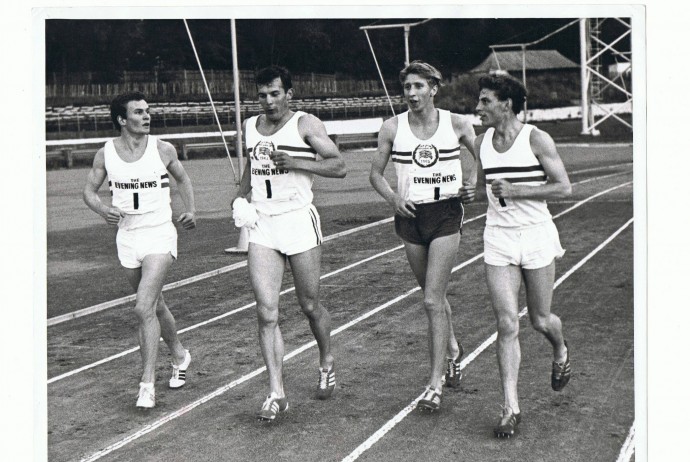
Hugh’s Gems 3
There are many great pictures of athletics history from all over the world that inspire us, entertain us, remind us and just make us feel good about our sport. These first ones are all from Hugh Barrow and are a real wander down memory lane as well as reminding us of the start of the sport in Scotland.
Under the Stand at Ibrox
In the days of the Rangers Sports at Ibrox, athletes changed in a huge space under the stand with a galvanised iron tank of cold water for ablutions. The top athletes changed elsewhere and came into the ground for the race. Above is the area where the invited athletes gathered for their event.
Hugh’s hero – actually the hero for most of a generation: Herb Elliott with Percy Cerutty. The friendship, trust, affection and mutual respect shows through in this one.
The programme cover from Hugh’s big race: when he set the world age group mile record
Some of Hugh’s friends and rivals
It was a great time to be a runner and the New Zealand runners were universally respected and admired. Arthur Lydiard was every bit as famous at Cerutty and his schedules were followed by even more athletes.
Nearer home: the route for the Edinburgh to Glasgow as shown in the programme
Some ways are better than others to sell tickets!
A First World War Photograph before the charity match between Rangers FC and the Rest of Glasgow
Now two interesting, old cuttings …
and, from Rangers Sports, 1959 –
lots of good Scots based, Scottish athletes facing the best in the world and not coming off second best,
More to come
1986 Games Programmes
Among the significant documentation provided for the Games was the programme, but in fact there were two. The one least seen was the ‘Media Copy’ and we’ll have a look at that first. I have a number of copies of both – almost all from Des Yuill but a couple from David Bowman – and this one was chosen because it was for the day of the marathon races, men’s and women’s. The Media Copy ran to 24 pages of thin, matt finish paper, not ‘built to last’ so to speak and it was issued to ALL officials and to Press, TV and Radio. It had all the information you needed but was a thin, flimsy document. When you opened the document up, the first information was about the officials with comprehensive lists.
Then came basic technical information …
Then came the details of the day’s events, after only Seven pages including the cover.
This particular programme belonged to David Bowman who was largely responsible for organising the marathon, as he had been in the 1970 Games and as such it had an insert not generally available. This listed the officials for the event in great detail – the four sheets that follow have David’s notes on the day.
Even a cursory glance at the list of officials above reveals many well kent names in Scottish athletics who were prepared to perform all sorts of tasks to keep the show on the road – George King and Bil Stoddart from Greenock Wellpark, Tommy Boyle, Tom O’Reilly, Tom Stevenson, Tom Williamson, Alastair Macfarlane, Dunky McFarlane, many, many more.
The programme continued
Every day the programme contained the results of the previous day’s events –
That was the media copy of the programme – not many left now of the hundreds that were printed. It was basic information – lists of officials, technical information, events of the day, yesterday’s results and the people in charge of each event had an event specific insert. This one was free of course …..
The copy sold to the public had 60 pages of strong, shiny paper, 32 single page adverts, two double page adverts and a list of advertisers. It contained everything that was in the Media Copy. The adverts were for firms many and varied – 4 breweries and 5 distilleries for a start along with many prominent Scottish firms such as Wang in Cumbernauld, and international companies – Nikon, Rank Xerox, British Telecom, Coca-Cola, Omega. Obviously meant to be kept for a souvenir. Cost was 75 pence. Des gave me copies of both for most days.
Hamish Stothard’s Races
The following comprehensive list of Stothard’s races was drawn up by Alex Wilson – there is always a wealth of research involved in compiling such a list and we are grateful to him for it.
|
25.03.1928 |
Colinton | Merchiston Castle Games | 100y | 12.2 | 1 | |
| 25.03.1928 | Colinton | Merchiston Castle Games | 300y hcp | 39.4 (scr) | 1 | |
| 25.03.1928 | Colinton | Merchiston Castle Games | 400y | 56.8 | 1 | |
| 25.03.1928 | Colinton | Merchiston Castle Games | 880y | 4 | ||
| 02.04.1928 | Colinton | Merchiston Castle Games | CC | 22:28.6 | 1 | Junior race; won very easily |
| 23.03.1929 | Colinton | Merchiston Castle Games | 880 | 2:09.0 | 1 | |
| 23.03.1929 | Colinton | Merchiston Castle Games | LJ | 5.41 m | 1 | |
| 26.03.1929 | Raeburn Place | Merchiston Castle v Edinburgh Academy | 880 | 2:12 or thereabouts | 2 | |
| 04.04.1929 | Colinton | Merchiston Castle Games | CC | 21:46.6 | 1 | Junior race; won easily; record (previously 22:08) |
| 15.03.1930 | Colinton | Merchiston Castle Games | CC | 26:55 | 1 | 59 ran; won by quarter a mile |
| 19.03.1930 | Colinton | Achilles v Merchiston | 880 | 2:07.6 | 1 | 2 – W.C. Wentworth (Achilles) 20 y (ran 4 y wide as handicap!!) |
| 19.03.1930 | Colinton | Achilles v Merchiston | LJ | 5.51m | 4 | 1 – R.W. Revans (Achilles) 6.86m (competed at 1928 Olympics) |
| . 03.1930 | Colinton | Merchiston Castle Games | Mile | 4:44.6 | 1 | Equals school record set by L.H. Weatherill in 1924 (competed for England in 1934 and 1938 Empire Games) |
| 26.03.1930 | Colinton | Merchiston Castle Games | 440 | 54.4 | 1 | School record (previously figures of 55.2 were jointly held by G.O. Turnbull in 1893 and W.H. Welsh in 1898); windy |
| 29.03.1930 | Colinton | Merchiston Castle Games | 880 | 2:04.4 | 1 | School record |
| 01.04.1930 | Colinton | Merchiston Castle v Edinburgh Academy | 440 | 55.0e | 2 | 1 – J.R.S. Watson (E.A.) 54.6; 2 – J.C. Stothard (Merchiston) 3 y
windy and wet |
| 01.04.1930 | Colinton | Merchiston Castle v Edinburgh Academy | 880 | 2:10.0 | 1 | 2 – J.D.A. Anderson (Merchiston) 10 y |
| 26.03.1931 | Colinton | Merchiston Castle Games | Mile | 4:43.2 | 1 | 2:25 at 880; magnificent last quarter; won by 40-50 y; school record; cold wind blowing |
| 31.03.1931 | Raeburn Place | Merchiston Castle v Edinburgh Academy | 880 | 2:13.2 | 1 | 2 – I.L. Young (Academy) 40 y |
| 31.03.1931 | Raeburn Place | Merchiston Castle v Edinburgh Academy | Mile | 4:55.6 | 1 | 2 – H.J.S. Matthew (Academy) 20 y |
| 31.03.1931 | Raeburn Place | Merchiston Castle v Edinburgh Academy | 4×220 | 1:42.0 | 1 | Ran anchor leg; won by 10 y |
| 31.03.1931 | Raeburn Place | Merchiston Castle v Edinburgh Academy | LJ | 5.65 m | 3 | 1 – D.R.S. Milne 5.97m |
| 18.03.1932 | Colinton | Achilles v Merchiston Castle School | 880 | 2:05.0 | 1 | |
| 23.03.1932 | Colinton | Merchiston Castle Games | 440 | 53.6 | 1 | School record |
| 24.03.1932 | Colinton | Merchiston Castle Games | Mile | 4:39.0 | 1 | School record |
| 26.03.1932 | Colinton | Merchiston Castle Games | 880 | 2:03.8 | 1 | School record |
| 30.03.1932 | Colinton | Merchiston Castle v Edinburgh Academy | 880 | 2:22.0 | 1 | |
| 30.03.1932 | Colinton | Merchiston Castle v Edinburgh Academy | Mile | 5:07.8 | 1 | |
| 03.12.1932 | Cambridge | Intervarsity | 4×880 | 7:58.4 | 1 | A.K. Pardhy, Forbes T. Horan, J.C. Stothard, C.J. Tucker; equals record |
| 02.03.1933 | Cambridge | Cambridge Uni. sports | 880 | 2:02.2 | 1h1 | |||
| 04.03.1933 | Cambridge | Cambridge Uni. sports | 880 | 1:59.4 | 2 | 1 – Forbes T. Horan 1:59.4; 2 – J.C. Stothard inches; 3 – Cyril J. Tucker 7 y | ||
| 18.03.1933 | White City | Intervarsity | 880 | 2:00 e | 3 | 1 – Norwood P. Hallowell (Harvard & Balliol) 1:55.8: 2 – F.T. Horan (Cambridge )12 y; 3 – Stothard (Cambridge) 12 y | ||
| 25.03.1933 | Colinton | Merchiston Castle Games | 100y | 10.7 | 2 | Open to Merchistonians; 1 – P.C. Barkla 10.6; 2 – Stothard; 3 – D.R.S. Milne; less than a yard covered the first three | ||
| 28.03.1933 | Glenalmond | 440 | 1 | |||||
| 20.05.1933 | White City | U.A.Uni. champs | 880 | 1:58.2 | 1 | 1 – J.C. Stothard (Cambridge, Alverstone) 1:58.2; 2 – C.W.J. Claydon (London) 6 y; 3 – E. Illingsworth (Leeds) 1 ½ y | ||
| 09.06.1933 | Cambridge | AAA v Cambridge Un. | 880 | 1:58.4 | 1 | 2 – Thomas H. Scrimshaw (AAA) 4 y; 3 – C.J. Tucker (Cambridge) | ||
| 08.07.1933 | Cambridge, MA, USA | Oxbridge v Harvard & Yale | 880 | 3 | 1 – Pen Hallowell (Oxford) 1:54.0; 2 – J. White (Harvard); 3 – J.C. Stothard (Cambridge) | |||
| 15.07.1933 | Princeton, NJ, USA | Oxbridge v Princeton & Cornell | 880 | 4 | 1 – R.W. Bonthron (Princeton) 1:53.0; 2 – N.P. Hallowell (Oxford) 1:53.8; 3 – P. Vipond (Cornell); 4 – J.C. Stothard (Cambridge) | |||
| 08.11.1933 | Oxford | Inter-College Relays | 4×440 | 3:32.2 | 1 | Ran last leg for Caius | ||
| 25.11.1933 | Oxford | University Relays | 4×880 | 8:04e | 2 | Oxford won by 40 yards in 7:56.4; Stothard ran 1:57.8 on third leg | ||
| 14.02.1934 | Cambridge | Inter-college meeting | 880 | 2:06.4 | 1 | |||||||||||
| 22.02.1934 | Cambridge | Cambridge Uni. Handicaps | 1320y hcp | 3:09.2 | 1 | Won from scratch | ||||||||||
| 26.02.1934 | Cambridge | Cambridge Uni. sports | Mile | 4:38e | 2h1 | E.V. Hope won by 40 y in 4:30.6 | ||||||||||
| 01.03.1934 | Cambridge | Cambridge Uni. sports | Mile | 4:23.6 | 1 | 2 – Michael John Kent Sullivan 12 y; 3 – E.V. Hope 7y | ||||||||||
| 03.03.1934 | Cambridge | Cambridge Uni. sports | 880 | 1:56.6 | 1 | 2 – M.J.K. Sullivan 4 y; 3 – E.V. Hope 2 y | ||||||||||
| 10.03.1934 | White City | Intervarsity | 880 | 1:54.6 | 2 | 1 – N.P. Hallowell (USA & Balliol) 1:54.2 (record); 2 – J.C. Stothard (Merchiston & Caius) 1:54.6; 3 – C.J. Tucker 6 y | ||||||||||
| 05.06.1934 | Cambridge | Cambridge Un. v AAA | 880 | 1:59.8 | 1 | 2 – Michael H.C. Gutteridge 5 y | ||||||||||
| 14.06.1934 | New Goldenacre | Atalanta v Heriot’s School AC | 880 hcp | 2:03.5 [estimated] | 1 | Won in 2:09.4 (conceded 36 yards by running wide) | ||||||||||
| 23.06.1934 | Hampden Park | SAAA | 880 | 1:58.8 | 1 | 2 – R. Graham 10 y; 3 – I.A. Murray | ||||||||||
| 21.07.1934 | White City | Oxbridge v Princeton & Cornell | 880 | 1:58.6 | 1 | 2 – Bill Bonthron (Princeton) 1:59.0 (2 y); 3 – Steve Sampson (Cornell) 10 y | ||||||||||
| 04.08.1934 | White City | British Empire Games | 880 | 1:56.0 | 1h3 | 2 – Jerry Sampson (CAN) 9 y; 3 – Clive Whitehed (ENG) | ||||||||||
| 06.08.1934 | White City | British Empire Games | 880 | 1:55.6 | 3 | 1 – Phil Edwards (CAN) 1:54.2; 2 – Willie Botha (RSA) 1:55.5; 3 – J.C. Stothard (SCO) 1:55.6; 4 – John Powell (ENG) 1:55.6 | ||||||||||
| 06.08.1934 | White City | British Empire Games | 4×400 | 3 | 1 – England 3:16.8; 2 – Canada 4 y; 3 – Scotland (Wallace, Wylde, Stothard, Hunter) | |||||||||||
| 01.12.1934 | Cambridge | University Relays | 4×880 | 7:58.5 | 1 | 1:59 anchor leg; Cambridge won by 90 y | ||||||||||
| 01.12.1934 | Cambridge | University Relays | 4×440 | 3:24.2 | 1 | Anchored Cambridge to victory by 6 y | ||||||||||
| 08.02.1935 | Cambridge | Inter-college meeting | 440 | 51.5 | 1 | Won by 10 yards | ||||||||
| 08.02.1935 | Cambridge | Inter-college meeting | 880 | 2:02.8 | 1 | Won by 7 y | ||||||||
| 14.02.1935 | Cambridge | Inter-college meeting | LJ | 5.98 m | 3 | |||||||||
| 14.02.1935 | Cambridge | Inter-college meeting | 880 | 2:08.6 | 1 | |||||||||
| 14.02.1935 | Cambridge | Inter-college meeting | 3 miles | 16:27.2 | 1 | Tied with M.F. Dutton (Caius) | ||||||||
| 26.02.1935 | Cambridge | Cambridge Uni. Handicaps | 1320y | 3:04.8 | 1 | Won from scratch | ||||||||
| 05.03.1935 | Cambridge | Cambridge Uni. sports | 880 | 2:00.0 | 1 | 2 – J.L. Capper 8 y | ||||||||
| 07.03.1935 | Cambridge | Cambridge Uni. sports | Mile | 4:18.8 | 1 | 2 – Peter D. Ward 50 y | ||||||||
| 23.03.1935 | White City | Intervarsity | 880 | 1:55.4 | 1= | Tied with M.J.K. (Cambridge) | ||||||||
| 23.03.1935 | White City | Intervarsity | Mile | 4:23.2 | 1 | 2 – W.T. Squires (Oxford) 4:23.2 (inches) | ||||||||
| 18.05.1935 | White City | U.A.Uni. champs. | 880 | 1:56.6 | 1 | 2 – M.J.K. Sullivan 1:57.4; 3 – Jim Alford (Cardiff) 1:58.0 | ||||||||
| 25.05.1935 | White City | Kinnaird Trophy | 880 | 1:57.2 | 1 | 2 – Tom Scrimshaw 1:58.1e (5 yds); 3 – Brian F. McCabe 1:58.1e | ||||||||
| 10.06.1935 | White City | British Games | Mile | 4:30.2 | 1 | 2 – L. Nilsson (SWE) 10 y | ||||||||
| 15.06.1935 | Cambridge | AAA v C.U. | Mile | 4:15.8 | 1 | 2 – Aubrey V. Reeve (AAA) 4:18. (18 y); 3 – B.C. Eccles (AAA) 12 y | ||||||||
| 22.06.1935 |
Hampden |
SAAA | 880 | 1:53.6 | 1 | 2 – W.C. Botha (E.Uni. & RSA) 1:56.6; 3 – A.D.G. White (TVH) | ||||||||
| 29.06.1935 | Hampden | GBR v FIN | 880 | 1:57.4 | 1 | 2 – John Powell 1:58.2 (5 y) | ||||||||
| 29.06.1935 | Hampden | GBR v FIN | 4 x 880 | 7:52.0 | 1 | A. Collyer, J. Powell, T. Riddell, J. Stothard | ||||||||
| 30.06.1935 | Antwerp | Achilles v BEL clubs | 800 | 1:57.4 | 1 | |||||||||
| 03.07.1935 | Craiglockhart | Atalanta v Eastern Dis. | 440 | 52.4 | 1 | |||||||||
| 03.07.1935 | Craiglockhart | Atalanta v Eastern Dis. | 880 | 2:00.6 | 1 | 2 – W.H. Whalley 2:01.0 | ||||||||
| 12.07.1935 | White City | AAA | 880 | 1:56.1 | 1h1 | |||||||||
| 12.07.1935 | White City | AAA | 880 | 1:53.3 | 1 | 2 – John Powell 1:53.8; 3 – Ralph Scott 1:54.0 | ||||||||
| 20.07.1935 | White City | Oxbridge v Harvard & Yale | Mile | 4:26.8 | 1 | 2 – John Scheu (Harvard ) 4:29.6; 3 – Roswell Brayton (Harvard) 20 y | ||||||||
| 27.07.1935 | White City | GBR v FRA | 880 | 1:57.4 | 1 | 2 – J. Powell 1:57.4 (inches); 3 – R. Soulier (FRA) 8 y | ||||||||
| 11.08.1935 | Munich (Dante Stadium) | GER v GBR | 800 | 1:54.4 | 1 | 2 – W. Dessecker (GER) 1:54.6; 3 – H. König (GER) 1:56.4; 4 – T.H. Scrimshaw (GBR) 1:56.8 | ||||||||
| 16.08.1935 | Budapest | World Student Games | Medley; last leg | 3:31.2 | 1 | 1 – B.U.A.C. 3:31.2; 2 – Germany 3:32.2; 3 – Czechoslovakia 3:33.8 | ||||||||
| 17.08.1935 | Budapest | World Student Games | 800 | 1:59.1 | 1h1 | |||||||||
| 18.08.1935 | Budapest | World Student Games | 800 | 1:56.0 | 1 | 2 – Georg Pochat (GER) 1:56.5; 3 – Paul Faure (FRA) 1:56.6 | ||||||||
| 22.08.1935 | Zagreb | B.U.A.C.v YUG | 800 | 1:50.8 | 1 | Doubtful | ||||||||
| 09.06.1936 | Hawkhill | Sports Dispatch Trophy | Mile | 4:35.0 | 1 | 2 – Ian H. MacDonald (E.U.) 4:36.5 (9 y) |
| 13.06.1936 | White City | Kinnaird Trophy | 880 | 2:03 | 2h1 | |
| 13.06.1936 | White City | Kinnaird Trophy | 880 | 1:56.3e | 3 | 1 – John Powell 1:55.4; 2 – Brian MacCabe 1:55.8 (2 ½ y); 3 – J.C. Stothard 1:56.3 (3 y); 4 – Reg Thomas 1:56.5 |
| 18.06.1936 | New Goldenacre | Ed. Un. & FP v Western District & FP | Mile | 4:25.2 | 1 | 2 – G.A. Smith 20 y |
| 27.06.1936 | Hampden Park | SAAA | Mile | 2 | 1 – R. Graham 4:12.5; 2 – J.C. Stothard 50 y; 3 – Ian MacDonald 20 y | |
| 30.06.1936 | Helenvale Park | Glasgow Transport Sports | 1000 hcp | 2:13.3 | 1 | 2 – Bobby Graham (scr) 2:14.2 (6 y) |
| 10.07.1936 | White City | AAA | 880 | 1:57.5 | 2h4 | DNQ for final |
| 10.07.1936 | White City | AAA | Mile | d.n.f. |
| 29.05.1937 | White City | Kinnaird Trophy | Mile | 4:19.3e | 3 | 1 – S. Wooderson 4:17.1; 2 – Frank Close 10 y; 3 – J.C. Stothard 3 y | ||||||||
| 25.06.1937 | Hampden Park | SAAA | 880 | 2:03.2 | 1h2 | |||||||||
| 26.06.1937 | Hampden Park | SAAA | 880 | 1:57.5 | 1 | 2 – John A.H. Lees 10 y; 3 – R.T.H. „Dick“ Littlejohn 5y | ||||||||
| 29.06.1937 | Helenvale Park | Glasgow Transport Sports | 1000 hcp | 2:14.8 | 1 | 2 – W. Gowans (Garscube, 40y) 2:15.0 | ||||||||
| 02.07.1937 | Wuppertal | Int. meeting | 800 | 1:53.4 | 1 | 2- Joseph Mostert (BEL); 3 – John Powell (GBR) | ||||||||
| 16.07.1937 | White City | AAA | 880 | 1:57.3 | 1h2 | |||||||||
| 17.07.1937 | White City | AAA | 880 | 1:55.2 | 5 | 1- Arthur Collyer 1:53.3; 2 – Frank Handley 1:53.5; 3 – Jim Alford 1:54.3; 4 – Brian MacCabe 1:55.1; 5 – Stothard 1:55.2; 6 – Jack Powell 1:55.3 | ||||||||
| 08.08.1937 | Amsterdam | Int. Meeting | 800 | 1:58.8 | 1 | 2 – Schmidt (GER) 1:59.0 | ||||||||
| 17.08.1937 | Helenvale Park | Glasgow Transport Sports | 1320y hcp | 3:04.0 | 4 | 1 – Alex Haire (RUC, 22y) 2:59.0 | ||||||||
| 26.08.1937 | Paris | World Student Games | 800 | 1:57.8 | 2h1 | |||||||||
| 27.08.1937 | Paris | WSG | Olympic relay | 3:28.3 | 1 | (800x200x200x400) 1- B.U.A.C. 3 (Stothard; Pennington, Cyril Holmes, Barnes) 3:28.3; 2 – GER 3:31.4; 3 – FRA 3:34.6 | ||||||||
| 27.08.1937 | Paris | WSG | 1500 | 2h1 | 1 – P. Denizet (FRA) 4:48.0; 2 – J.C. Stothard 200y | |||||||||
| 28.08.1937 | Paris | WSG | 800 | 1:54.3 | 2 | 1 – Jim Alford (GBR) 1:54.1; 2- Stothard (GBR) 1:54.3; 3 – J. Arady (HUN) 1:54.3; 4 – G. Istenes (HUN) 1:54.4; 5 – P. Faure (FRA) 1:54.5; 6 – W. Dessecker (GER) 1:55.5 | ||||||||
| 28.08.1937 | Paris | WSG | 1500 | d.n.s. | 1 – Jim Alford (GBR) 3:56.0; 2 – Jack Emery (GBR) 3:57.0; 3 – H. Stieglitz (GER) 3:59.9 | |||||||||
| 04.09.1937 | Helsinki | FIN v GBR | 4×800 | 7:39.9 | 1 | A.J. Collyer, J.C. Stothard, J.V. Powell, F.R. Handley
British record |
||||||||
| 05.09.1937 | Helsinki | FIN v GBR | 800 | 1:53.8 | 1 | 2 – O. Teileri (FIN) 1:53.9; 3 – Frank Handley (GBR) 1:54.2; 4 – T. Peussa (FIN) 1:54.6 | ||||||||
| 07.09.1937 | Stockholm | SWE v GBR | Mile | 4:16.4 | 3 | 1 – A. San Romani (USA) 4:08.4; 2 – Henry Johnsson (SWE) 4:08.8; 3 – J.C. Stothard 4:16.4; 4 – Reg Thomas; 5 – Robert Graham | ||||||||
| 11.09.1937 | Oslo | NOR v GBR | 800 | 1:54.2 | 2 | 1 – Arthur Collyer 1:53.5; 2 – J.C. Stothard 1:54.2; 3 – A. Hansen (NOR) | ||||||||
| 12.09.1937 | Oslo | NOR v GBR | 1500 | 3:54.5 | 2 | 1 – H. Lehne (NOR) 3:53.2; 2 – J.C. Stothard (GBR) 3:54.5; 3 – R. Graham (GBR) 3:56.7 | ||||||||
